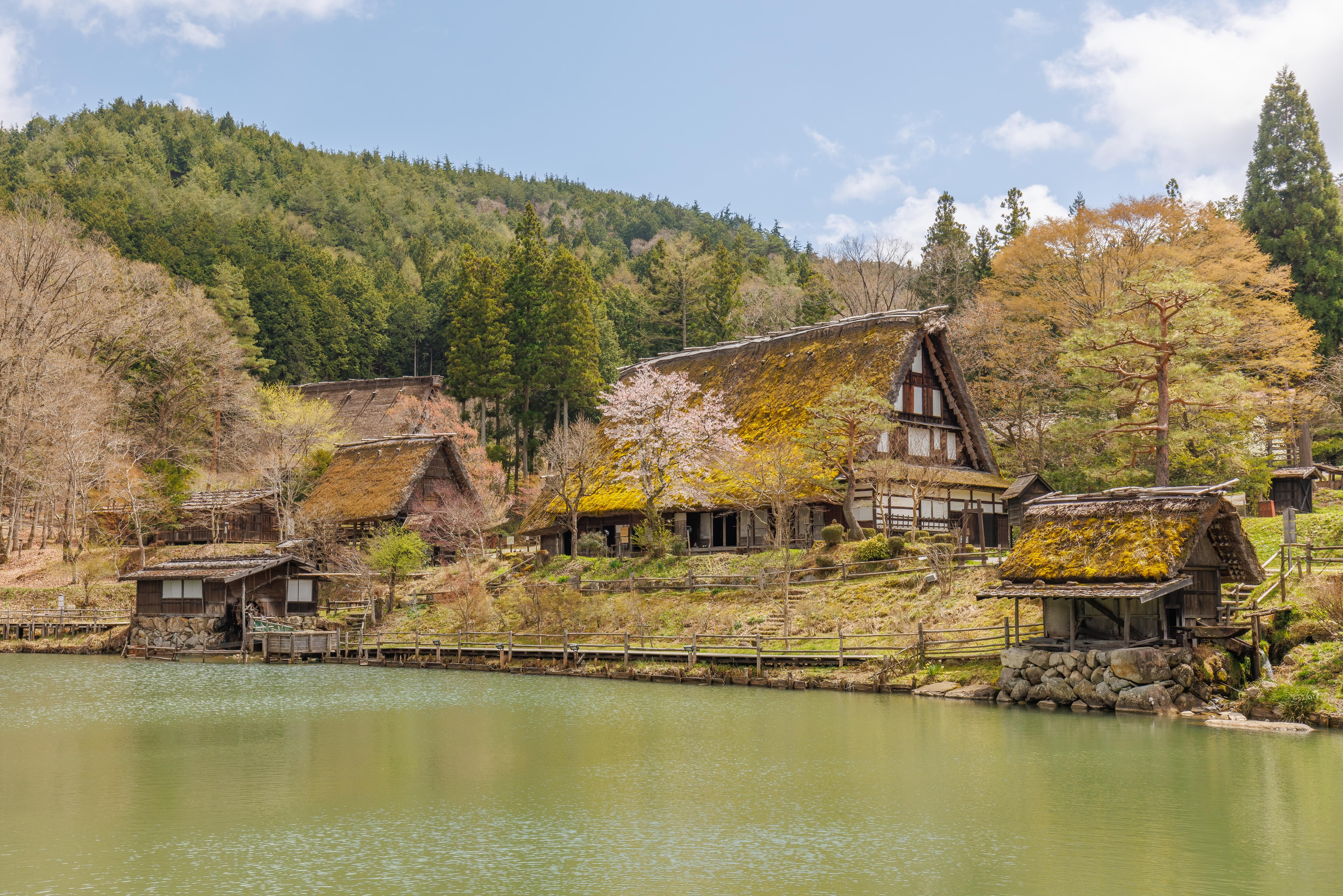We headed out in the morning on the JR Hida from Toyama to Takayama. We spent the morning at Hida no Sato, the Hida Folk Village. Afterwards, we headed to the historic area of Takayama to have a late lunch and to take a quick walk around before heading back to Toyama.
Hida no Sato
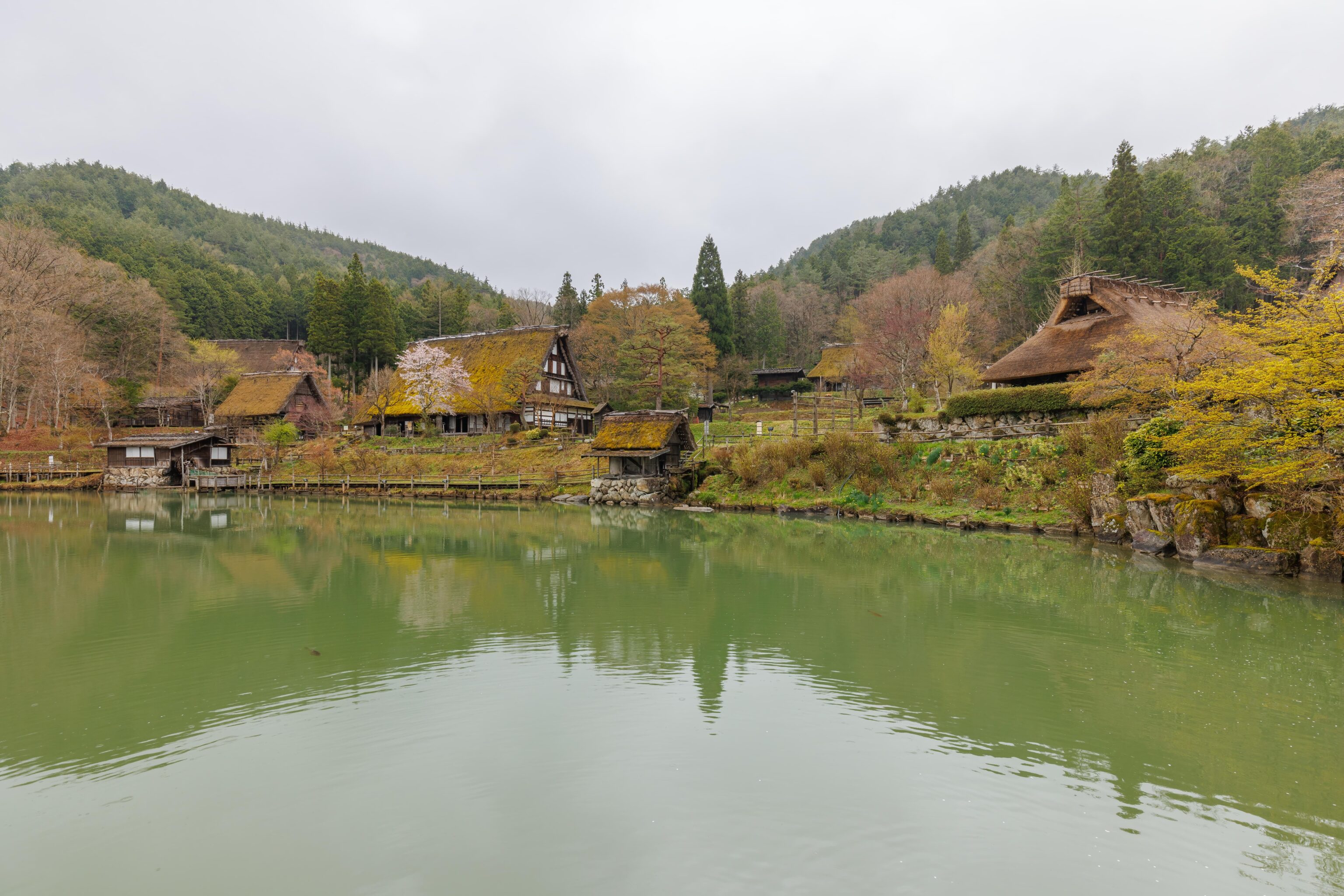
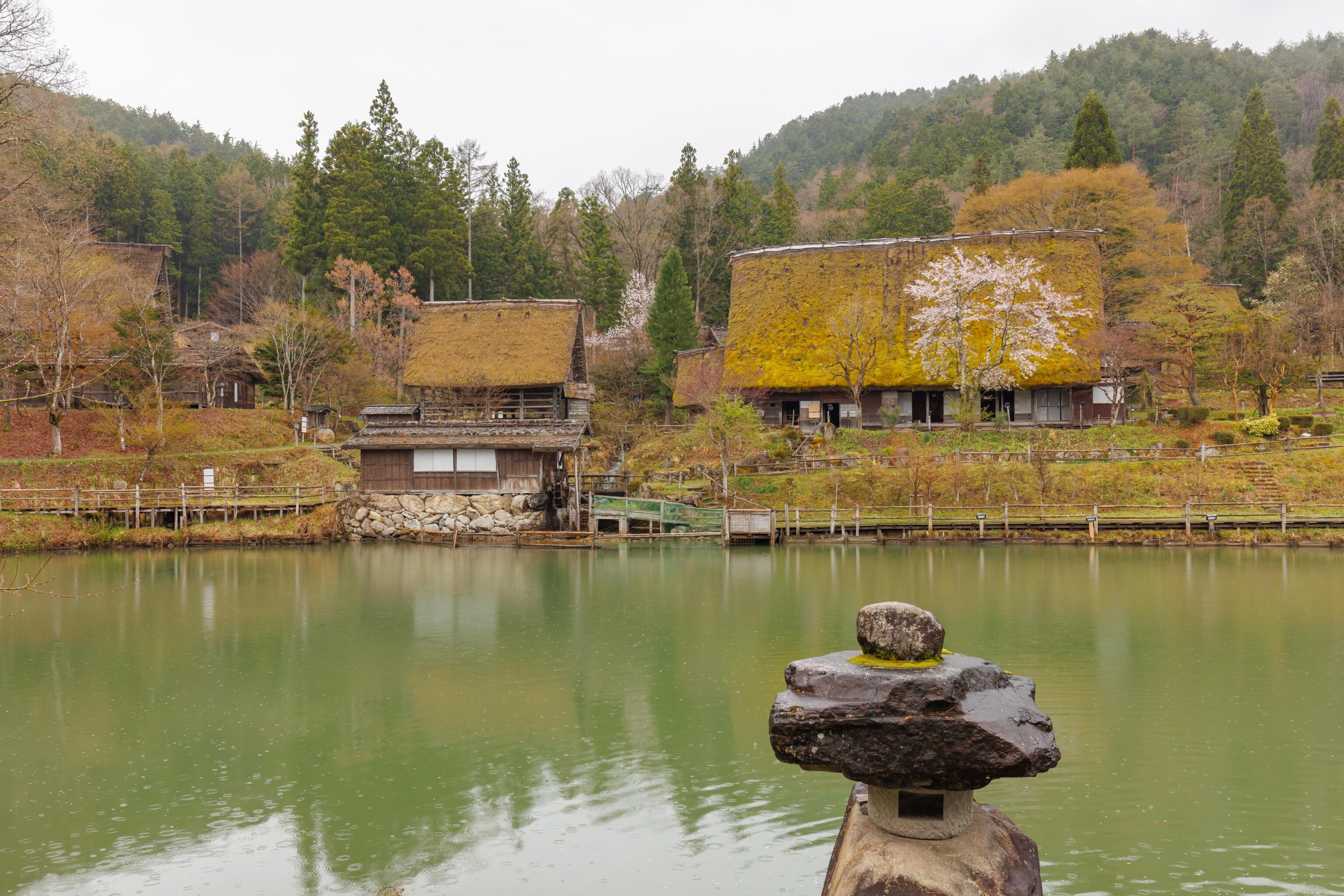
Upon entering Hida no Sato, the first thing we noticed was Goami Pond. The historic village buildings were on the opposite side on the side of a hill. Not all the structures were immediately visible as they are hidden by trees or the larger buildings.
The museum’s English website is pretty terrible but they do have a map.
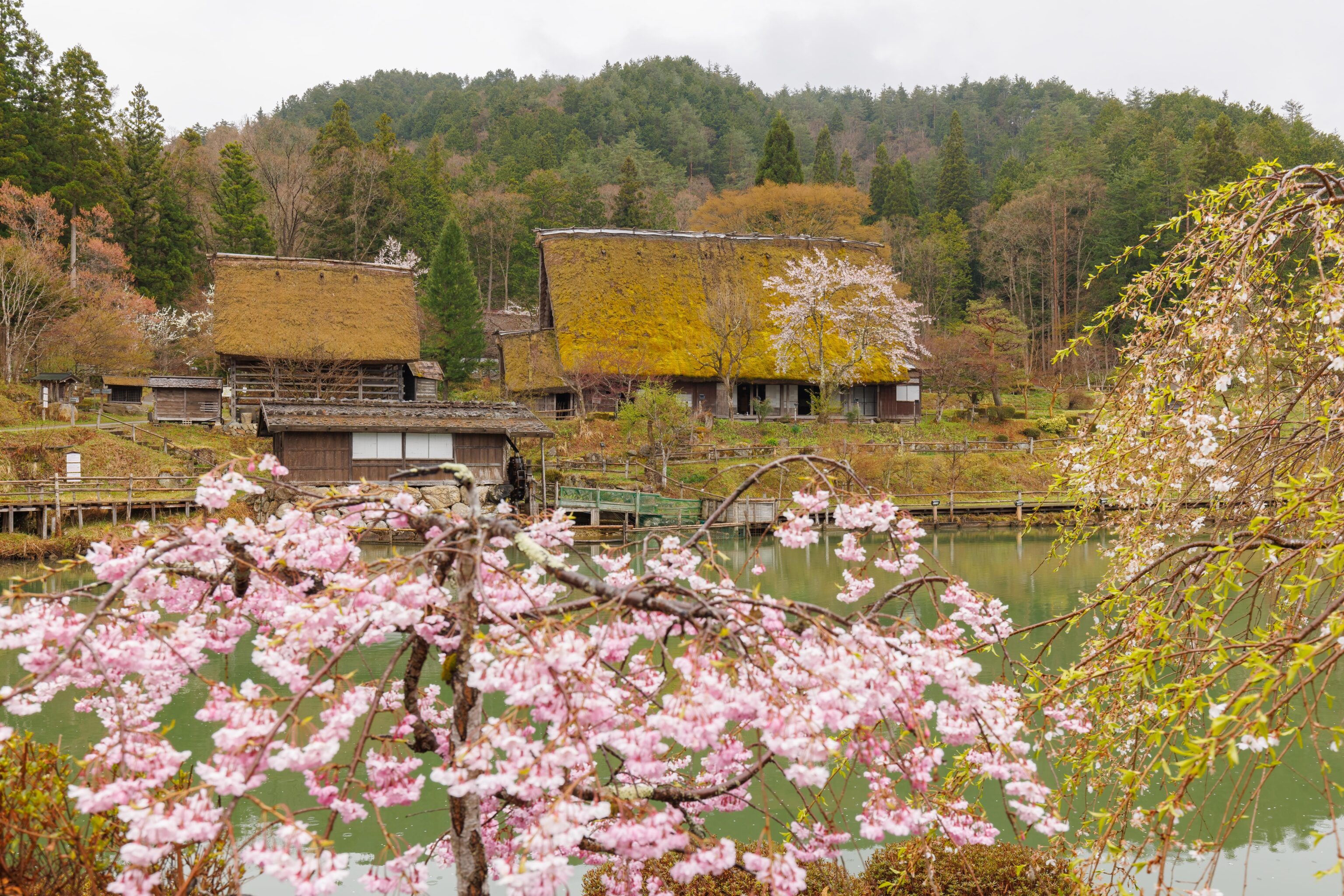
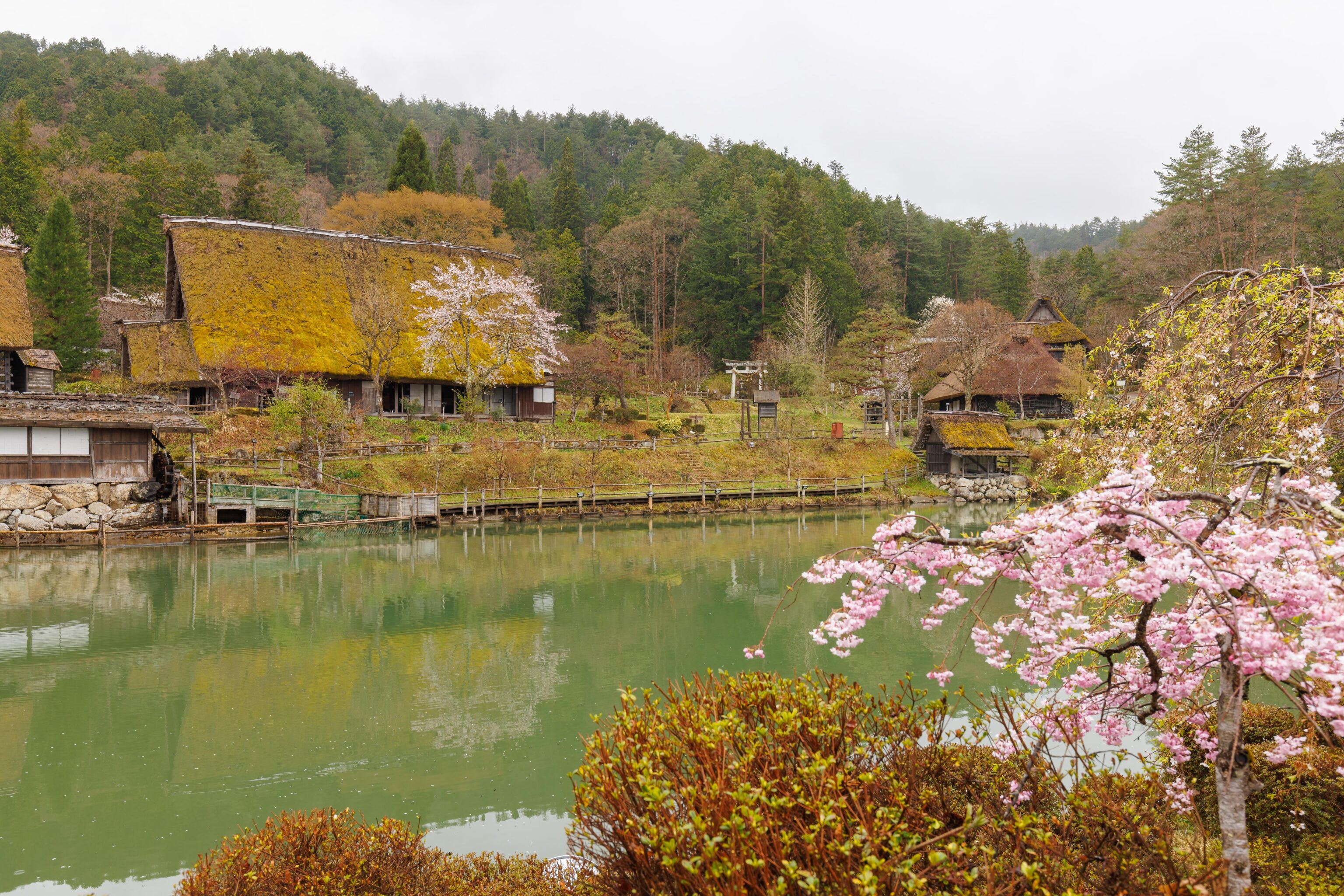
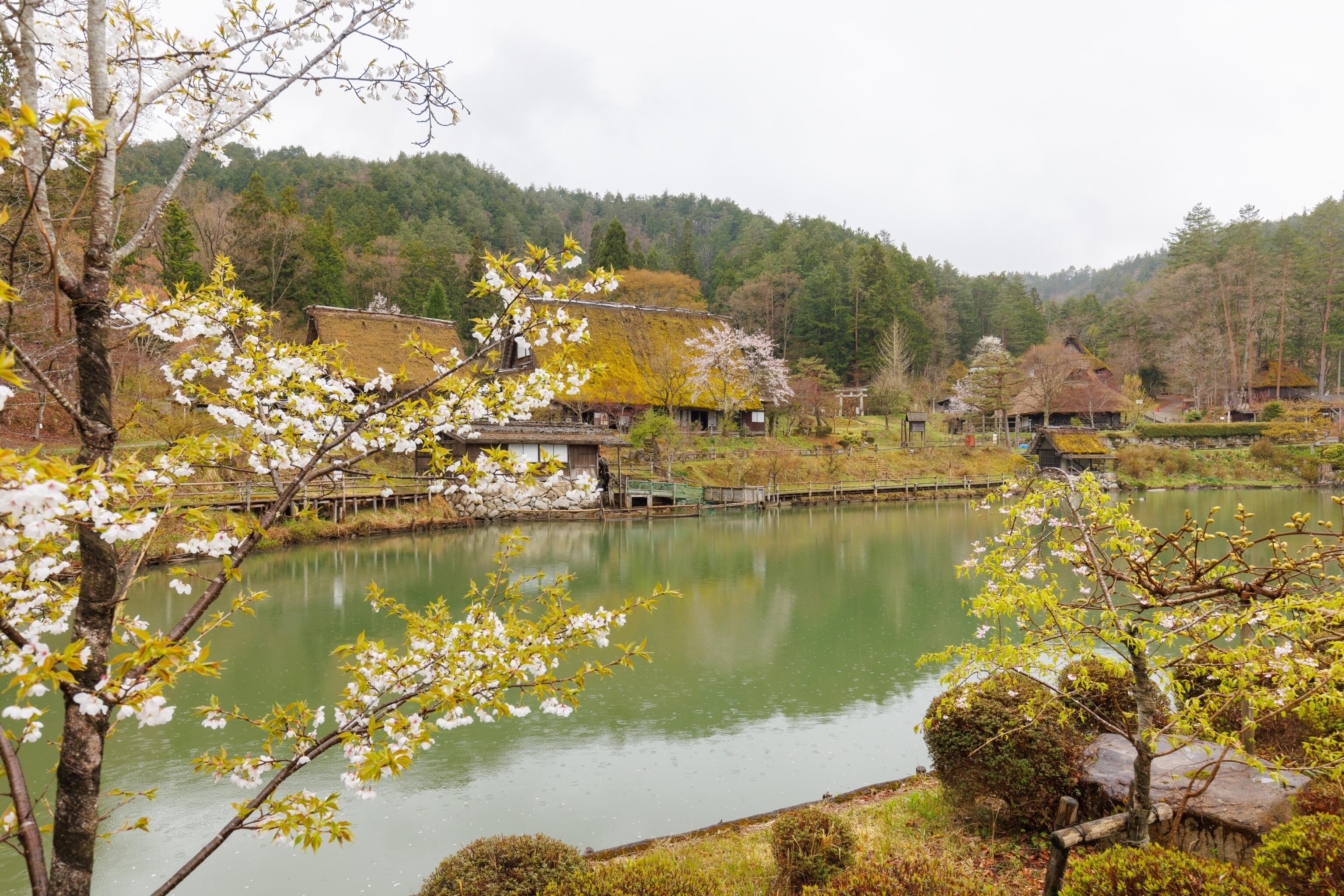
We saw a few flowers that were in various stages of bloom on the side of the pond. While it is generally past cherry blossom season in this part of Japan, we did see some cherry trees that still held some flowers. While on the train ride down, we saw a few trees that seemed to be in peak bloom but many more that appeared to be done for the season.
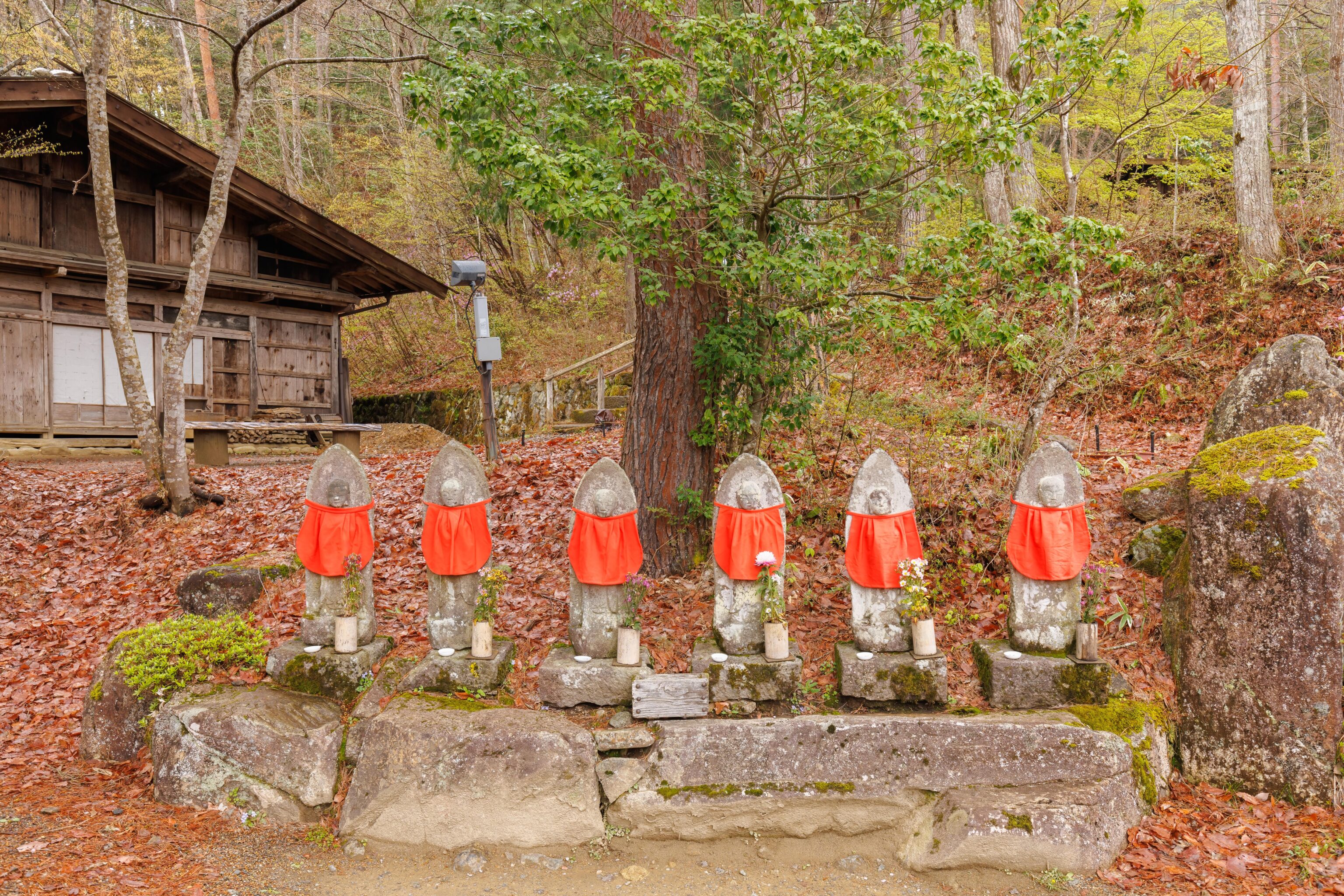
We passed by these six statues on our way to the first building, Arai’s House.
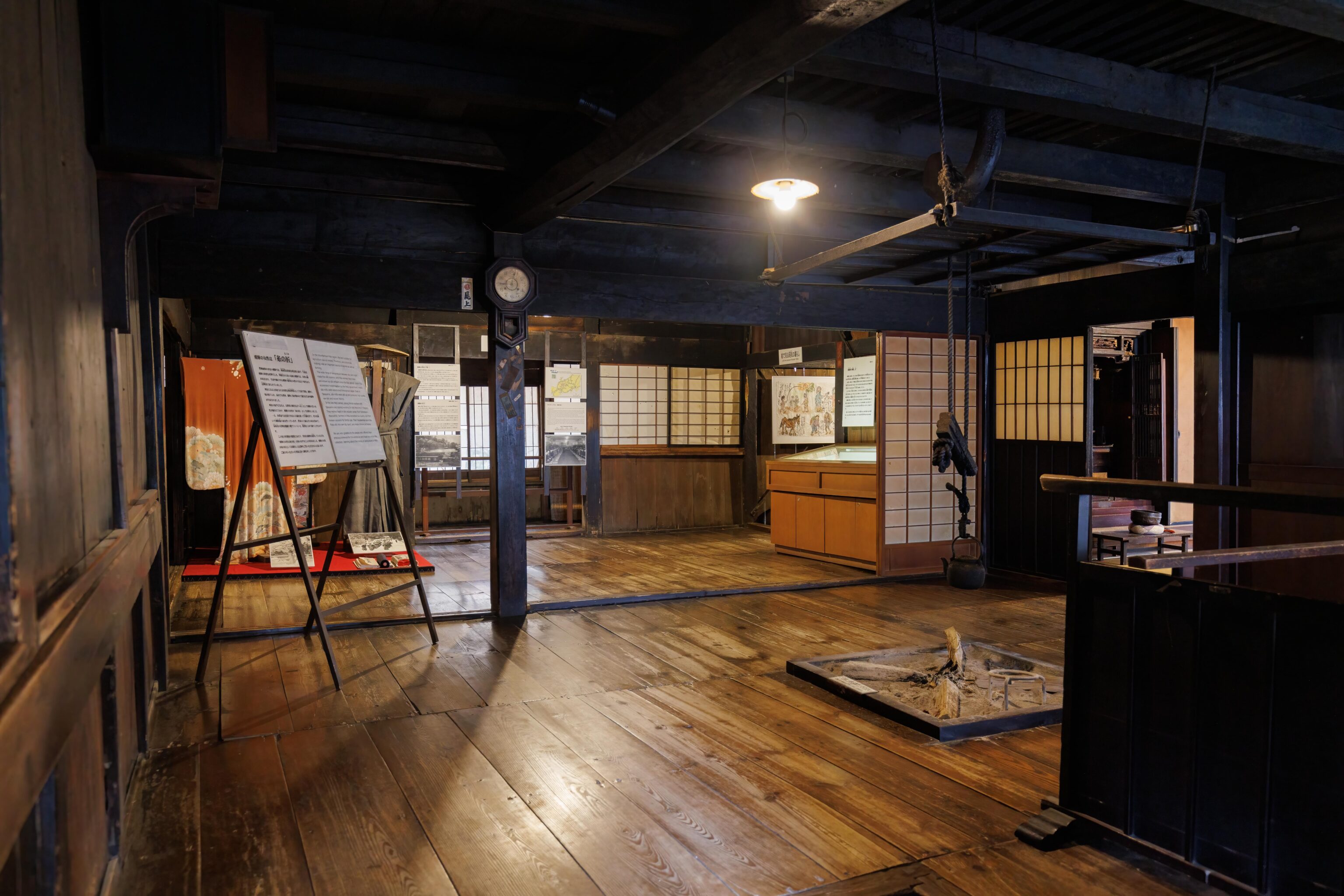
The houses in Hida no Sato are somewhat setup as they would have appeared when in use but also contain informational signs and themed displays, depending on the building. Outdoor shoes cannot be worn on any of the wooden floors.
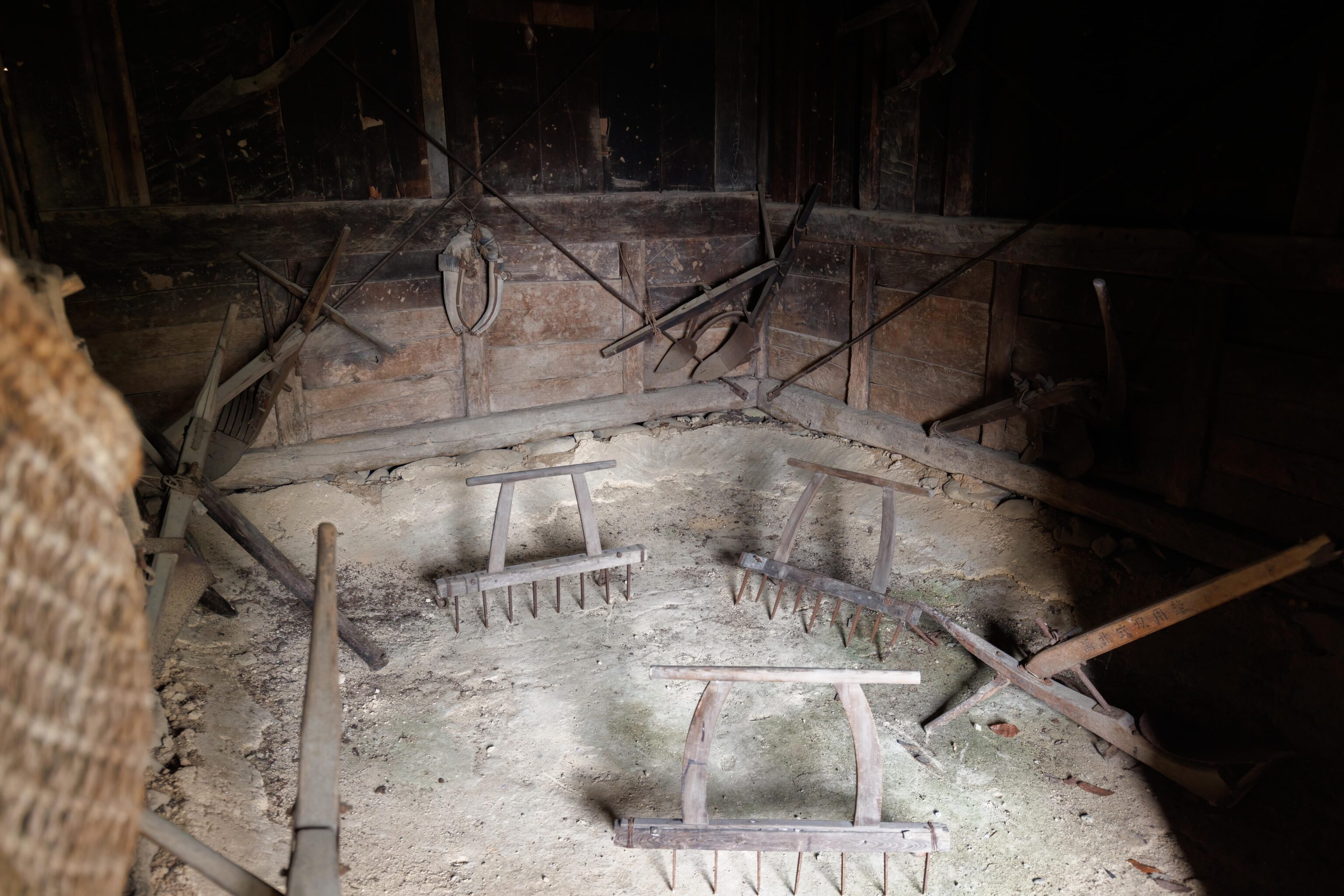
There were also various unfloored areas, mostly used for storage or other work.
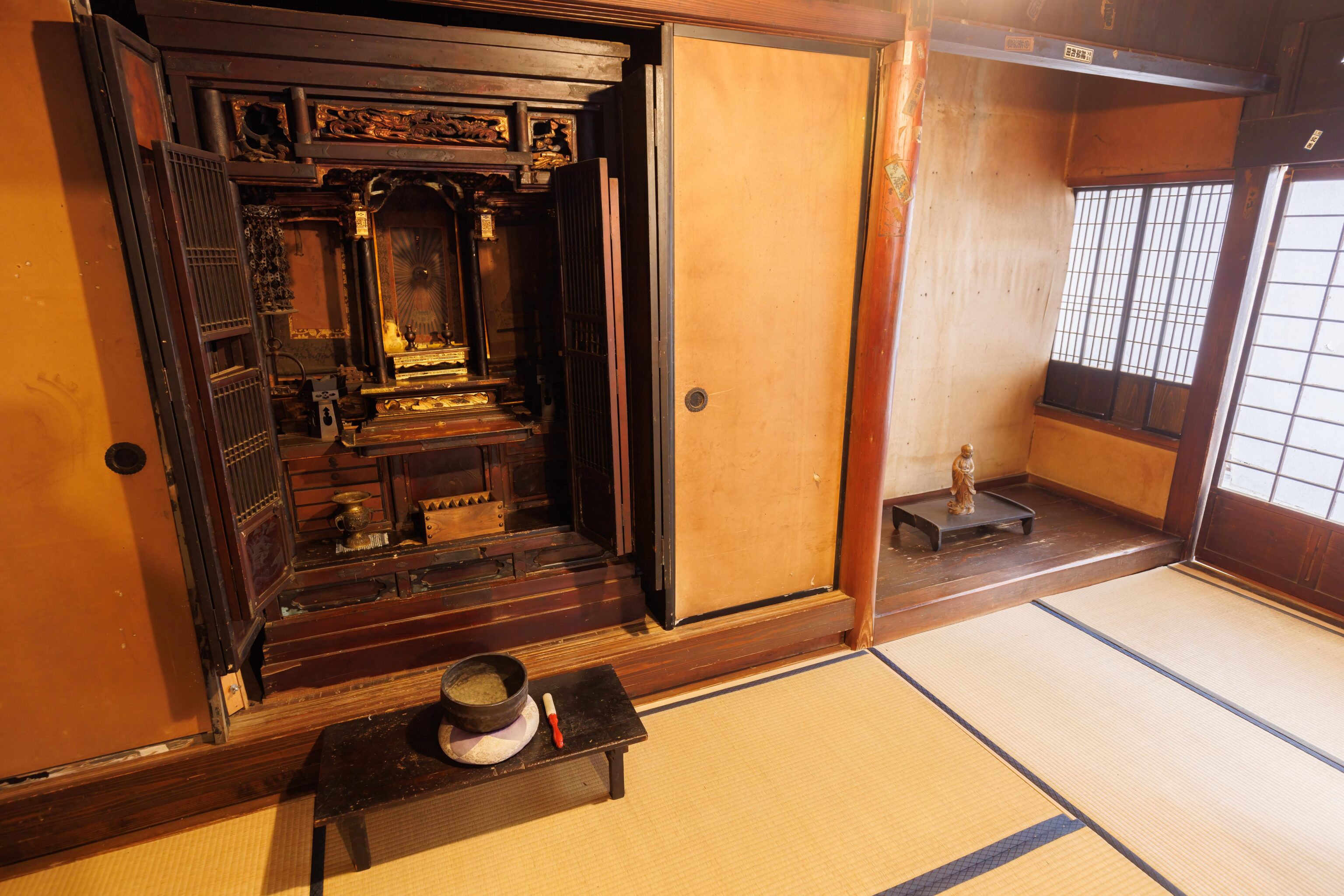
It seems most of the houses contained some sort of small shrine.
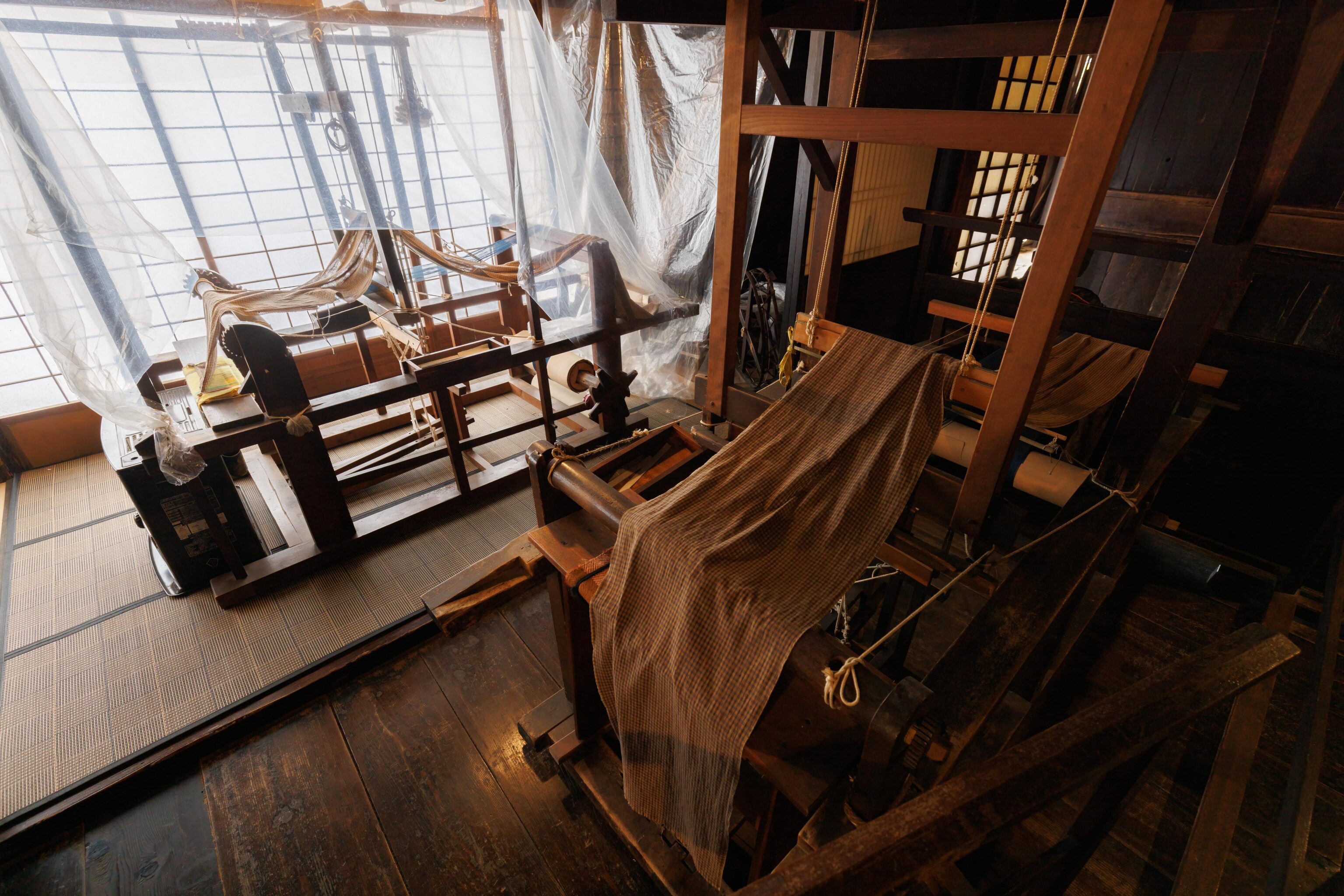
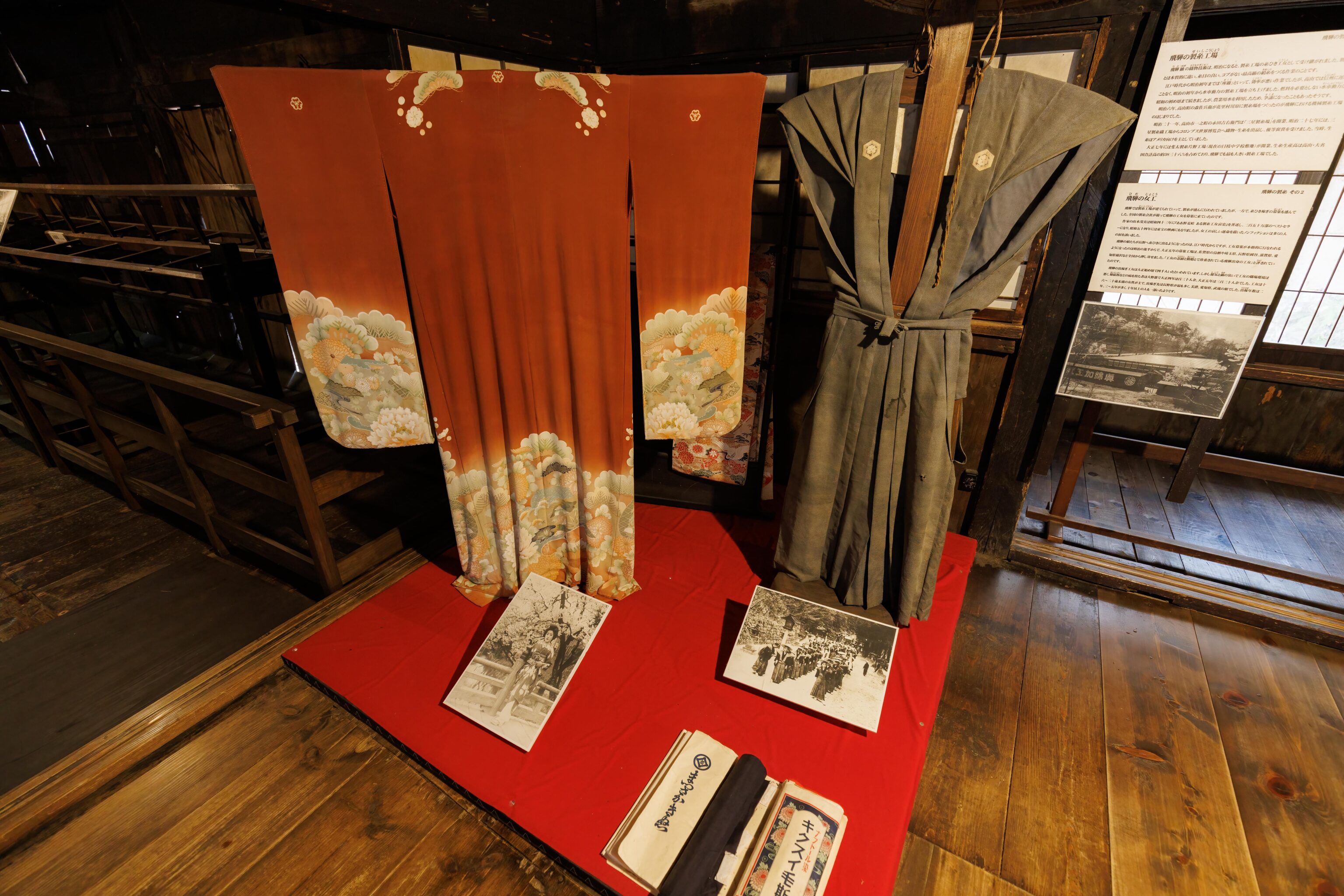
This first house, Arai’s House, had tools and machines used for weaving silk as well as two examples of clothing. Silk weaving was an important activity here in Takayama.
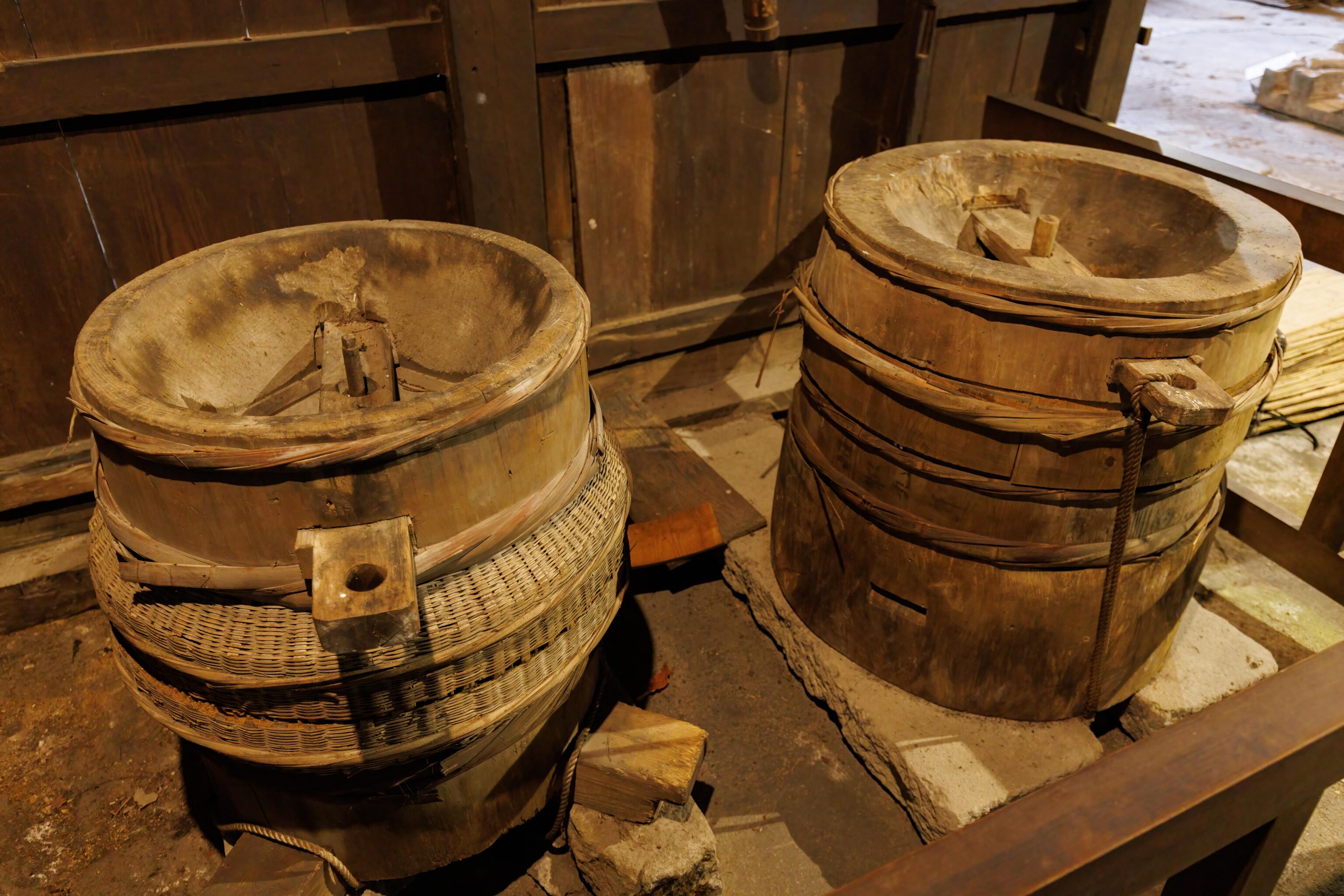
These were used for grinding away rice husks.
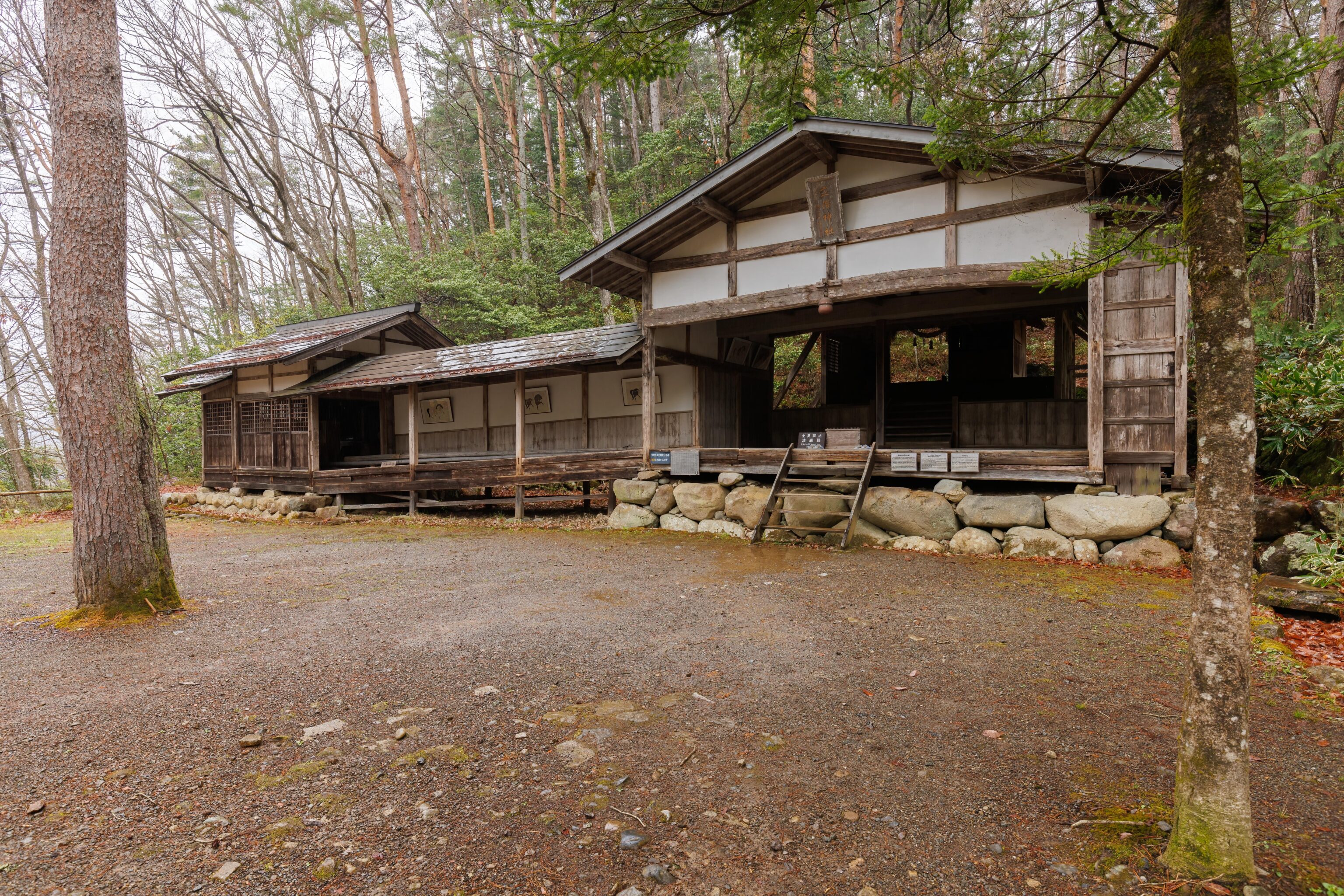
This building is the Tateho Shrine. According to the map, it is also used for festivals.
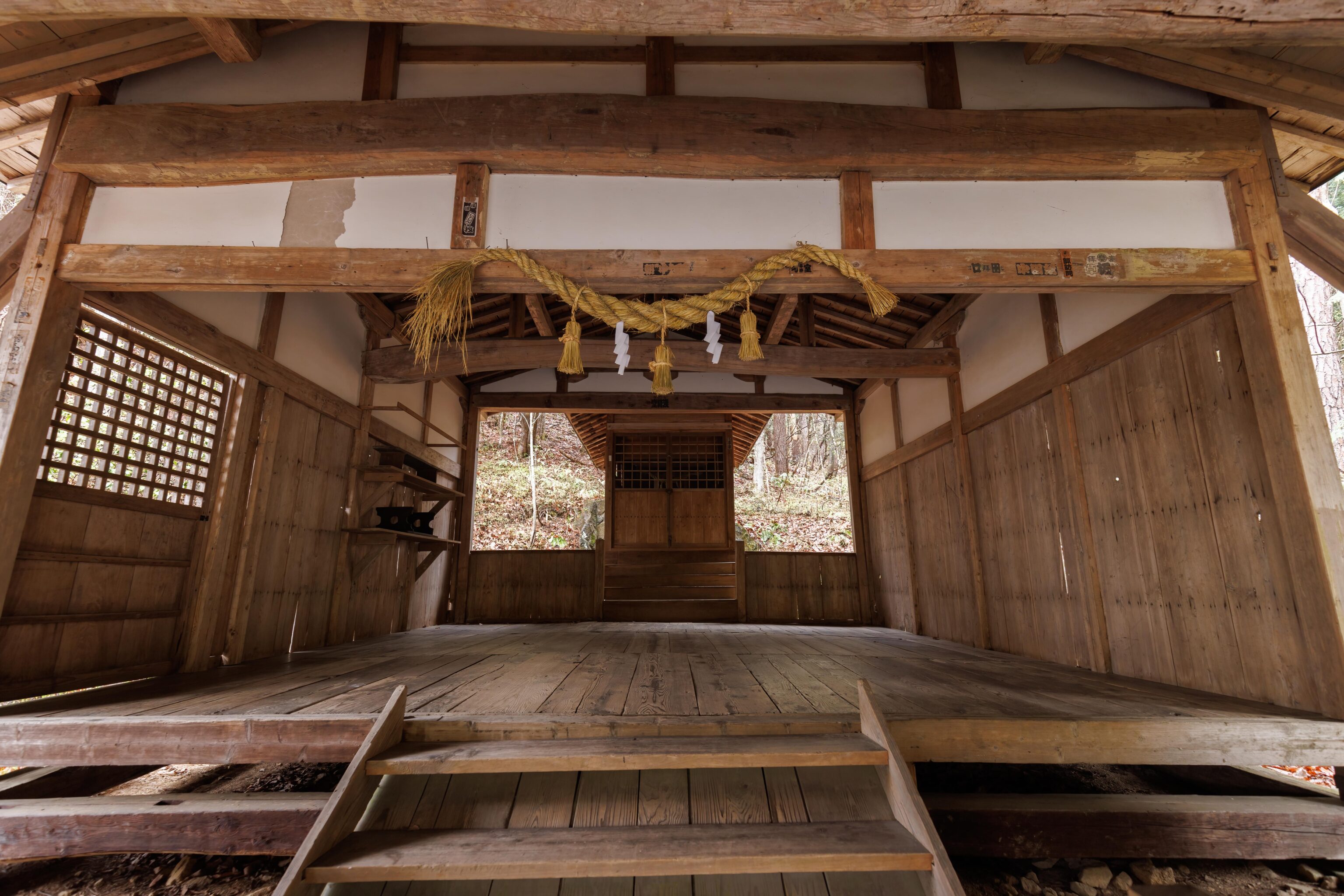
The building did seem to consist of a larger open area with this small shrine space in the rear. We rested here for awhile as it was pouring rain outside!
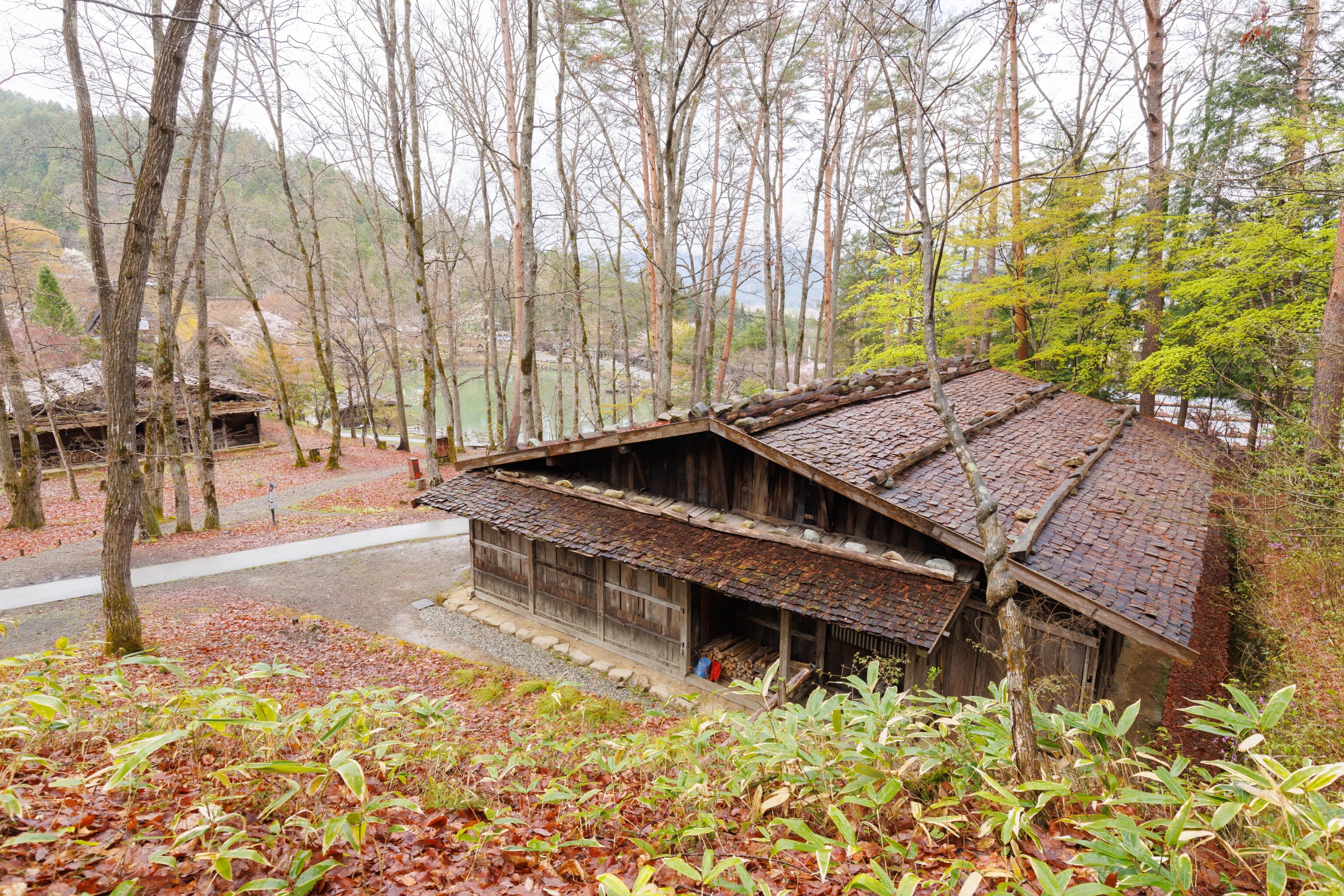
We noticed that rocks seemed to be used on all the building roofs. These seem to be to help to weigh down the roof to keep it in place.
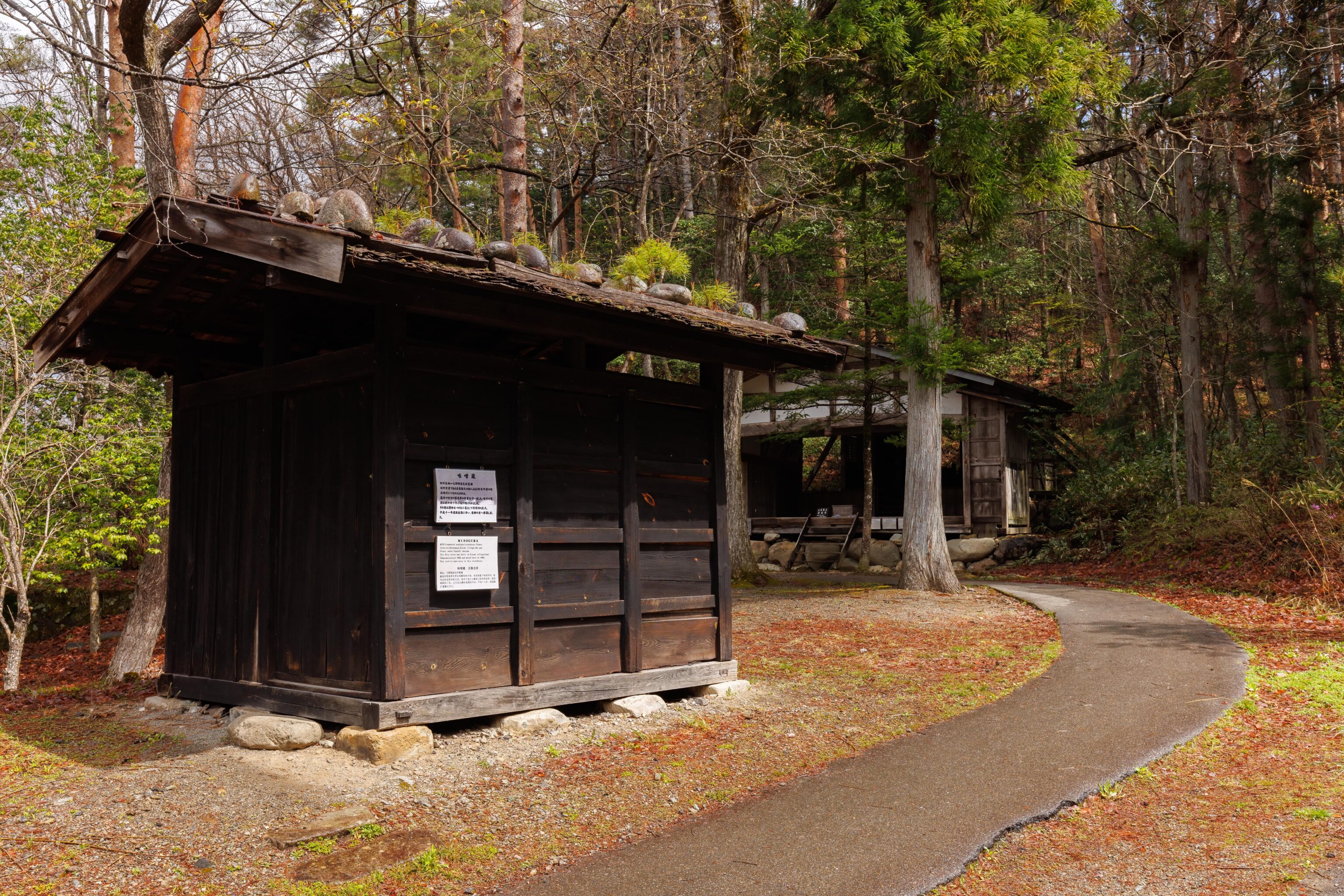
This little shed, also with rocks on is little roof, was used for storing miso.
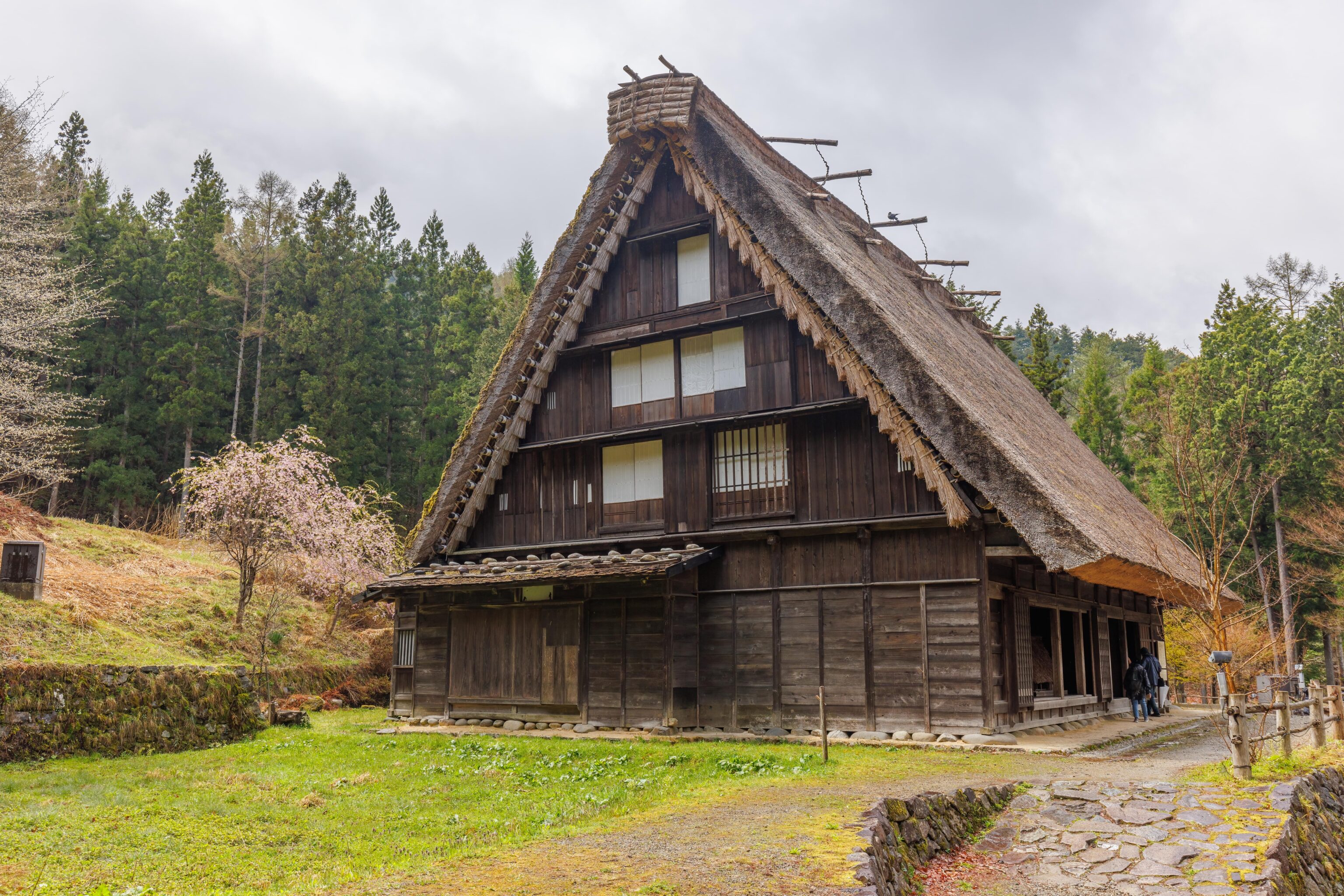
Some of the buildings were quite large with multiple floors. This one is Wakayama’s House.
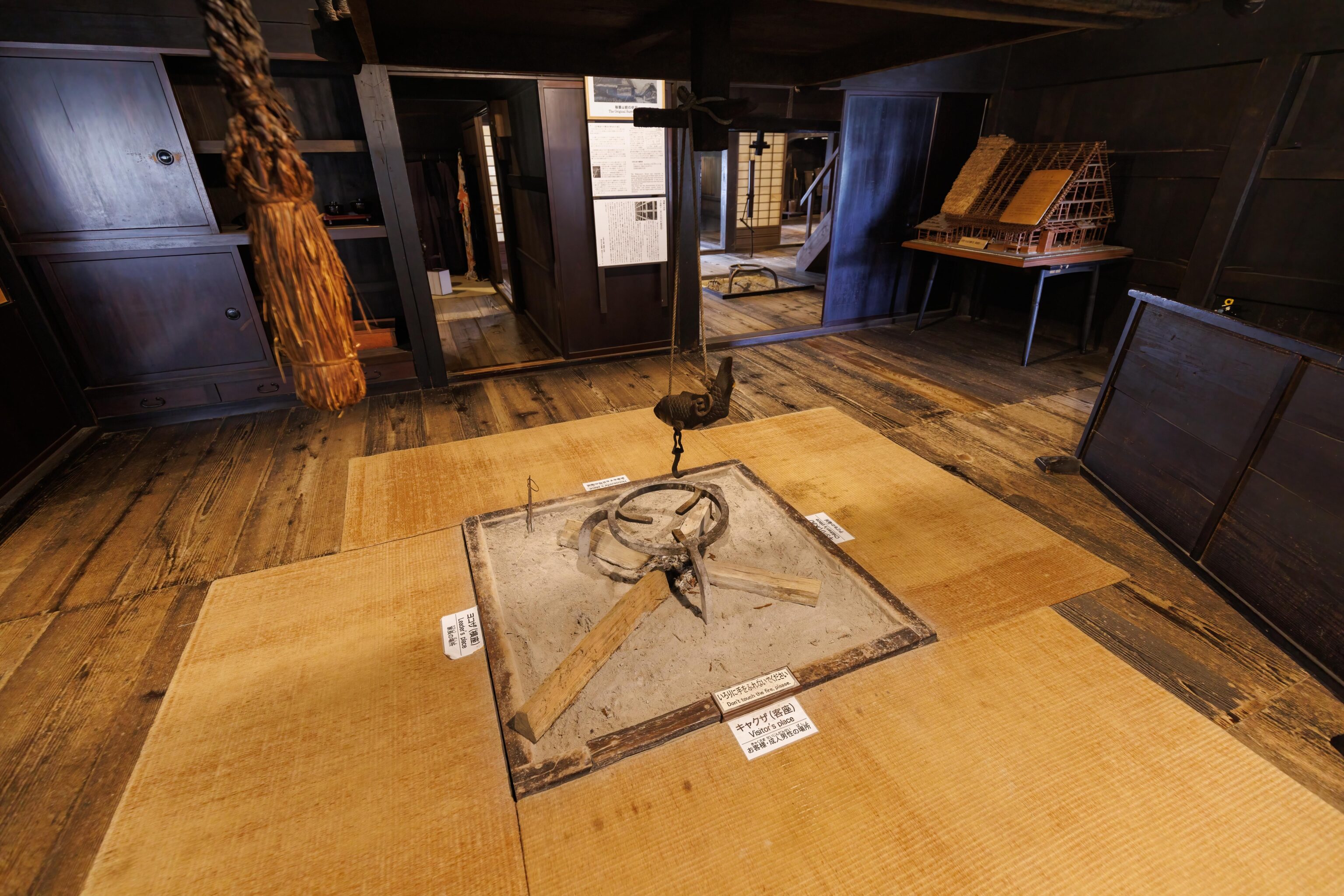
All the houses had some sort of hearth in the middle of a large room. This one was marked with seating positions.
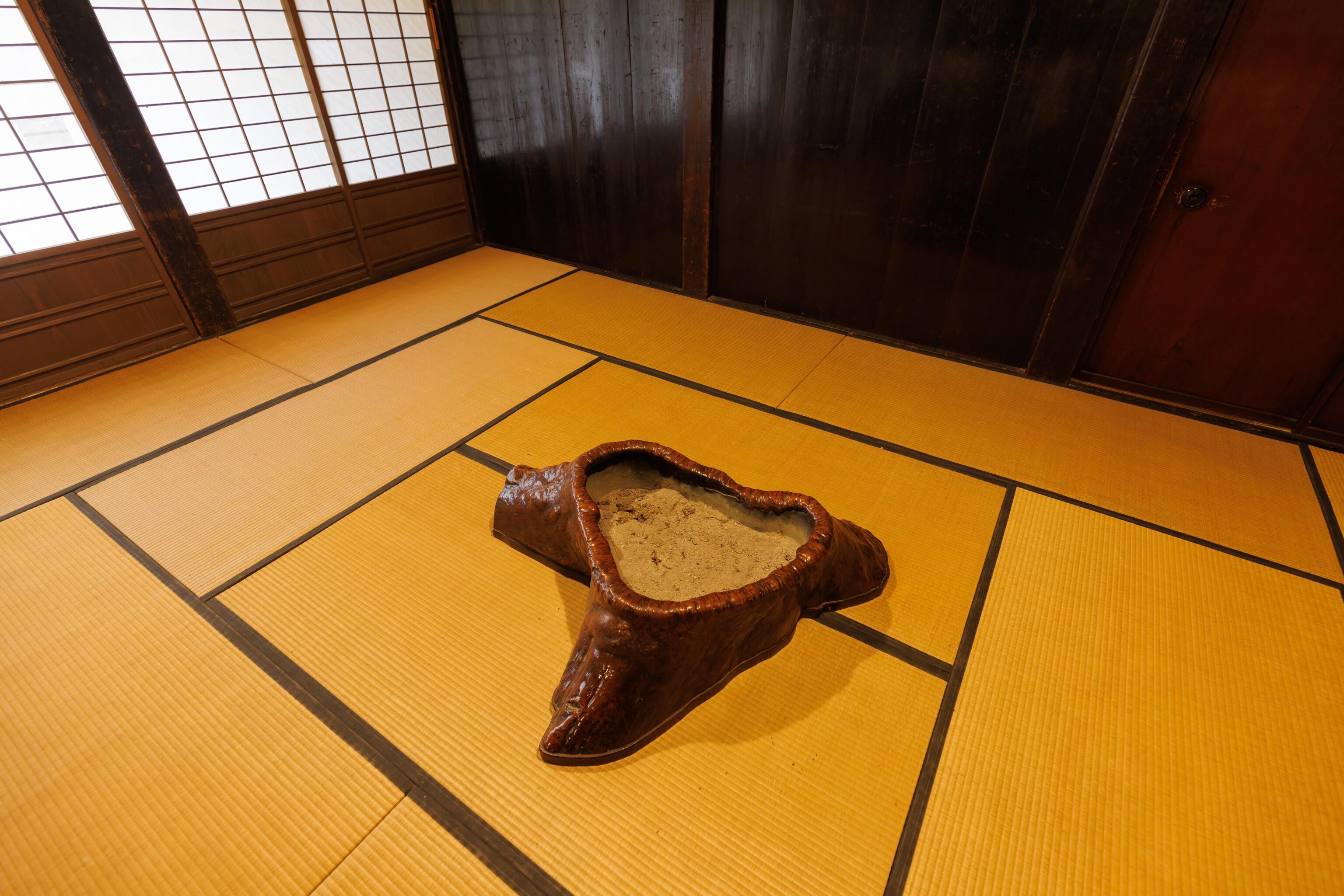
For burning incense?
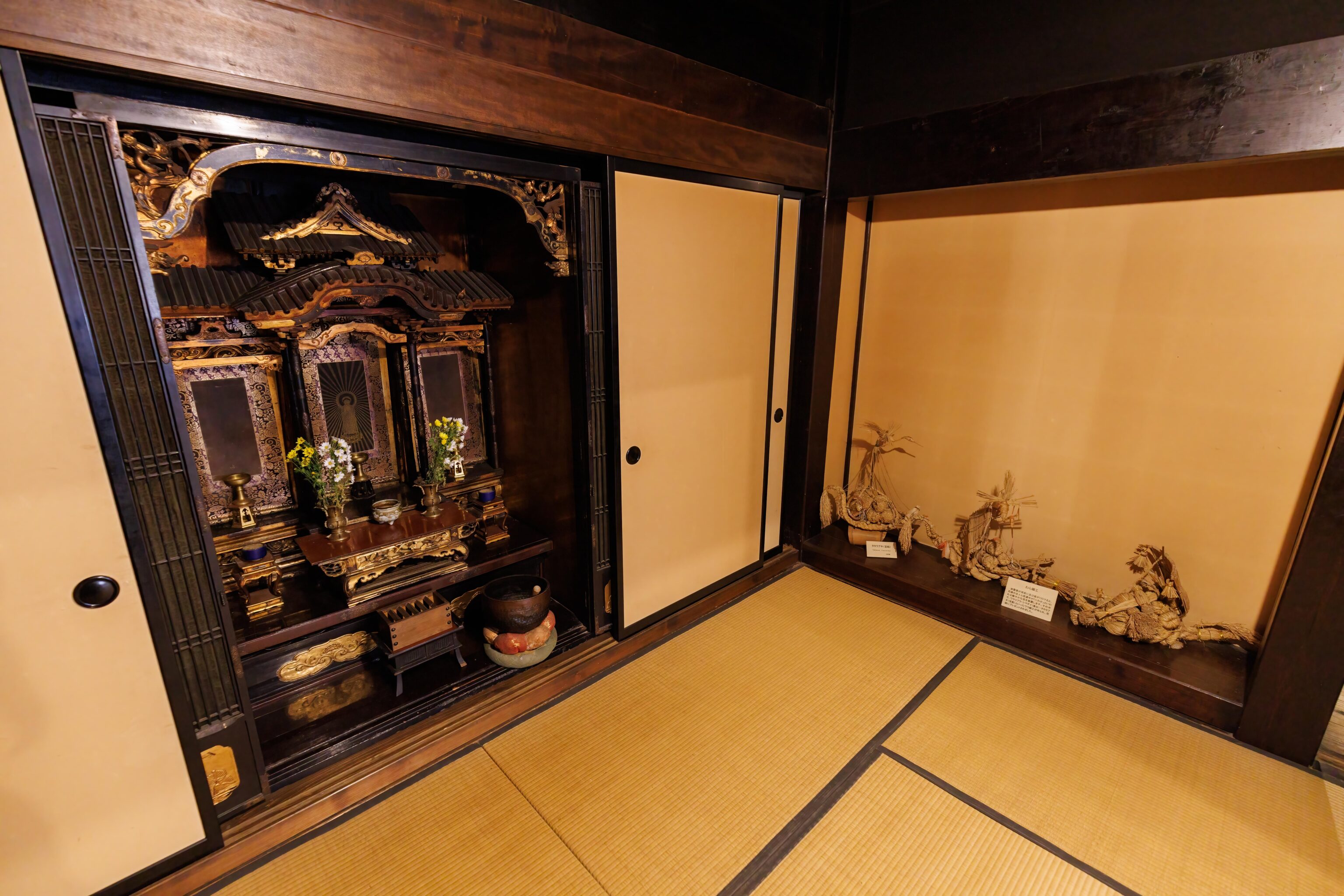
Another example of a shrine.
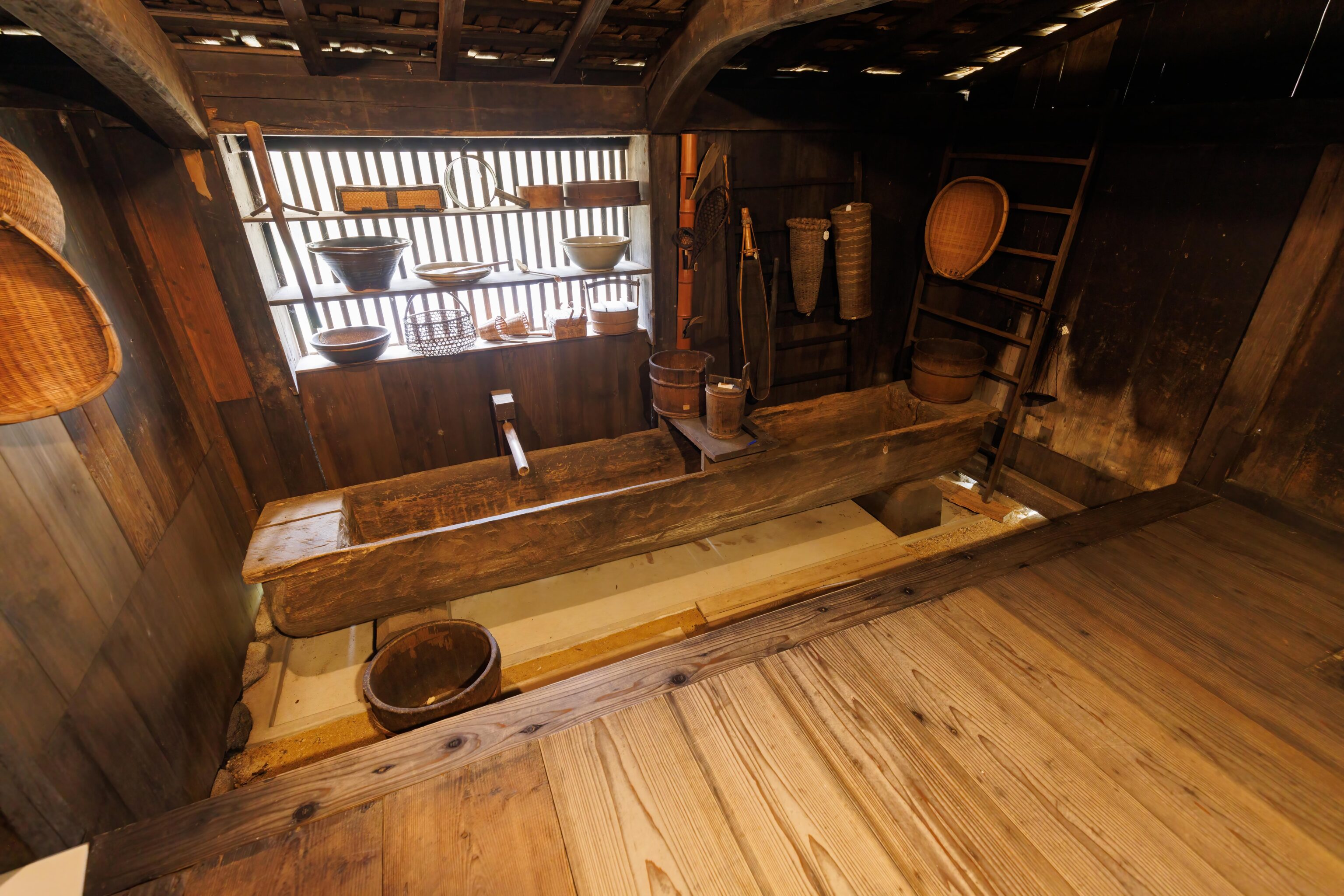
Some various tools used for preparing food as well as a long sink.
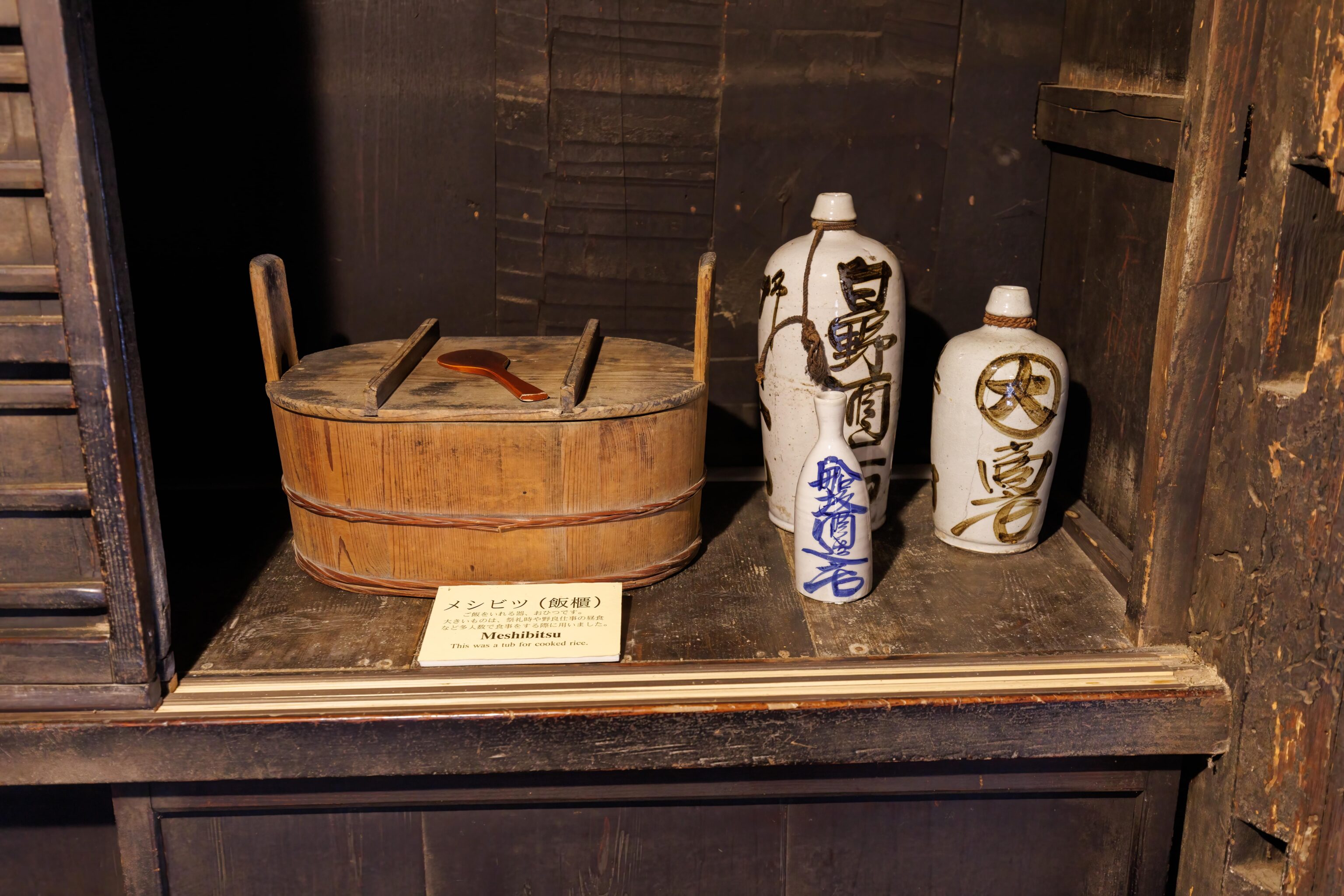
The tub to the left was used for storing cooked rice.
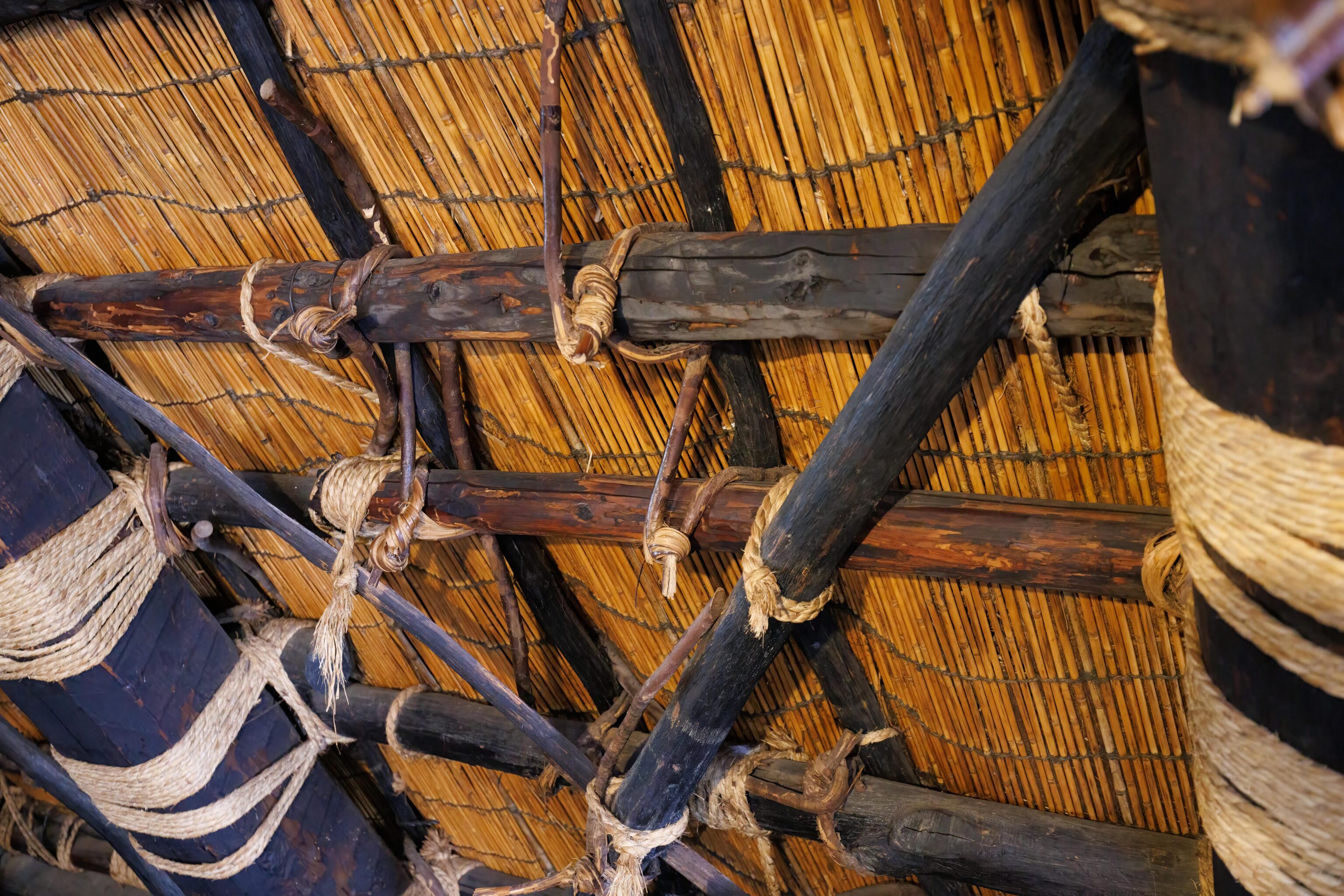
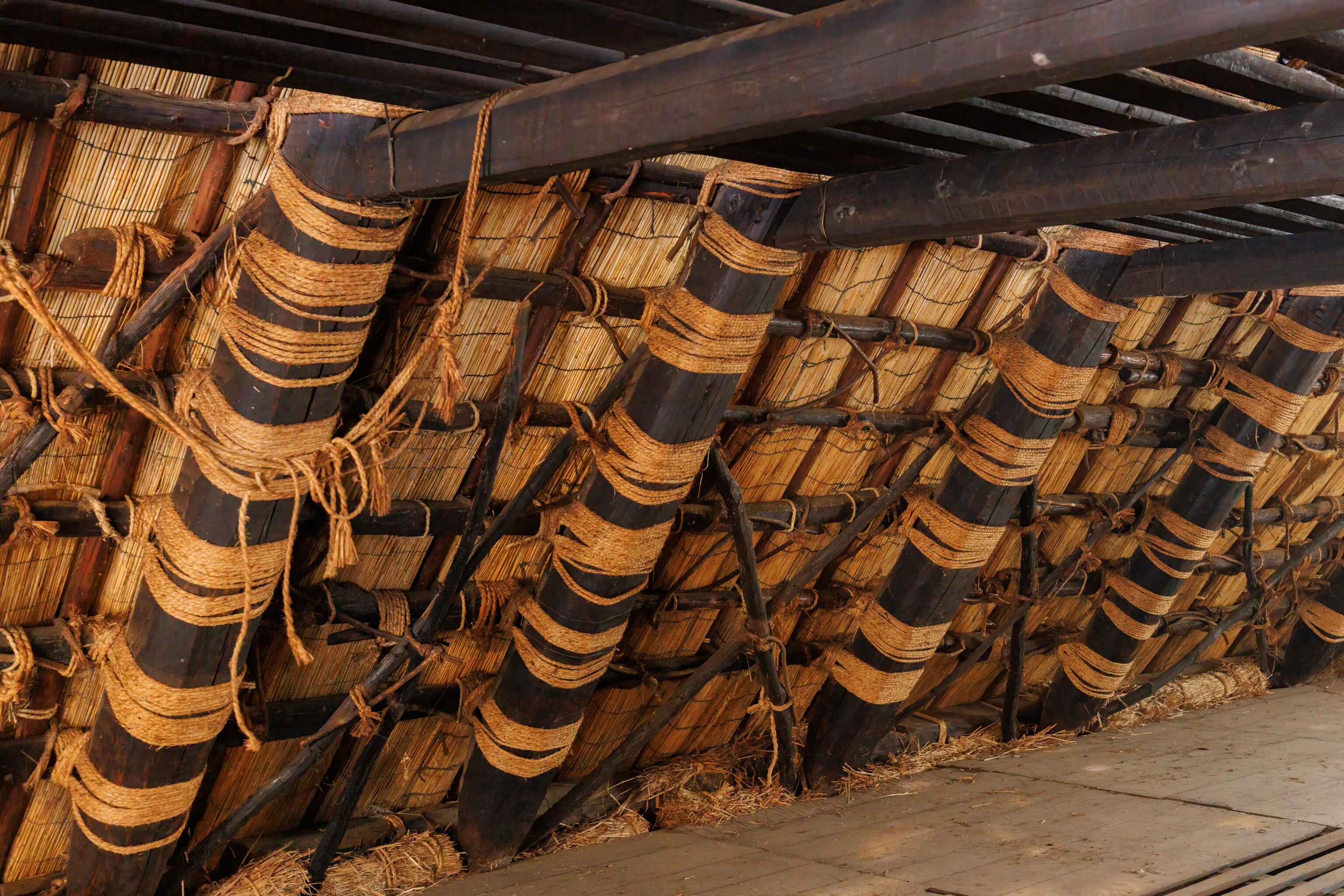
The larger buildings showed how the underside of a thatched roof looks from the inside.
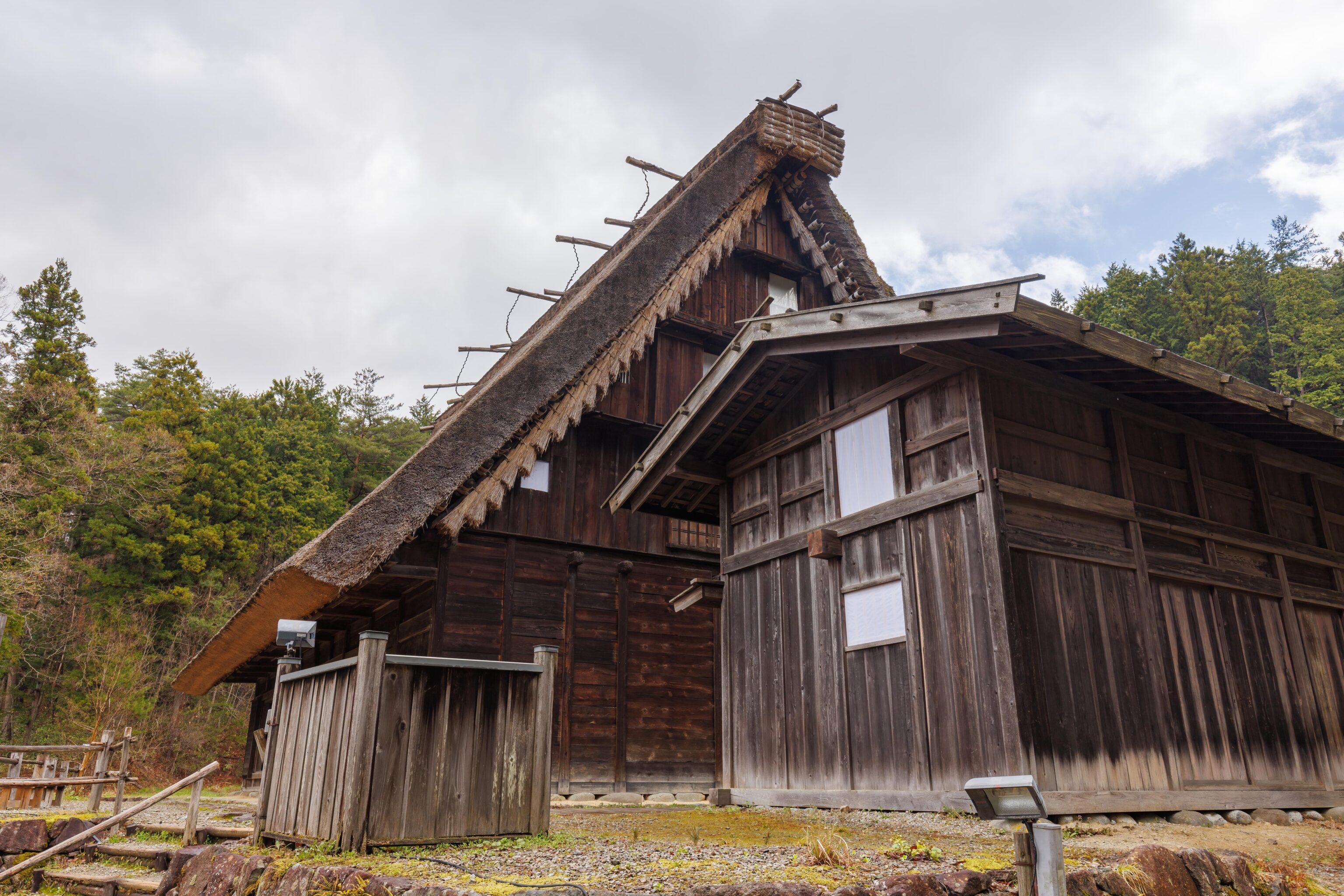
There were both shingled roofs as well as thatched roofs like this one.
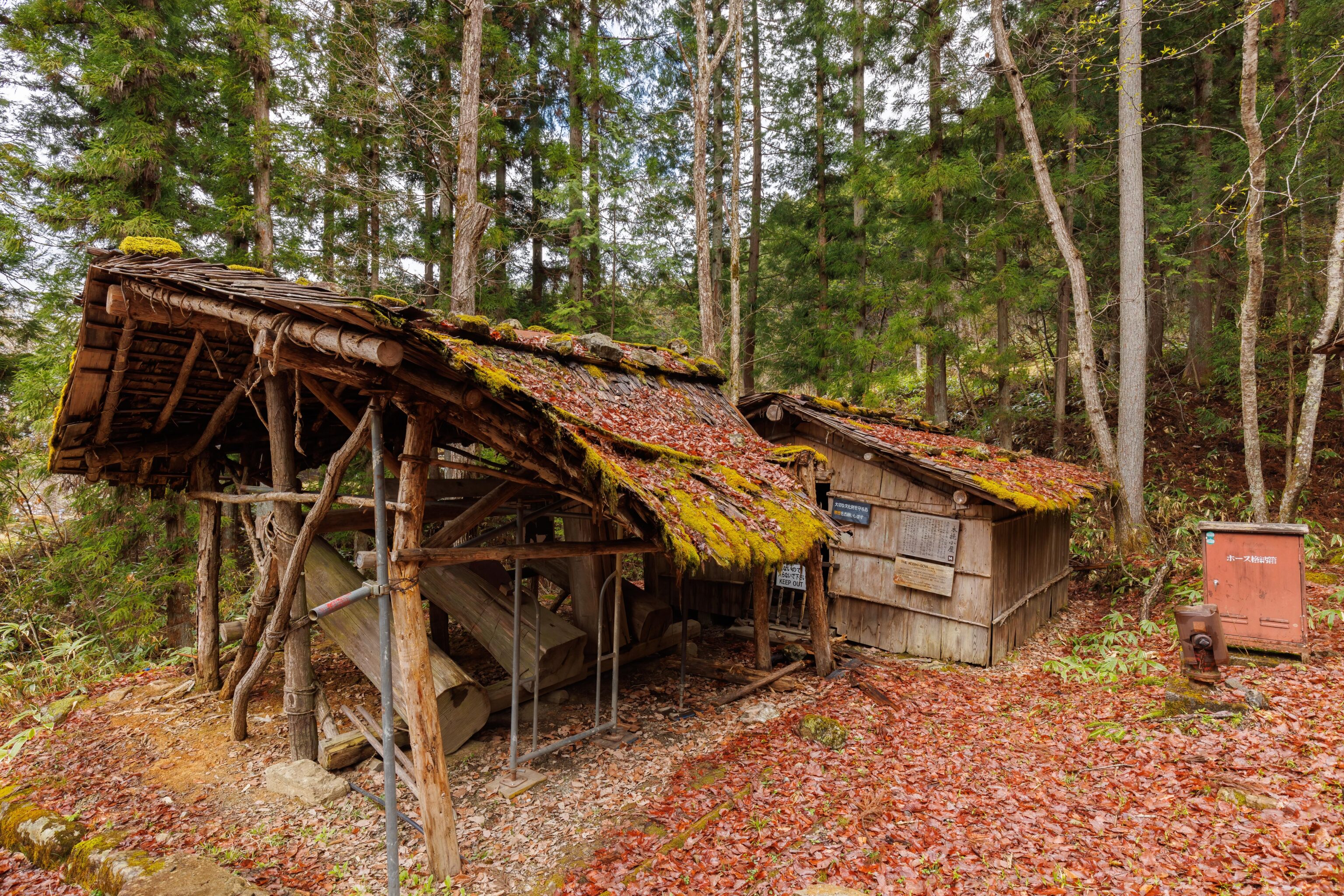

These buildings were used for wood cutting and working. They weren’t accessible during our visit.
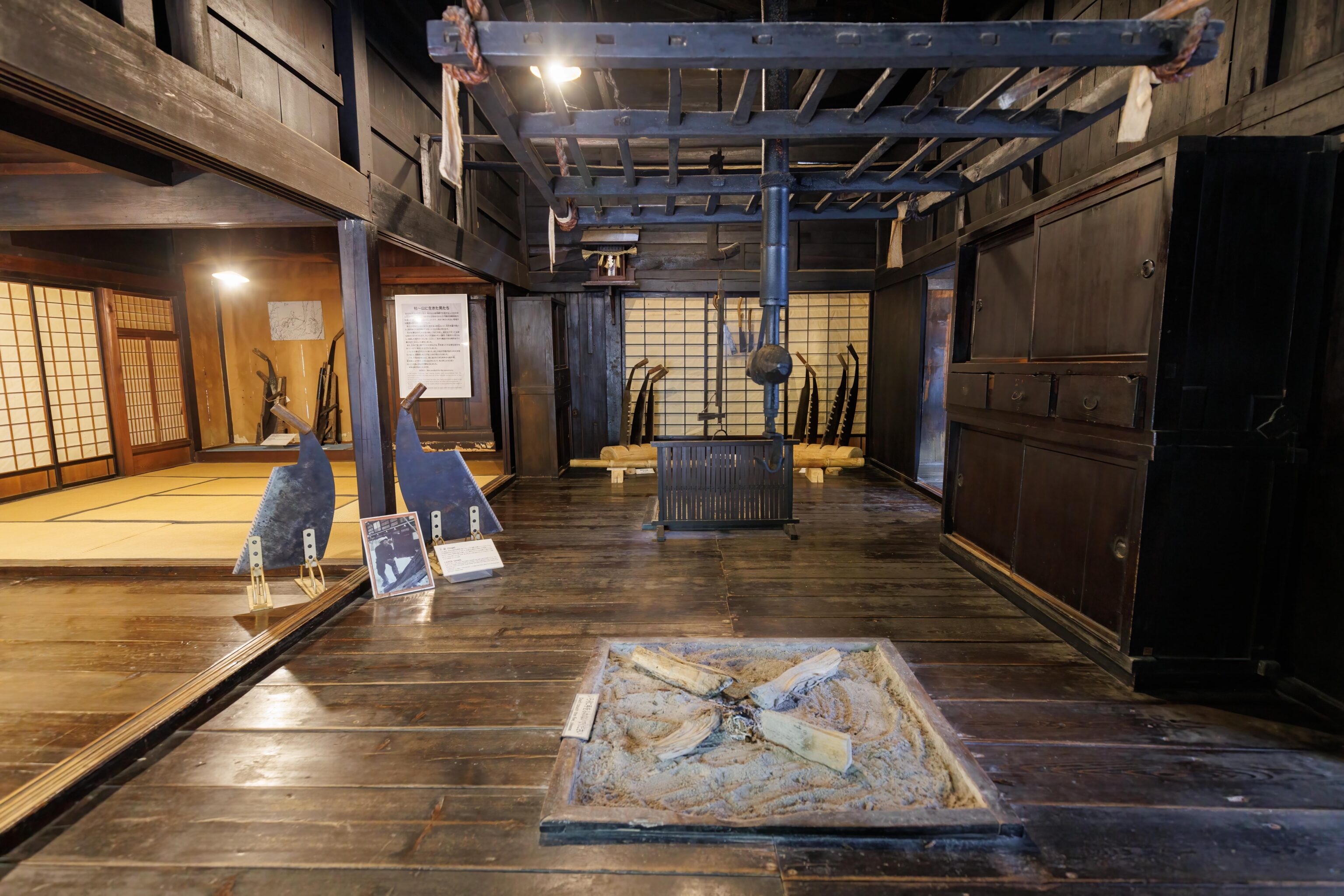
The inside of another house, maybe Ohno’s House? We didn’t record the building we were in for the interior photos so it is up to memory and logged GPS coordinates.
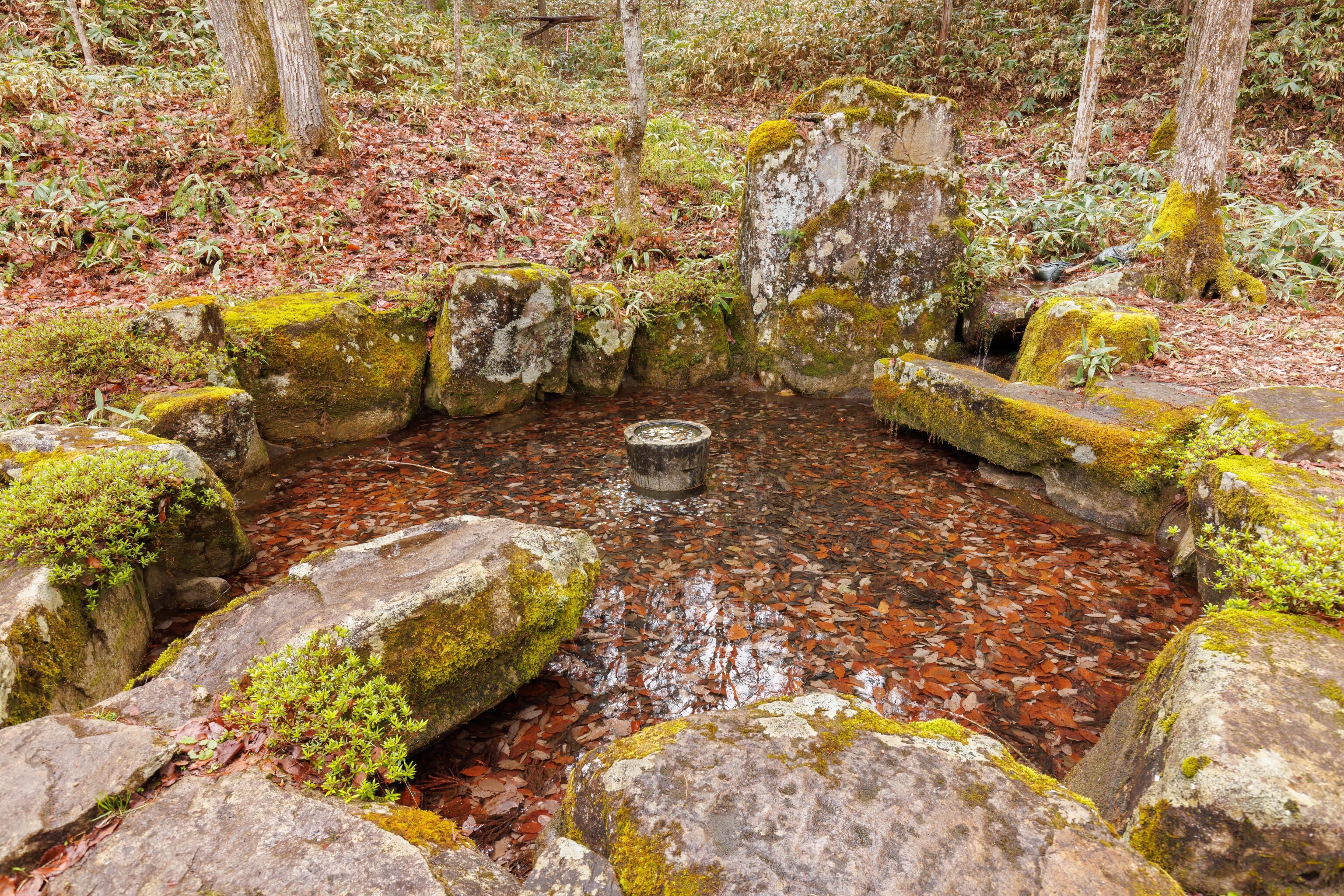
A small pond behind the house. It was used for prayers. In modern times, something similar seems to be happening with thrown coins.
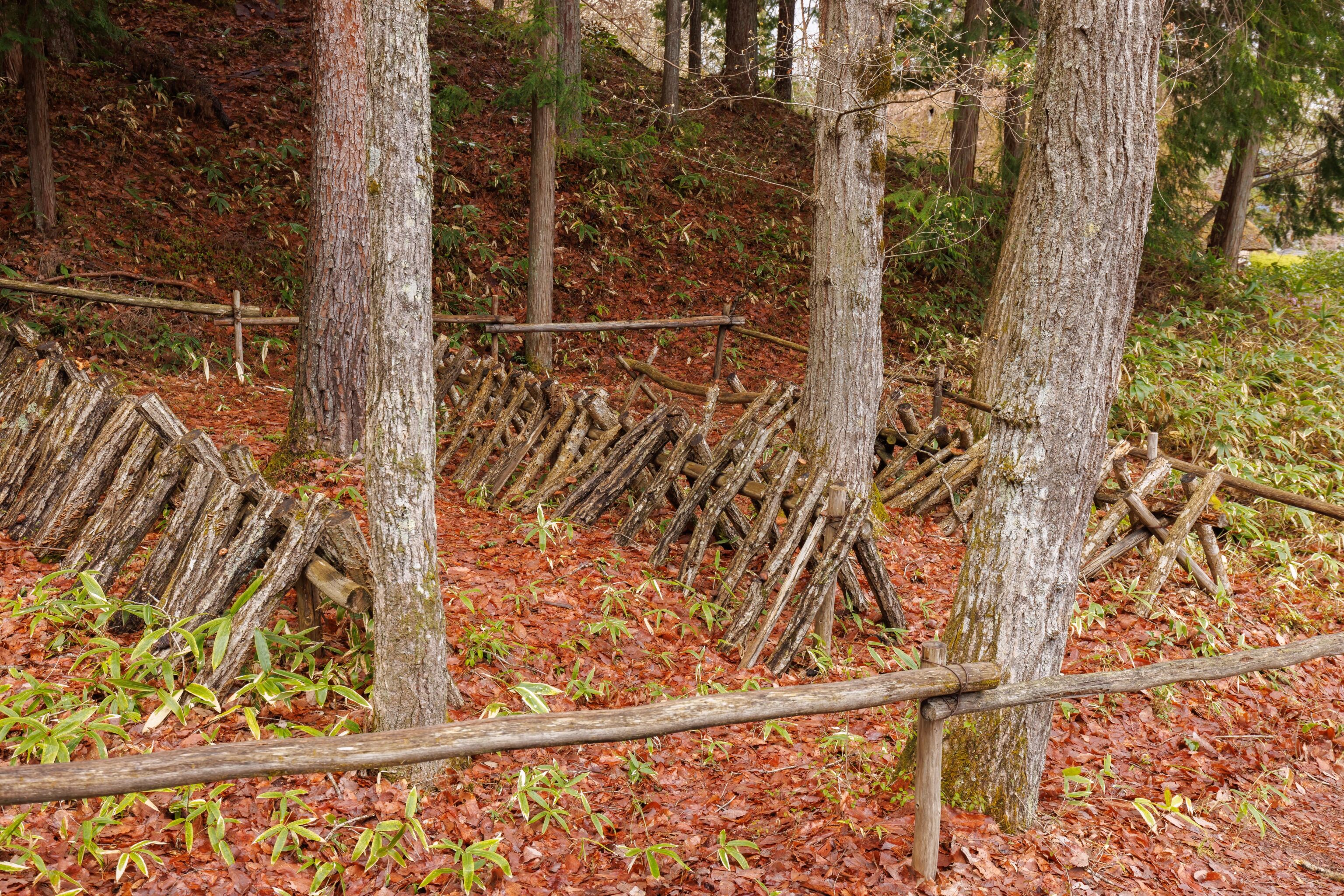
These pieces of wood were used to grow mushrooms.
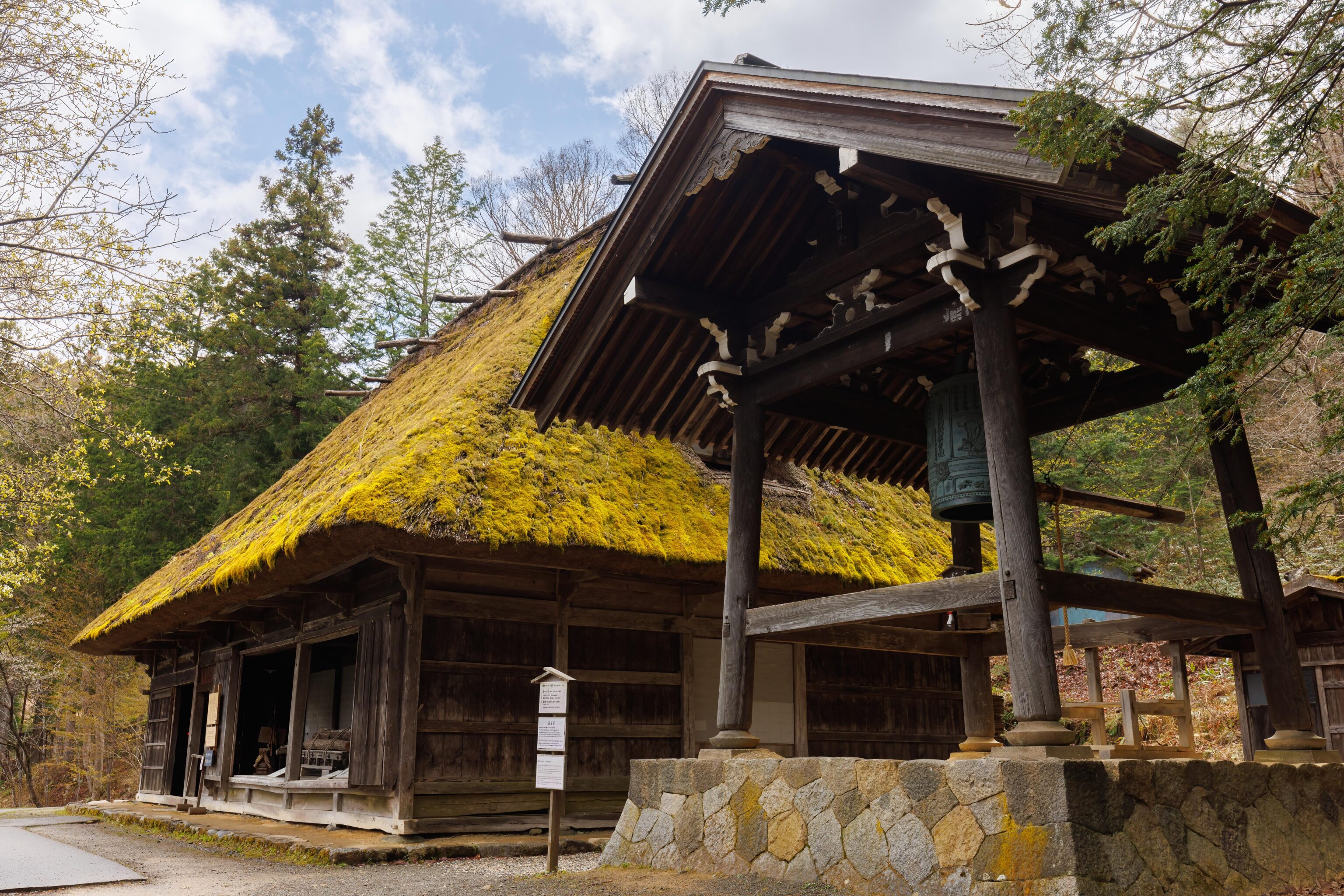
The structure in the foreground holds a bell.
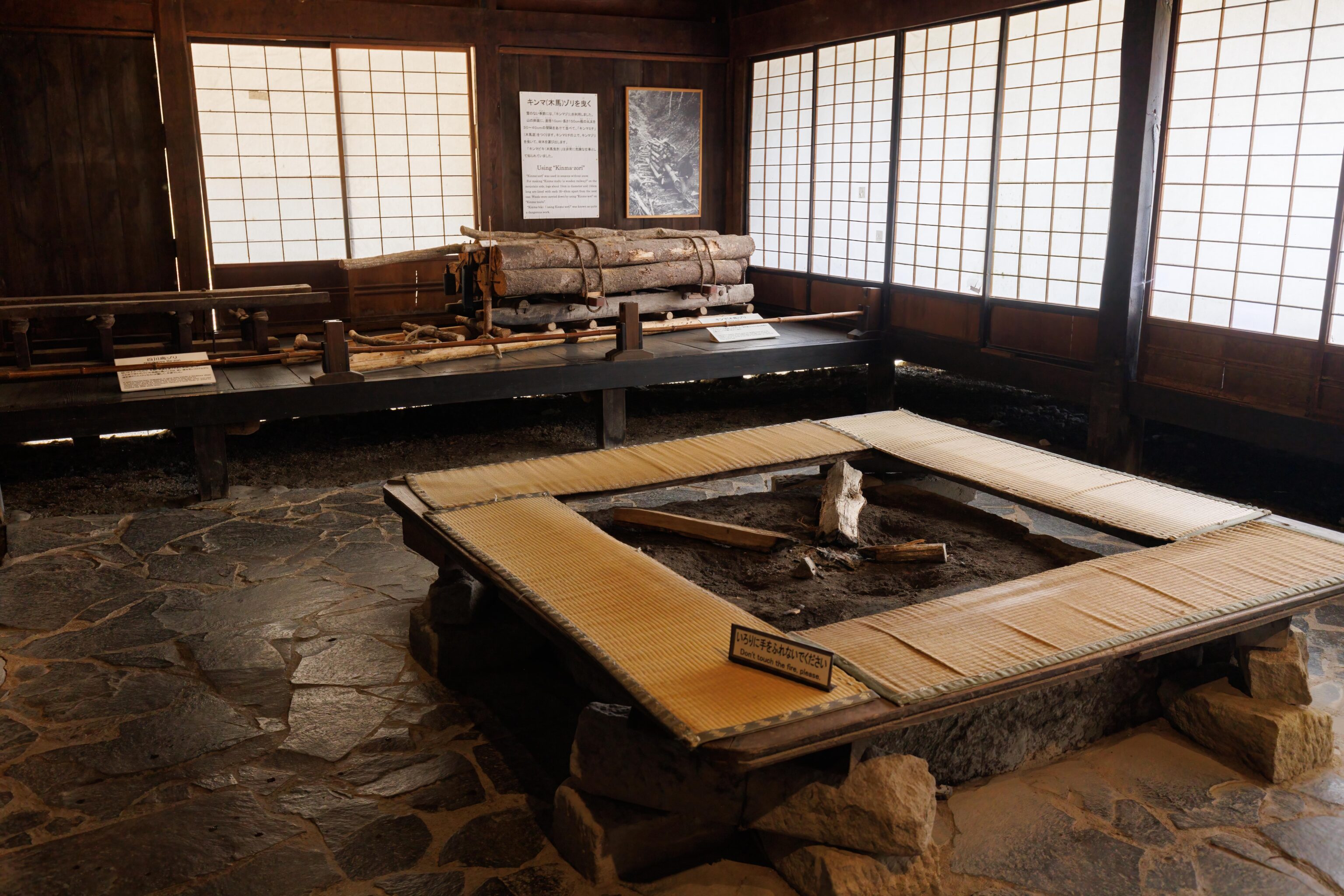
This building, Hozumi’s House, has various sledges used for carry loads on display.
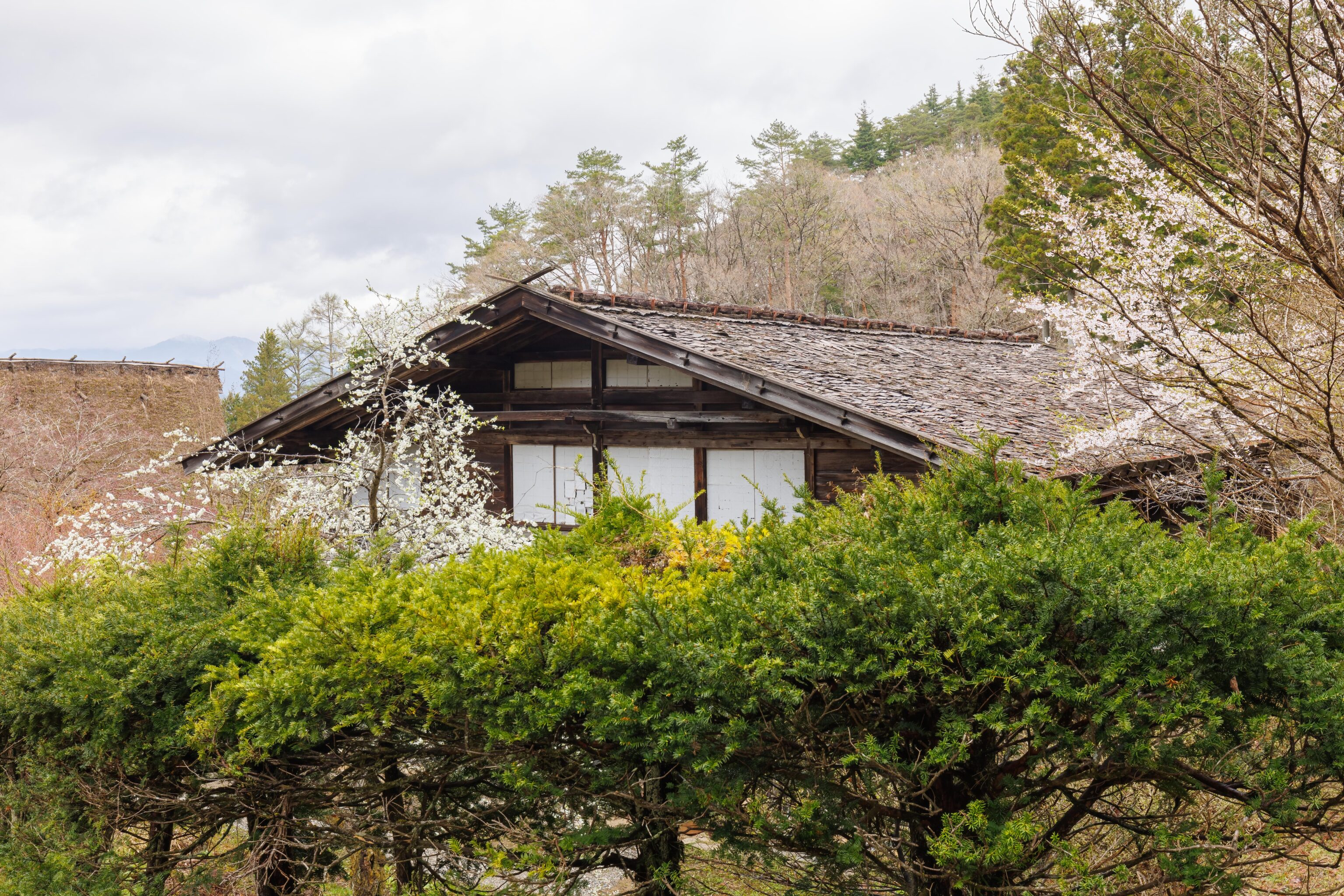
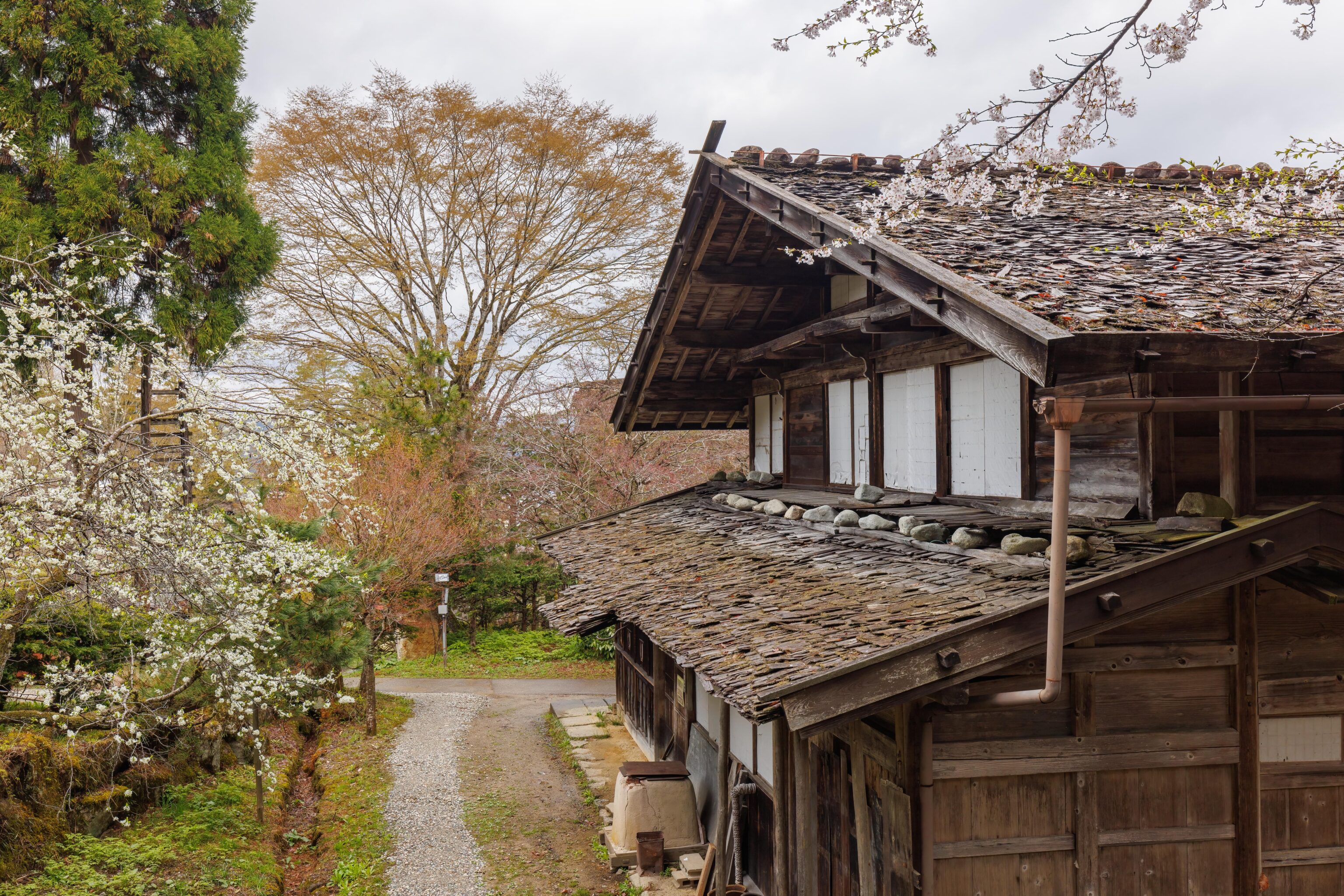
A few scenes as we walked through the village.
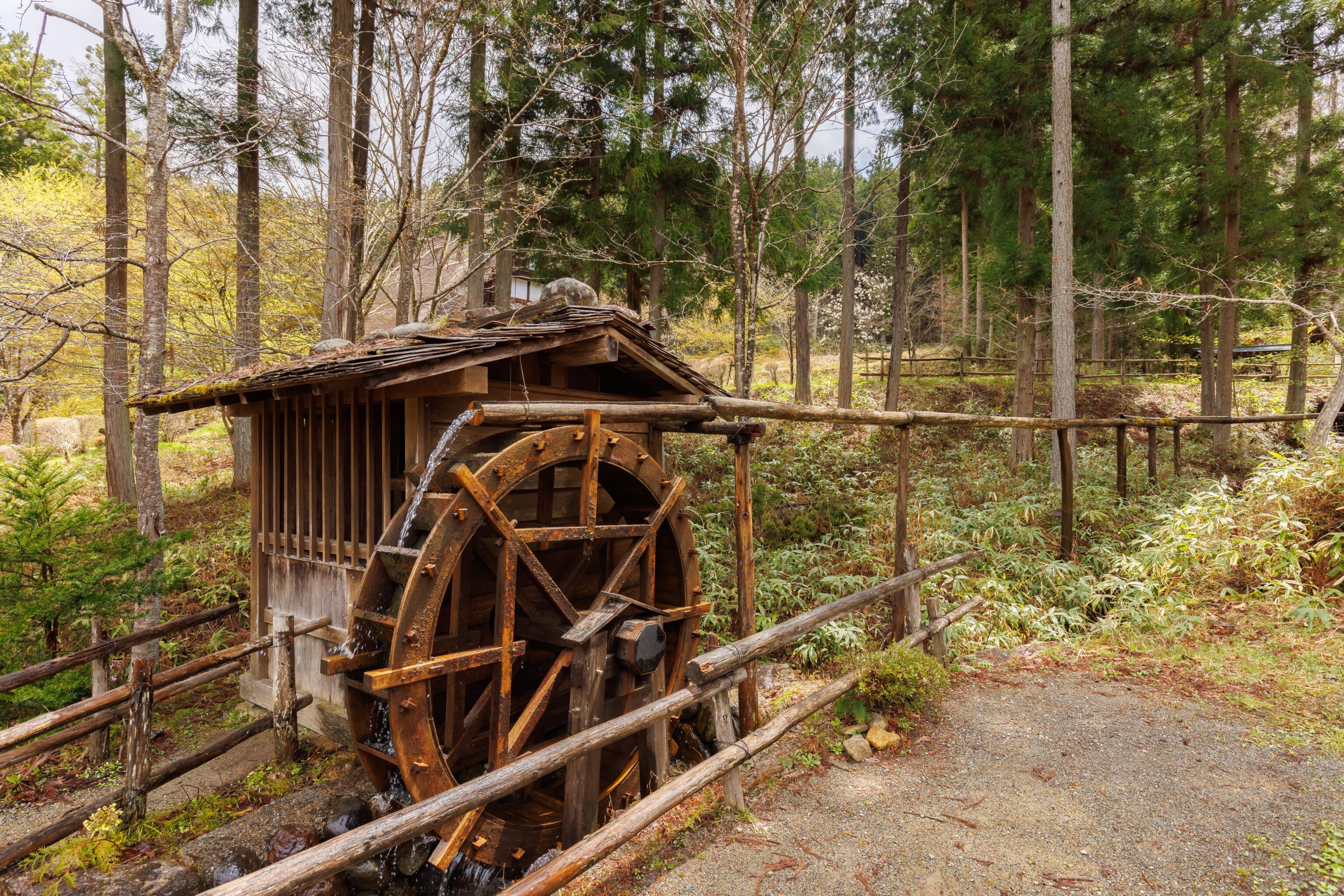
This water wheel was powered by stream water carried over by elevated wooden piping.
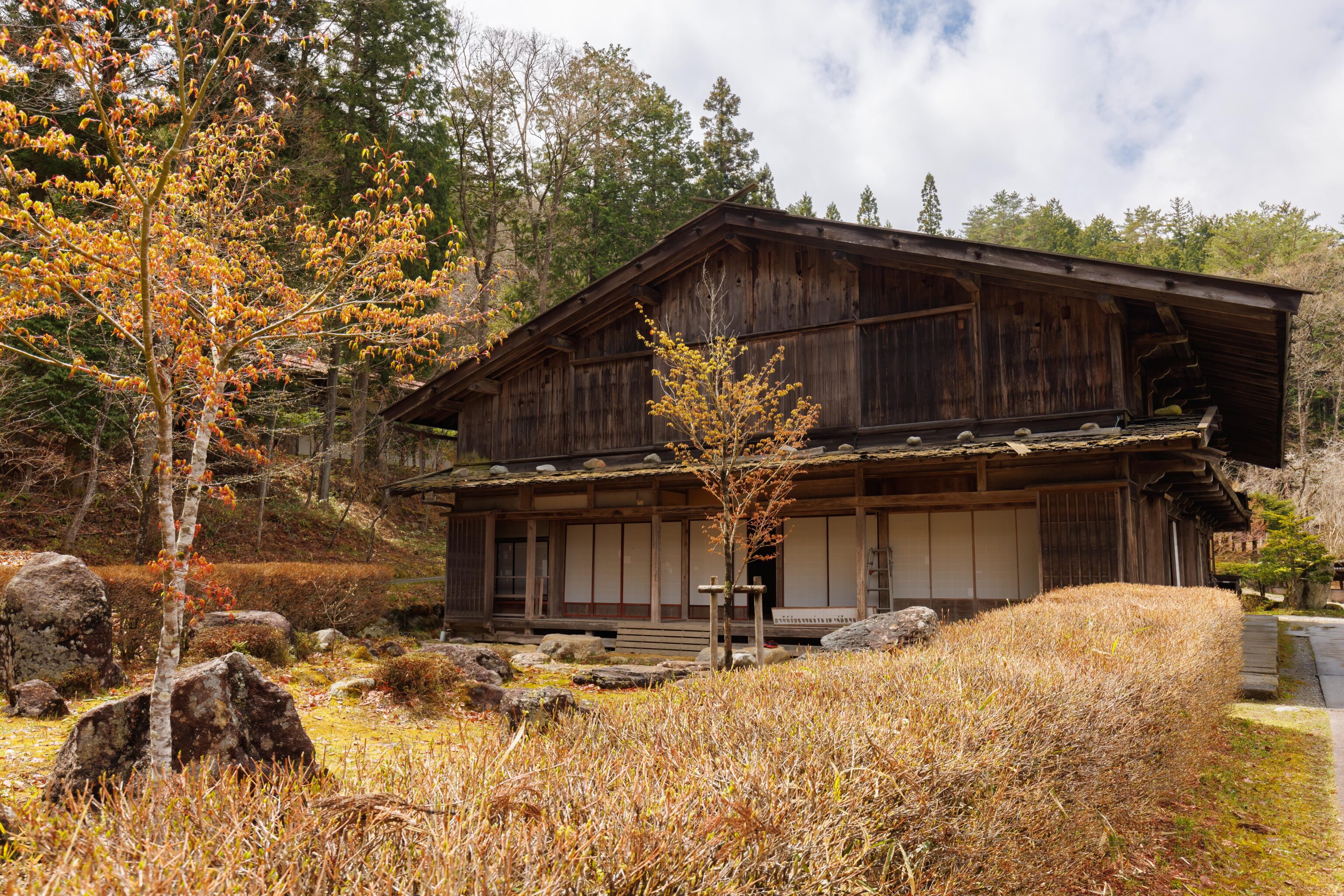
This is probably Maeda’s House.
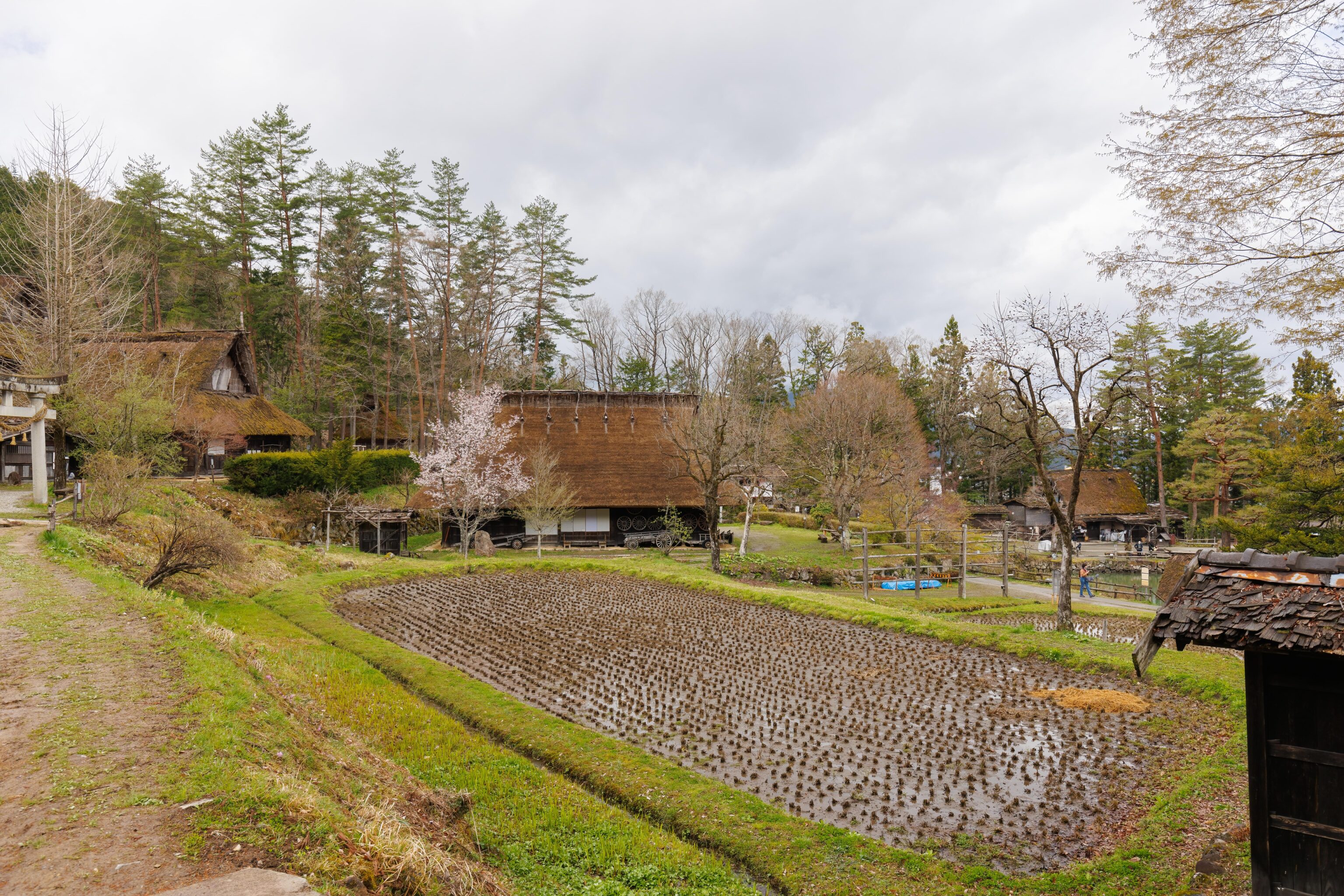
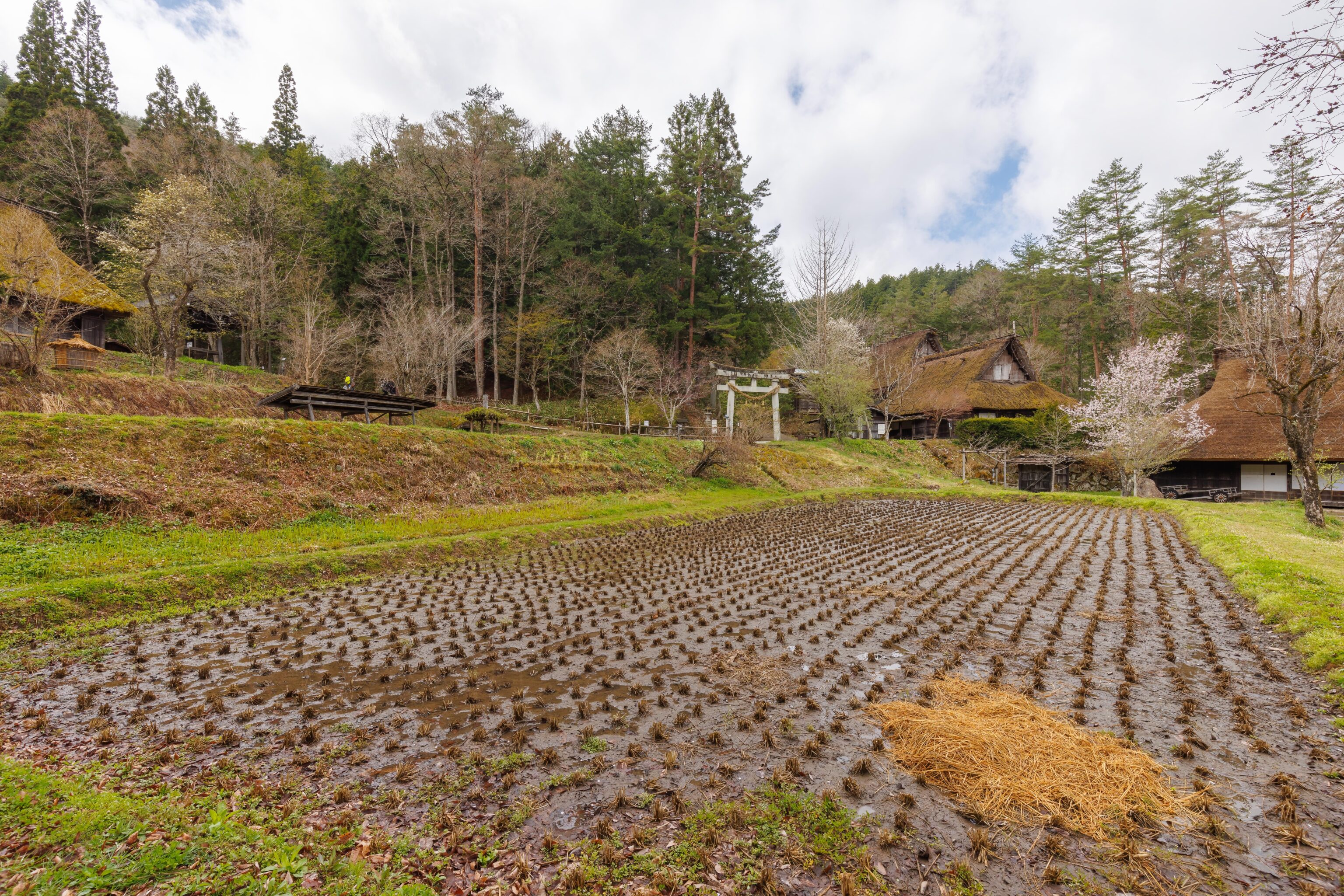
A small example of a rice field. Not sure how much this plot produces in a year.
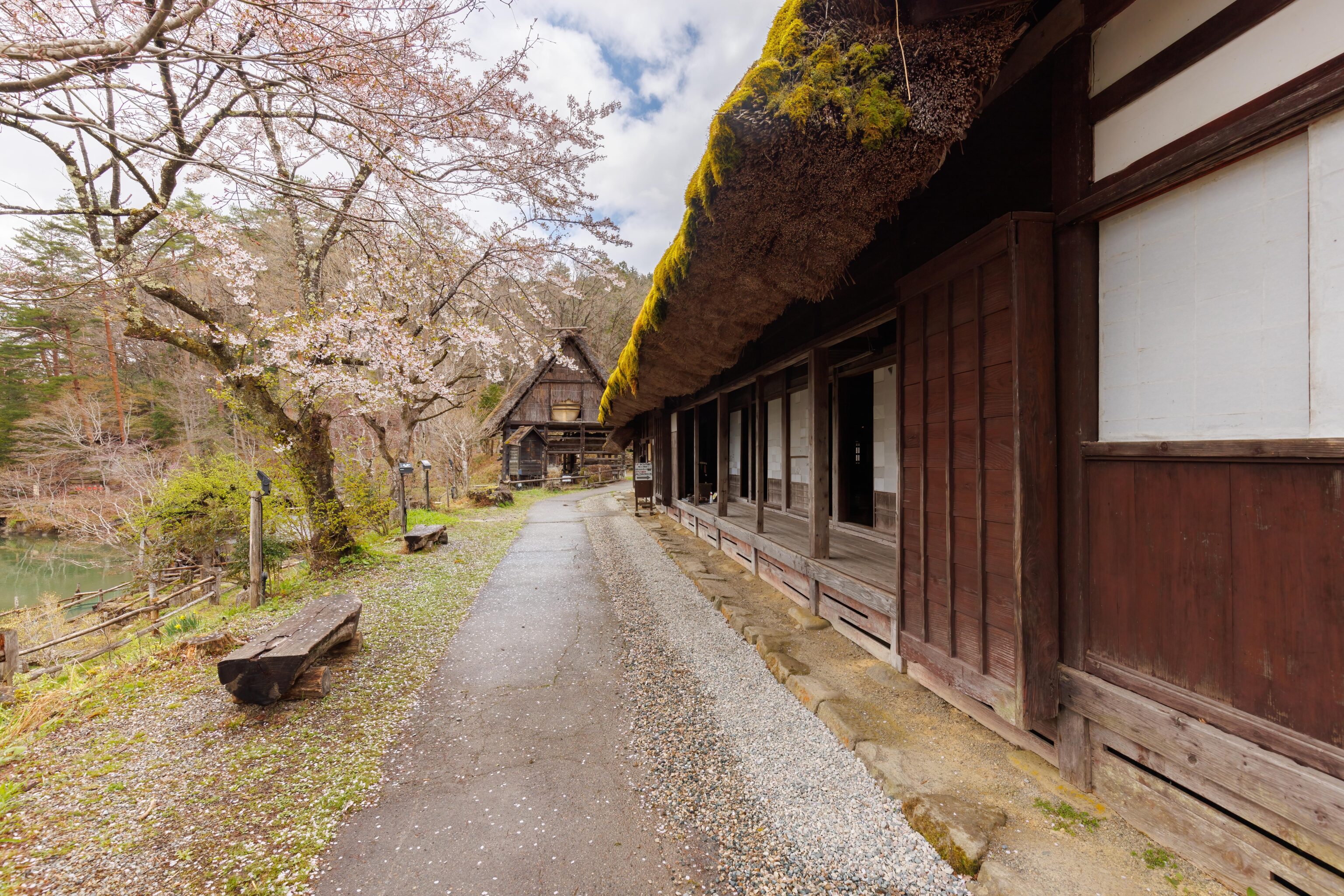
Well past peak cherry blossoms! There are probably as many petals on the ground as are left on the tree.
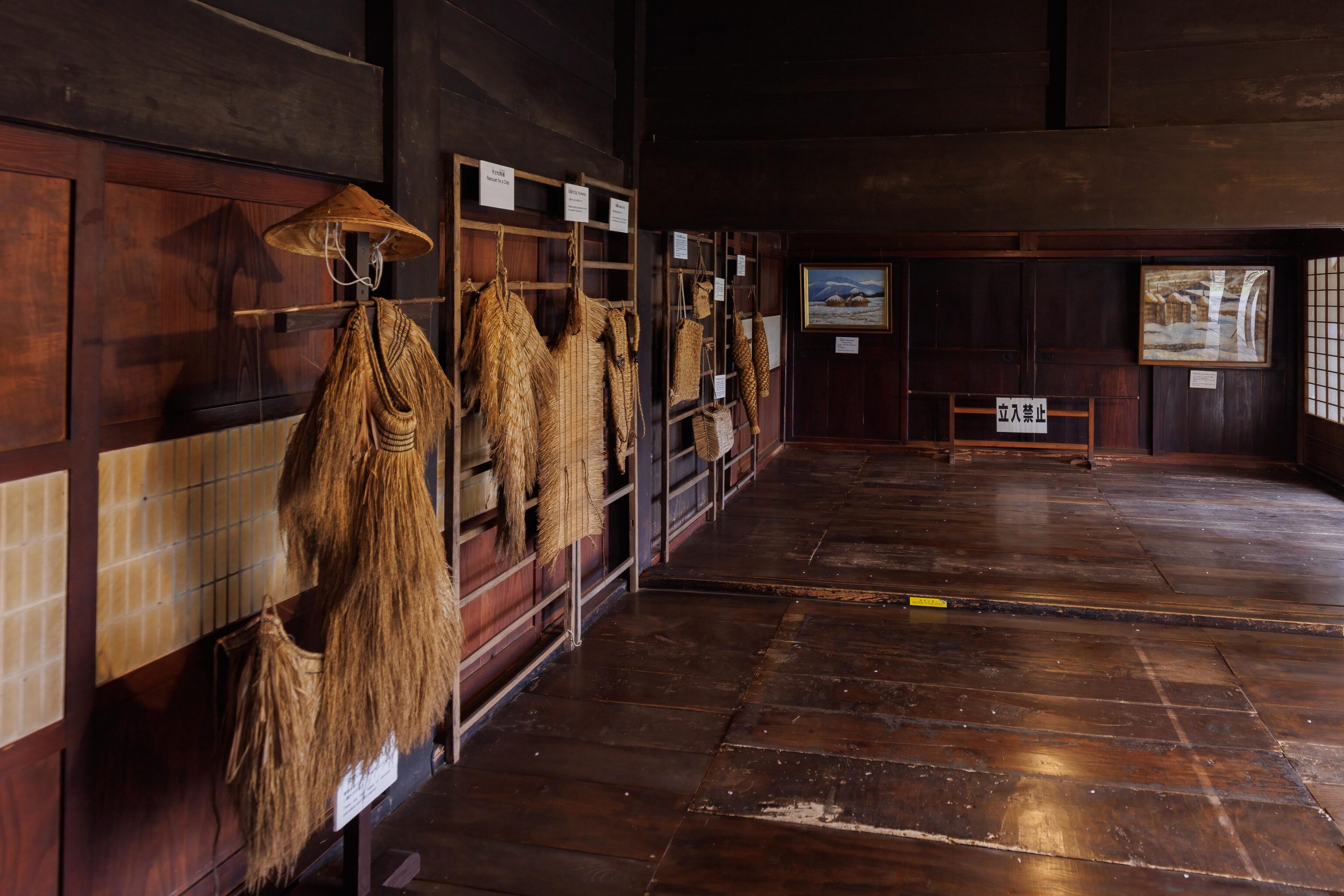
Some examples of straw clothing.
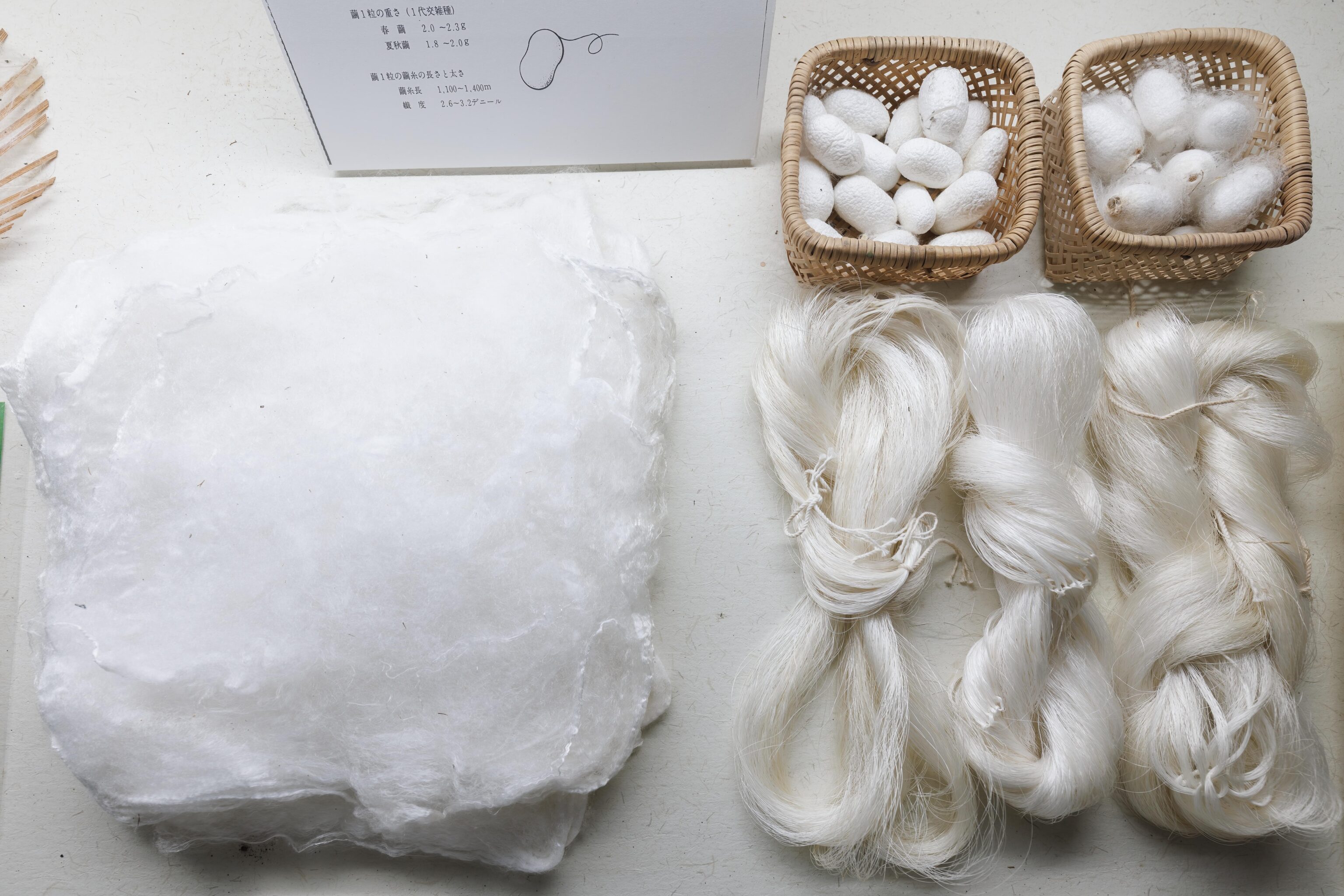
Nishioka’s House held items related to silk production.
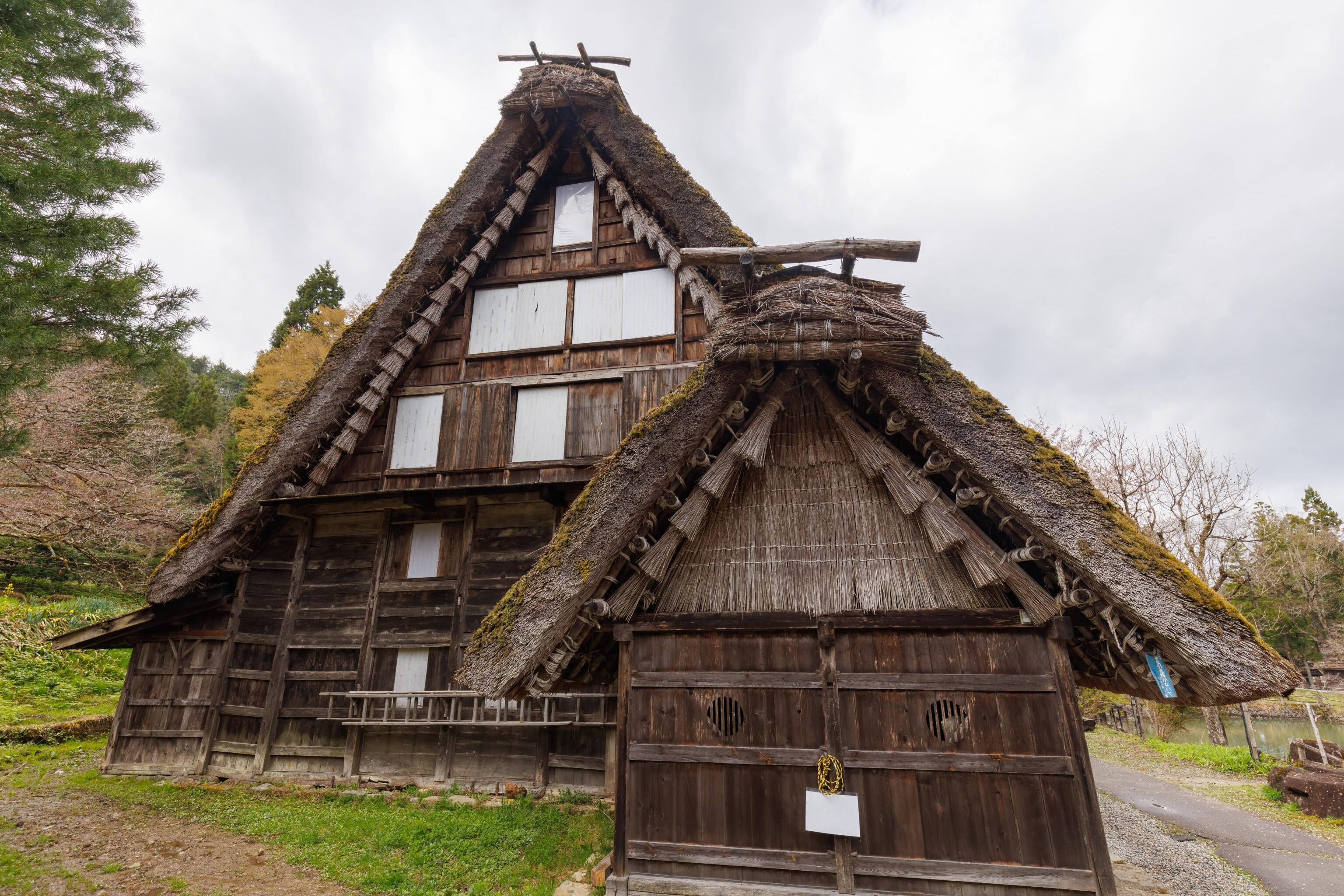
This should be Nishioka’s House from the outside.
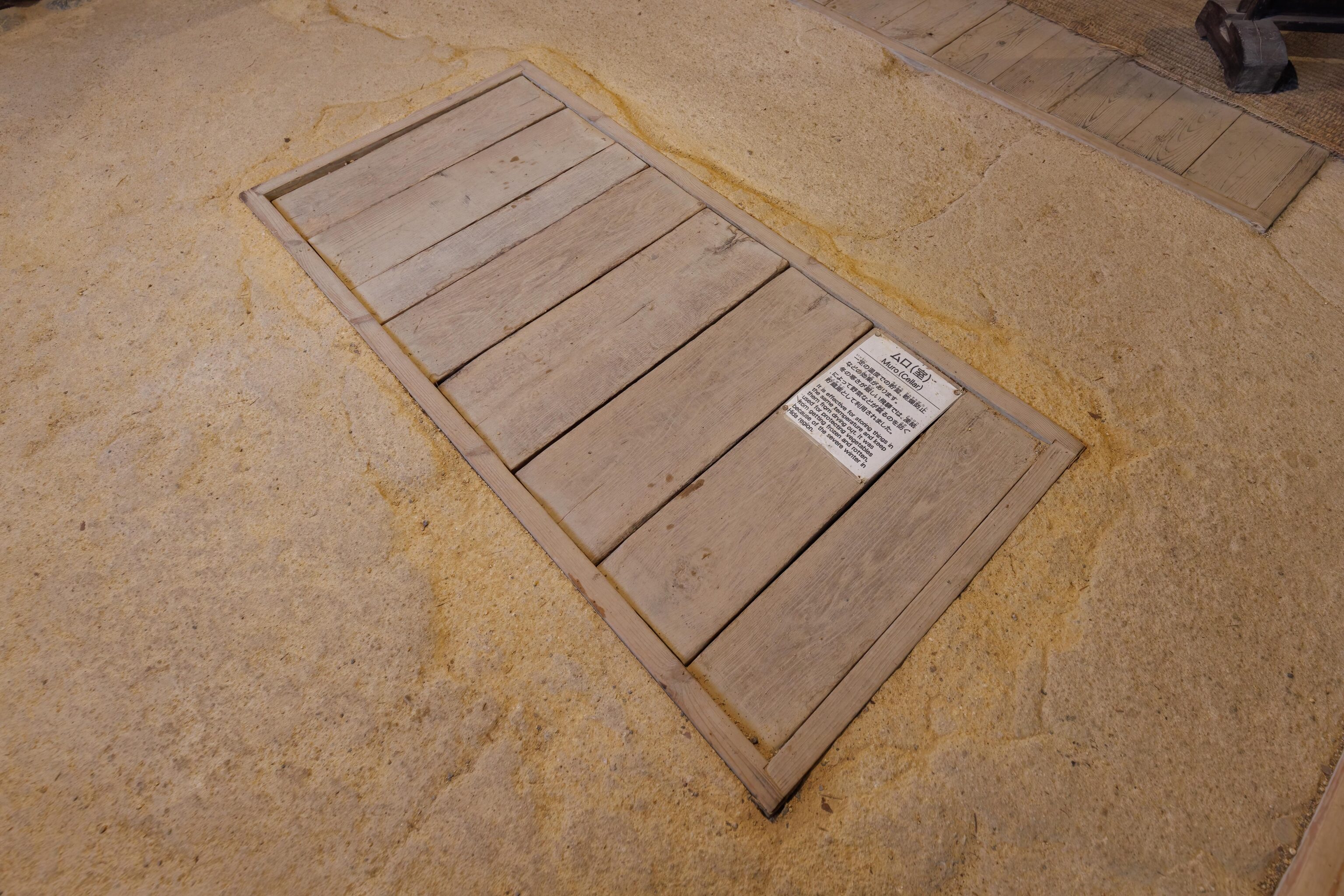
Some of the houses had below floor cellars. Although most of the houses we walked through had wooden floors in the living areas, not all of them did.
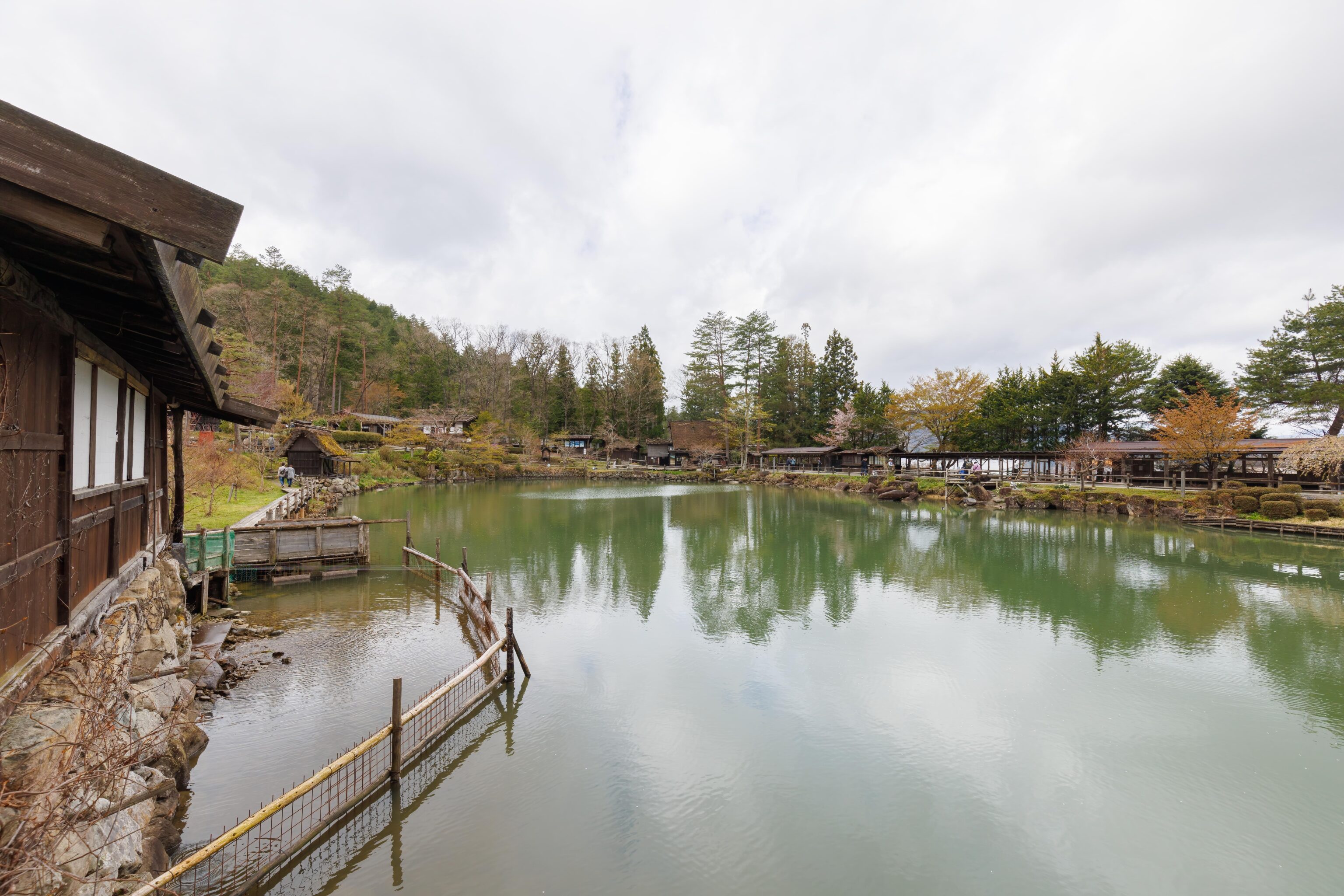
A pond view looking towards the entrance where we started earlier in the morning.
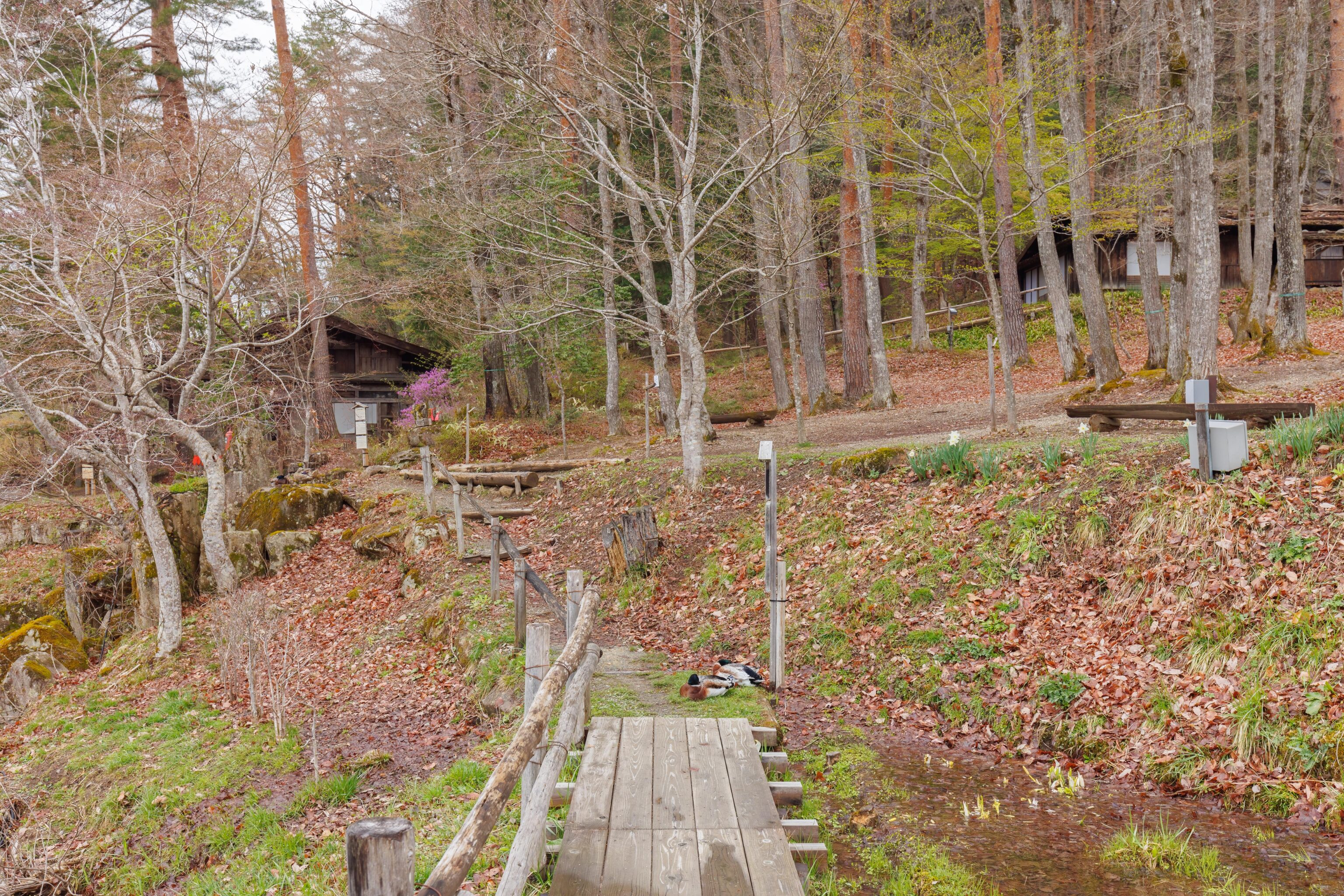
These two ducks were sleeping at the end of this path by the pond. We decided to let them sleep.
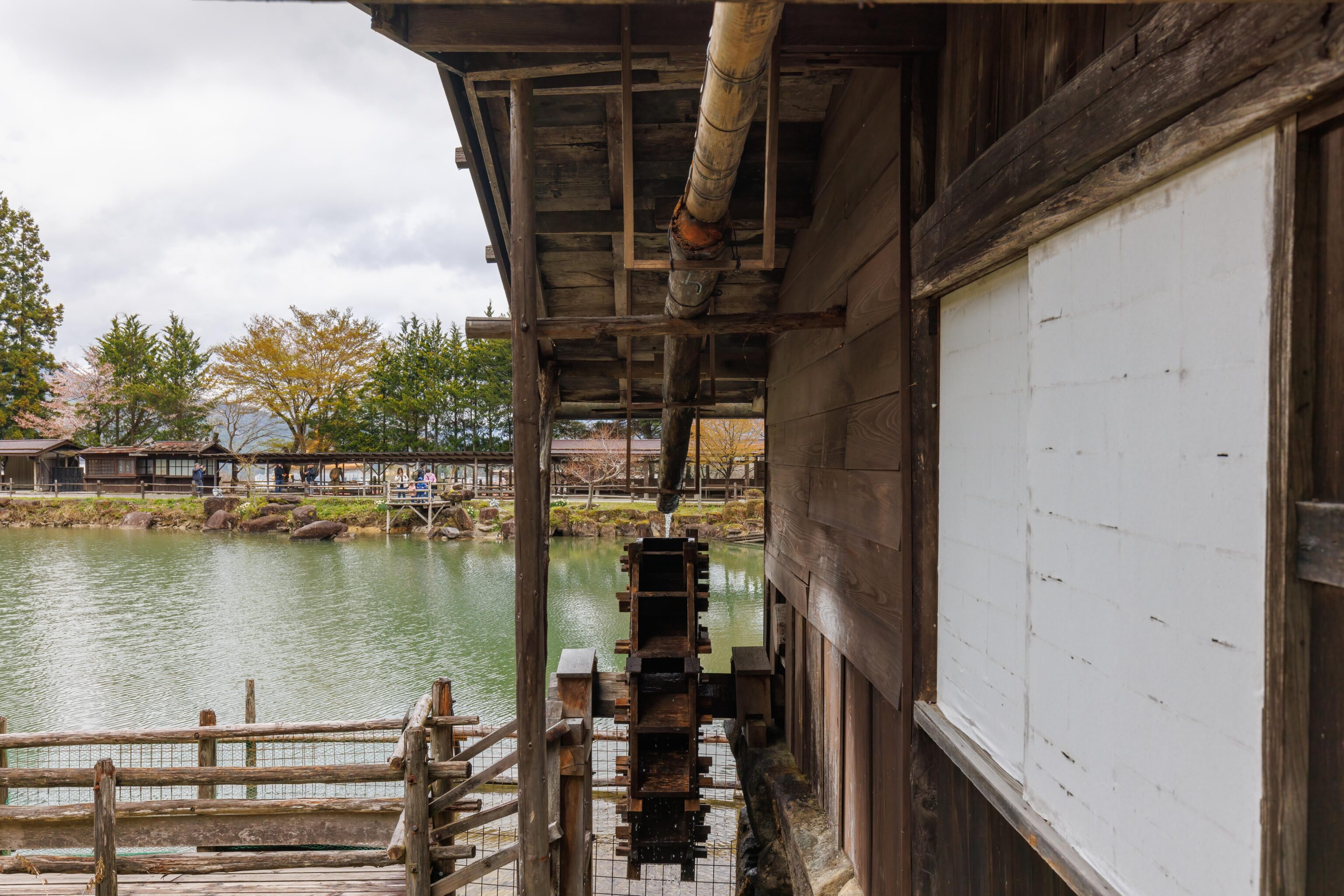
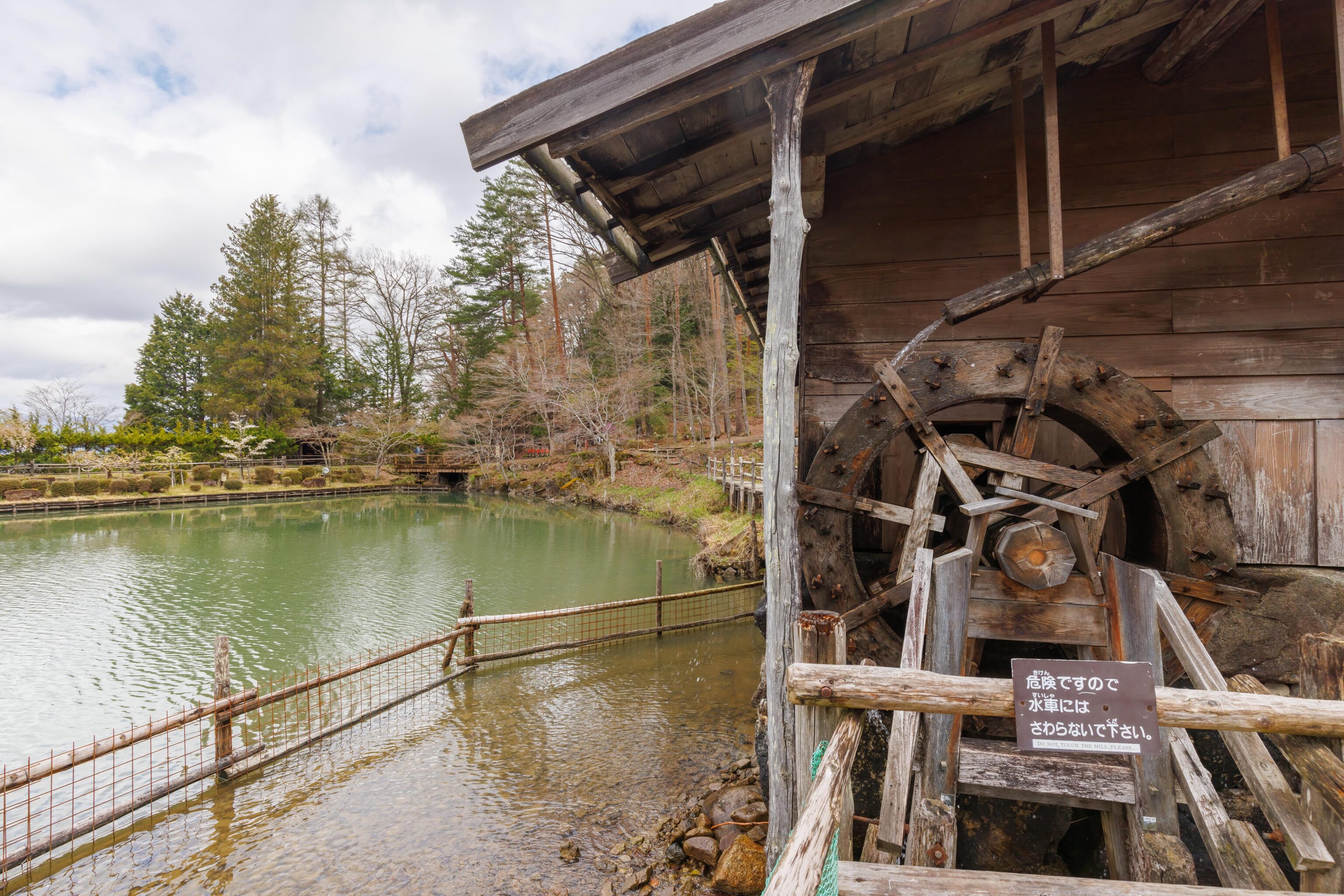
There was a bigger water wheel by the pond. It seemed like the fenced off areas of the pond were used for some sort of activity though we didn’t see any signs explaining what was going on.
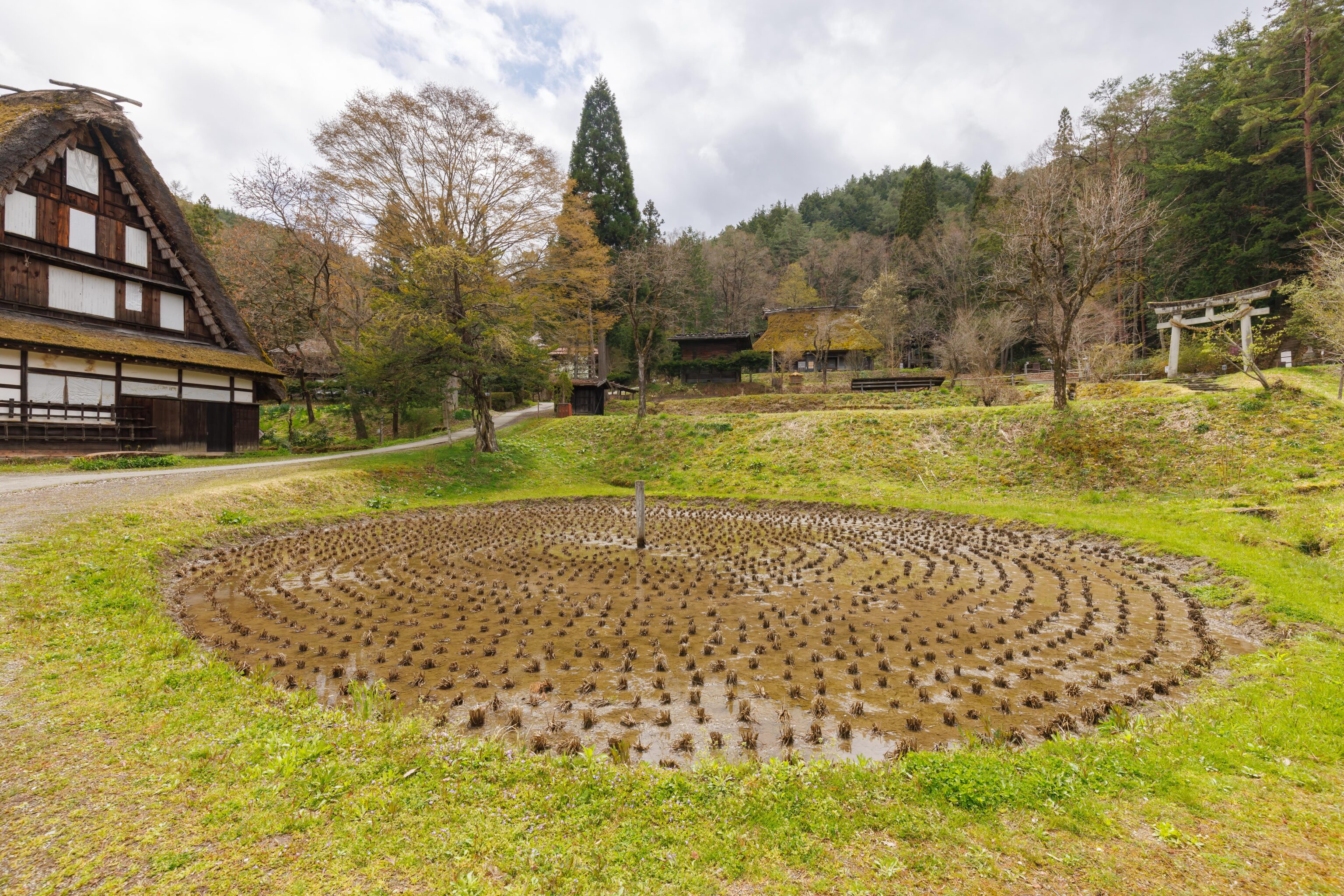
A circular rice field.
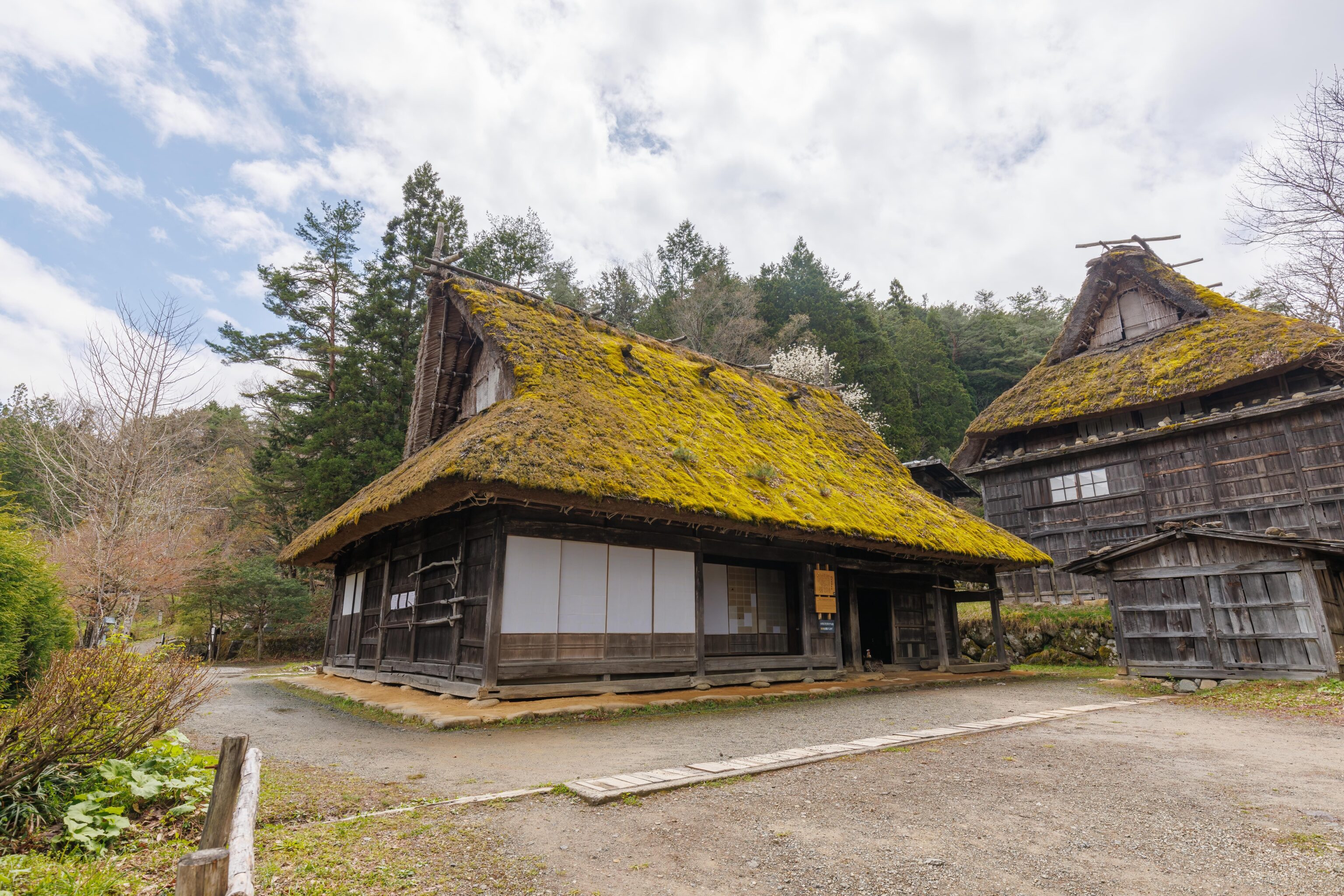
This is possibly Tomita’s House.
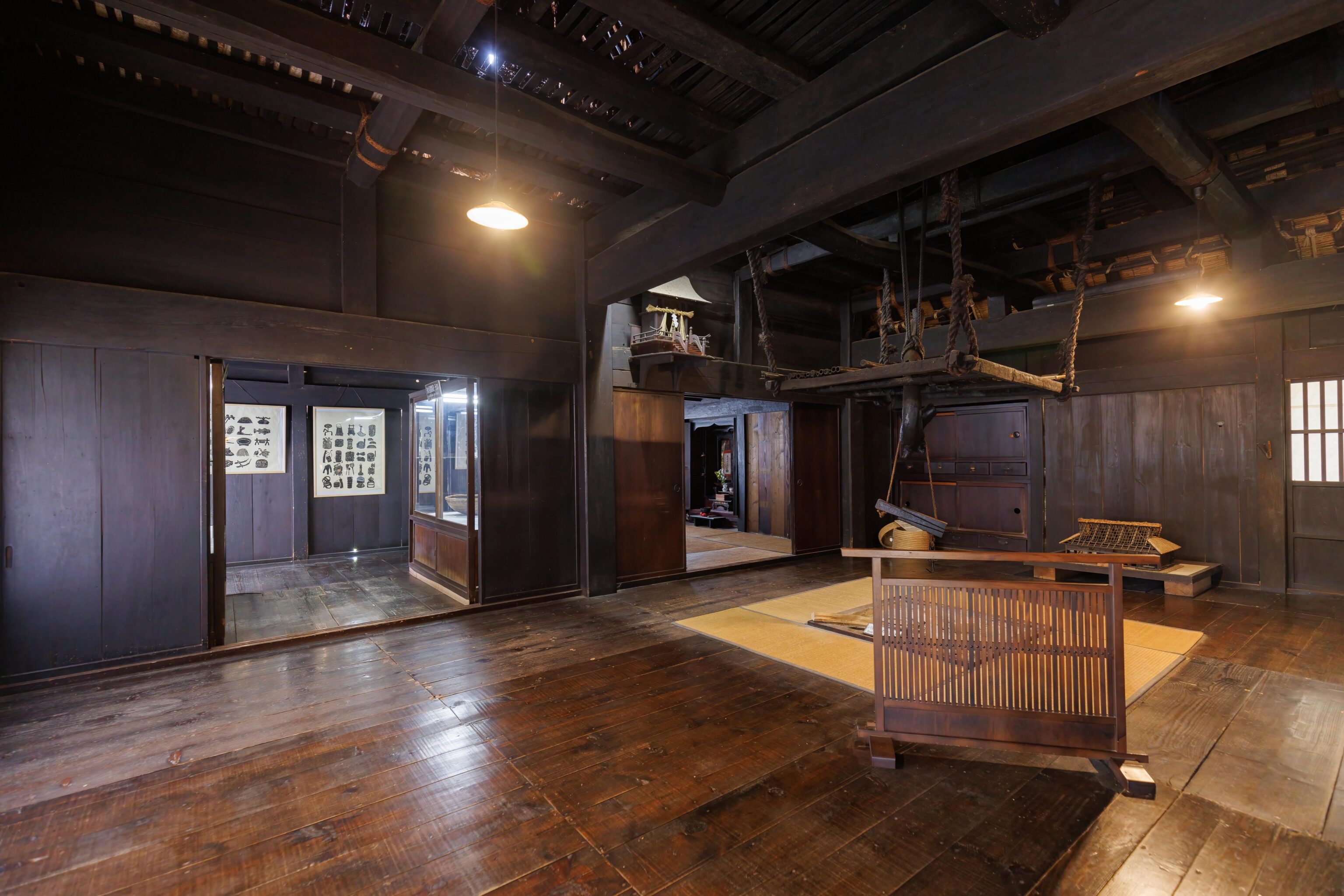
Not sure which house this is.

Looking up at the roof. Once again, we don’t remember which house this is and the recorded coordinates don’t help.
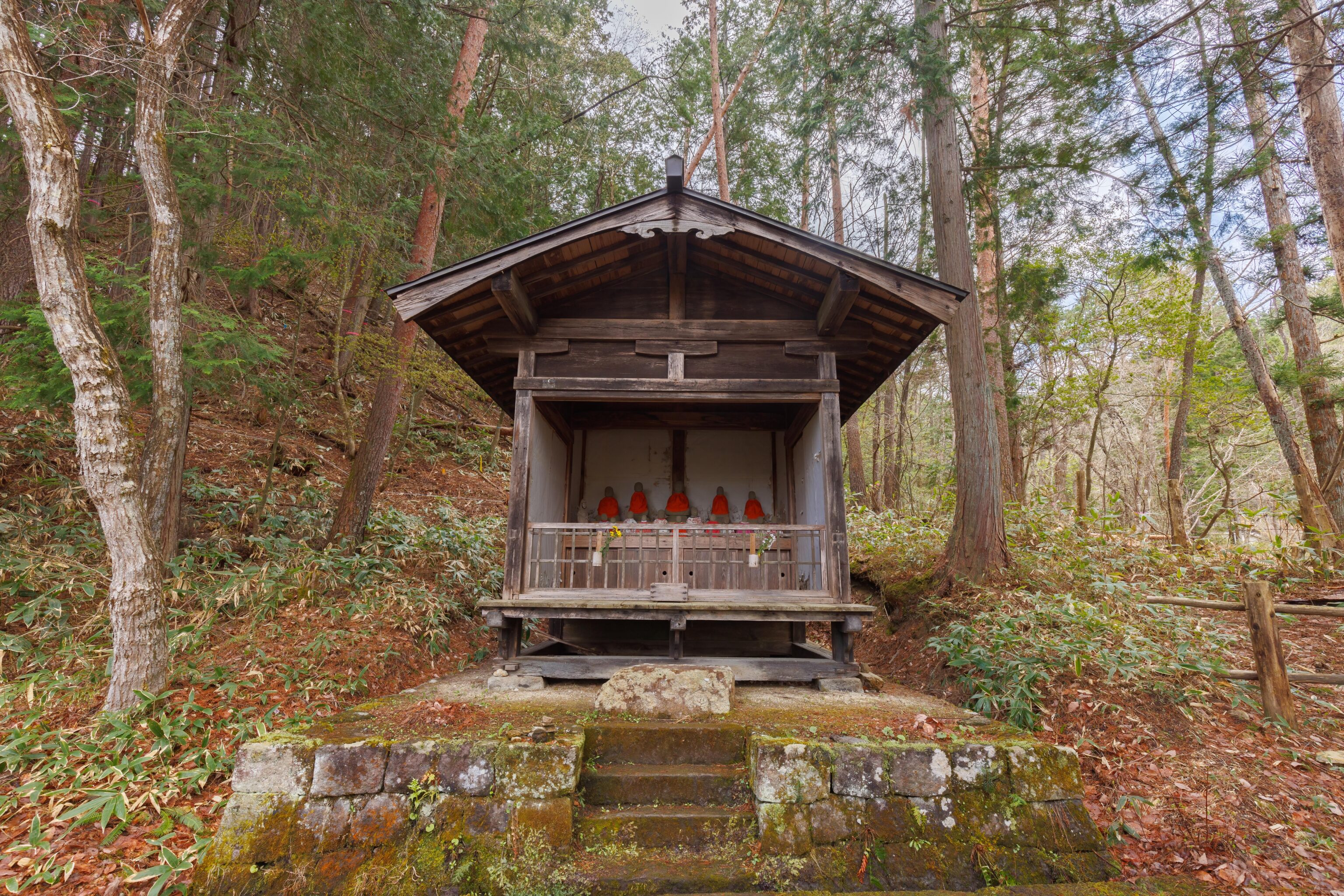
After visiting most of the houses, we decided to walk up to the shrine at the top of the hill. We passed by this small shrine holding a number of stone figures, similar to the six we passed by earlier in the morning.
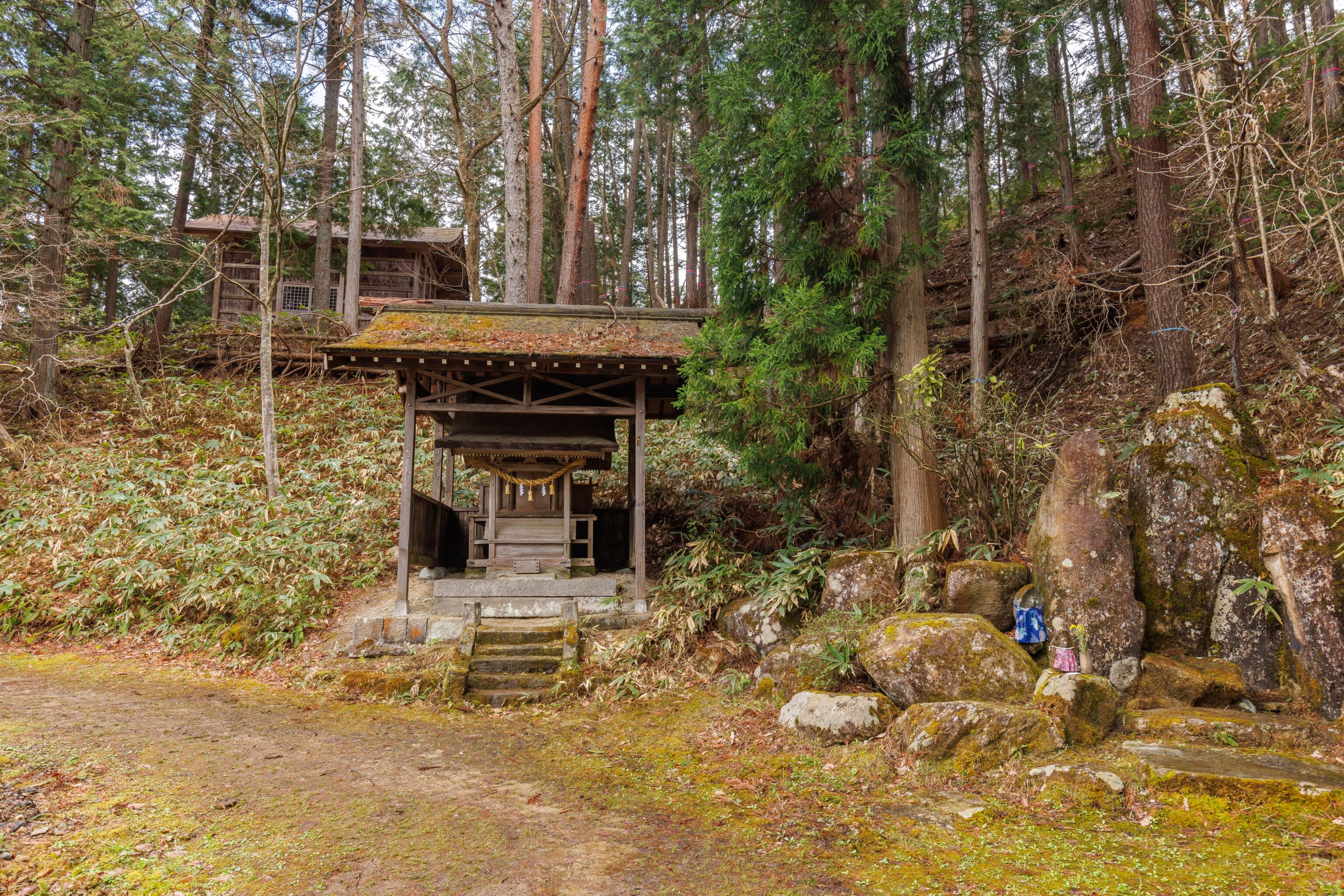
Another small shrine. The building in the background is the shrine we’re on our way to.
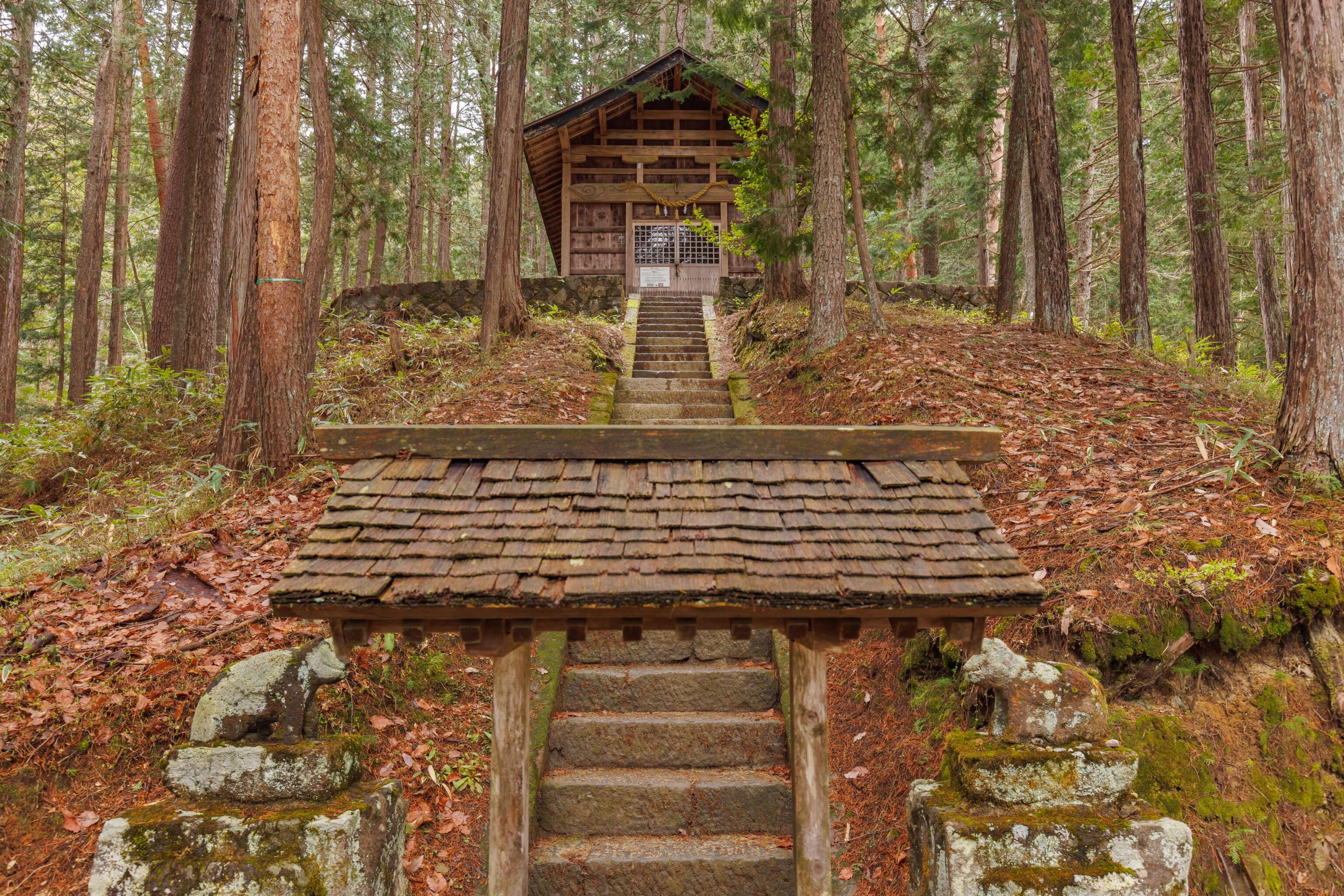
A set of steep stairs led up to the Takumi Shrine at the top of the hill.
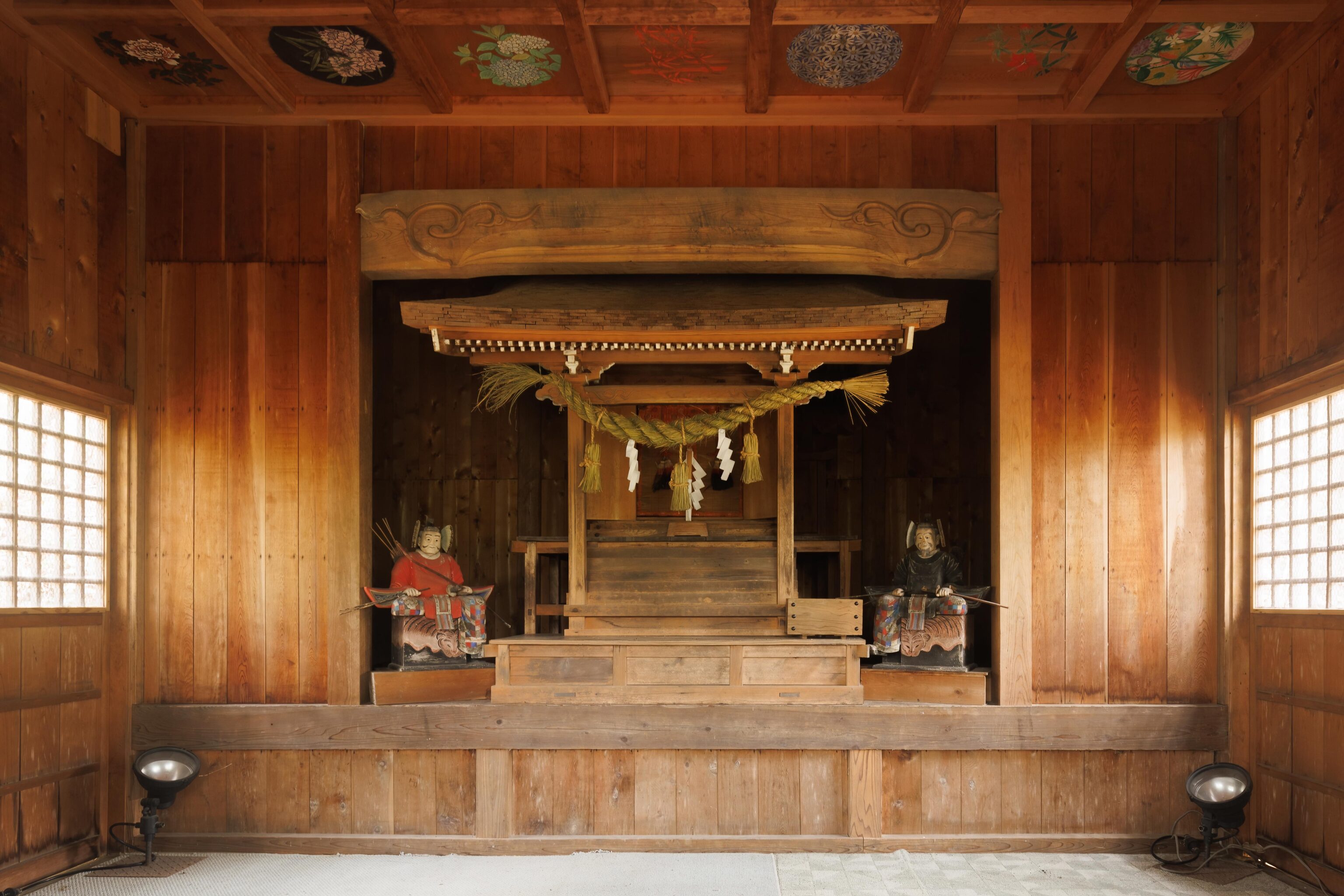
The shrine is apparently typically closed. But it was possible to photograph through the window. The ceiling has some painted scenes but we could only see a few of them due to the viewing angle.
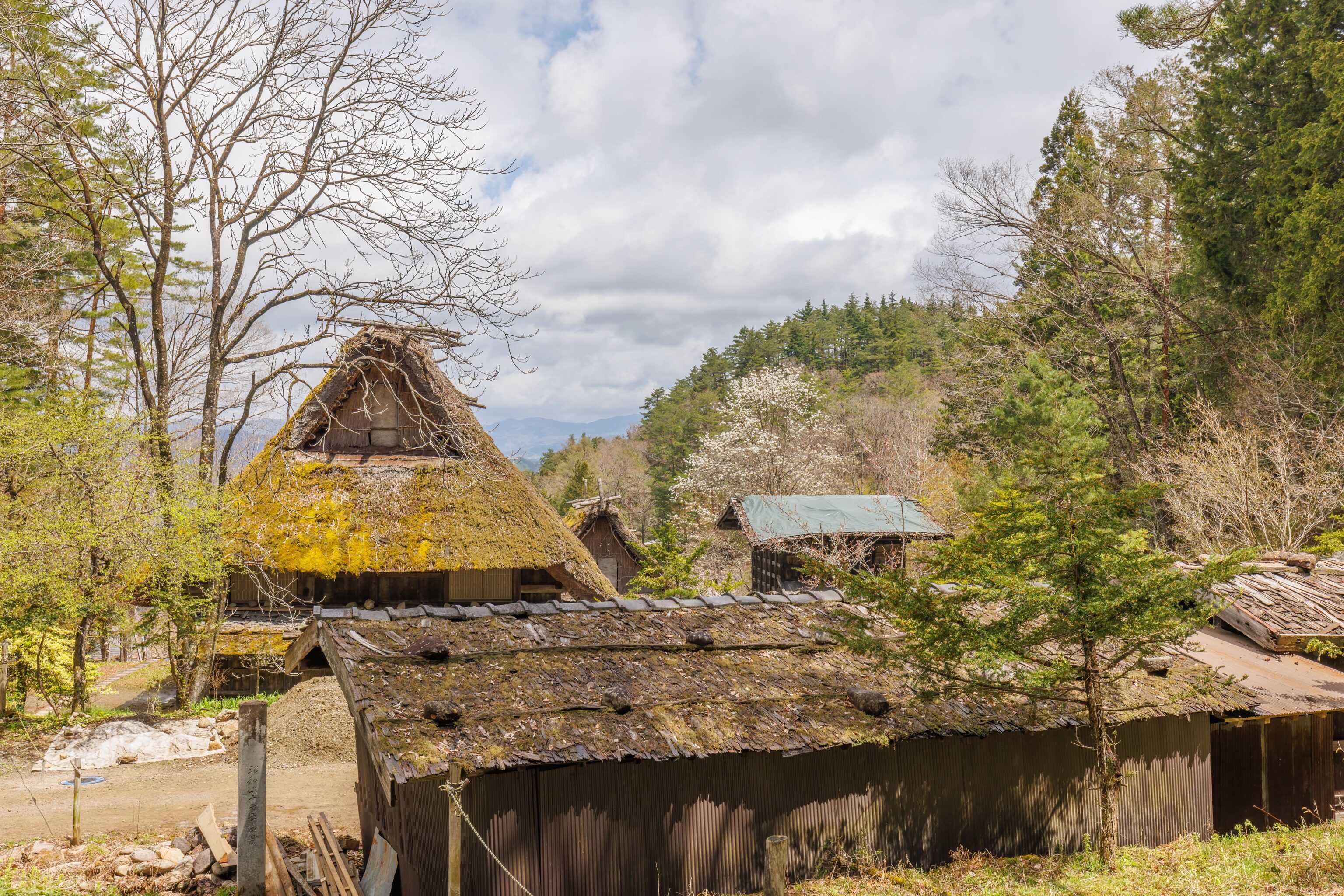
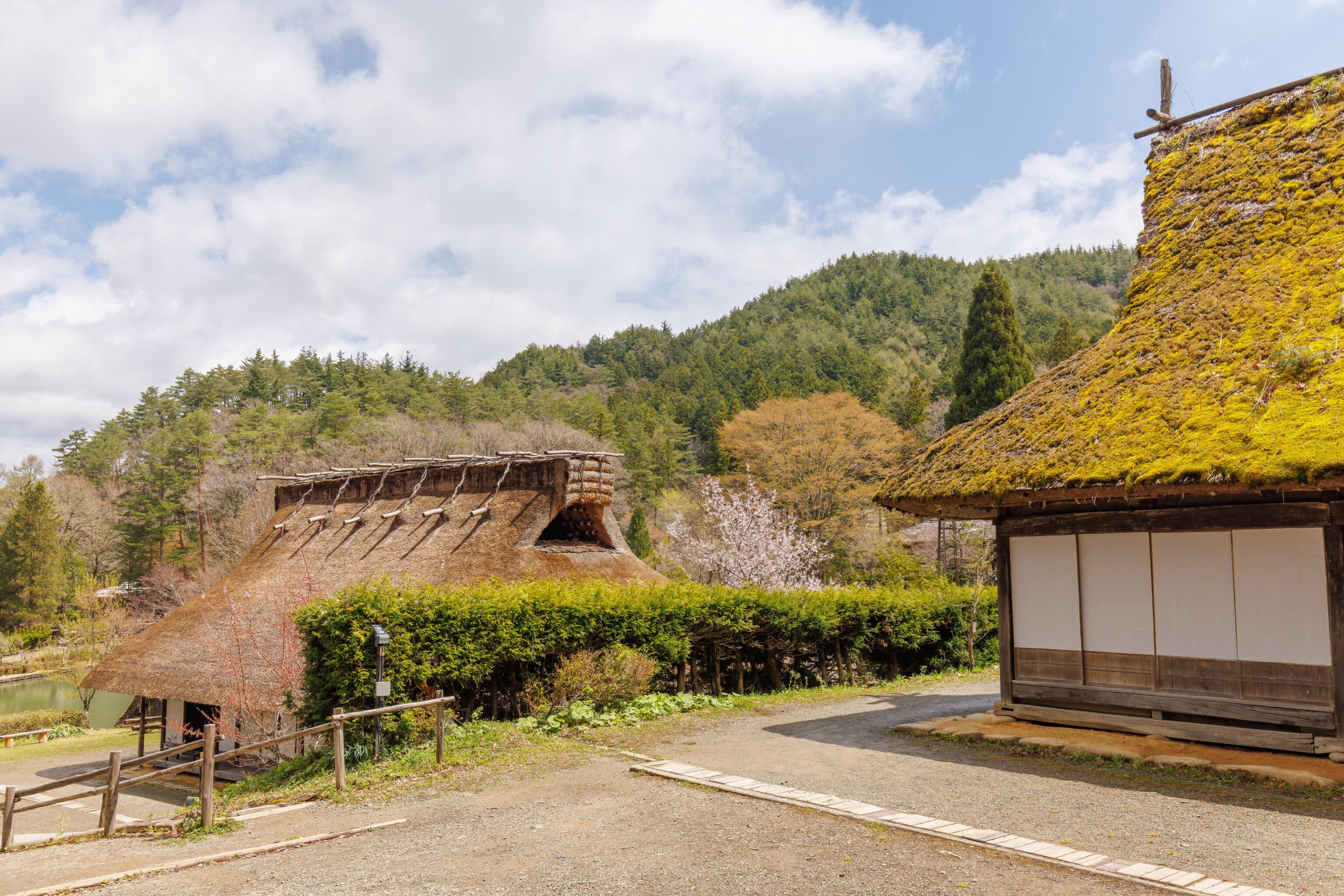
After our brief visit to Takumi Shrine, we headed back to the entrance to finish our visit.
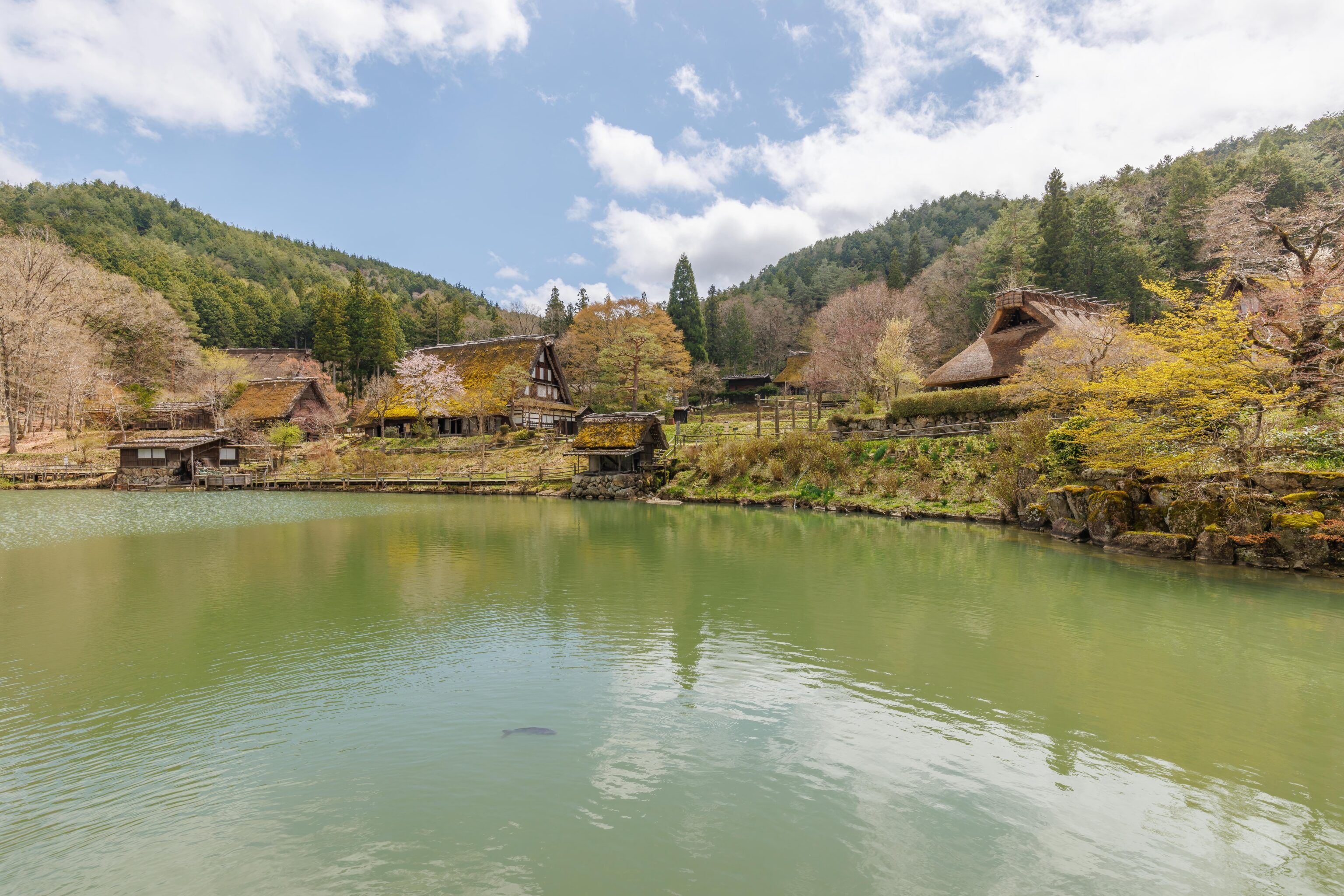
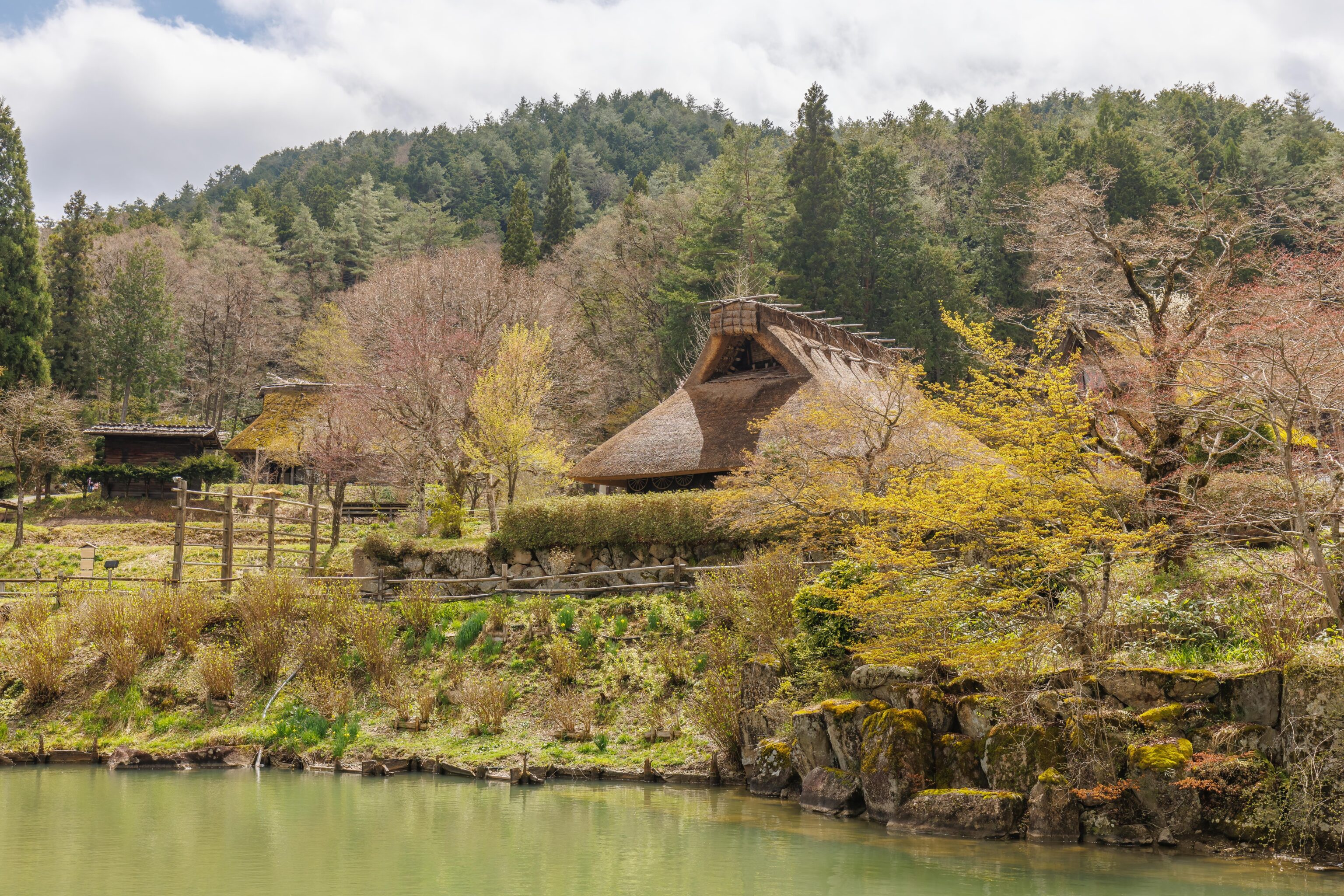
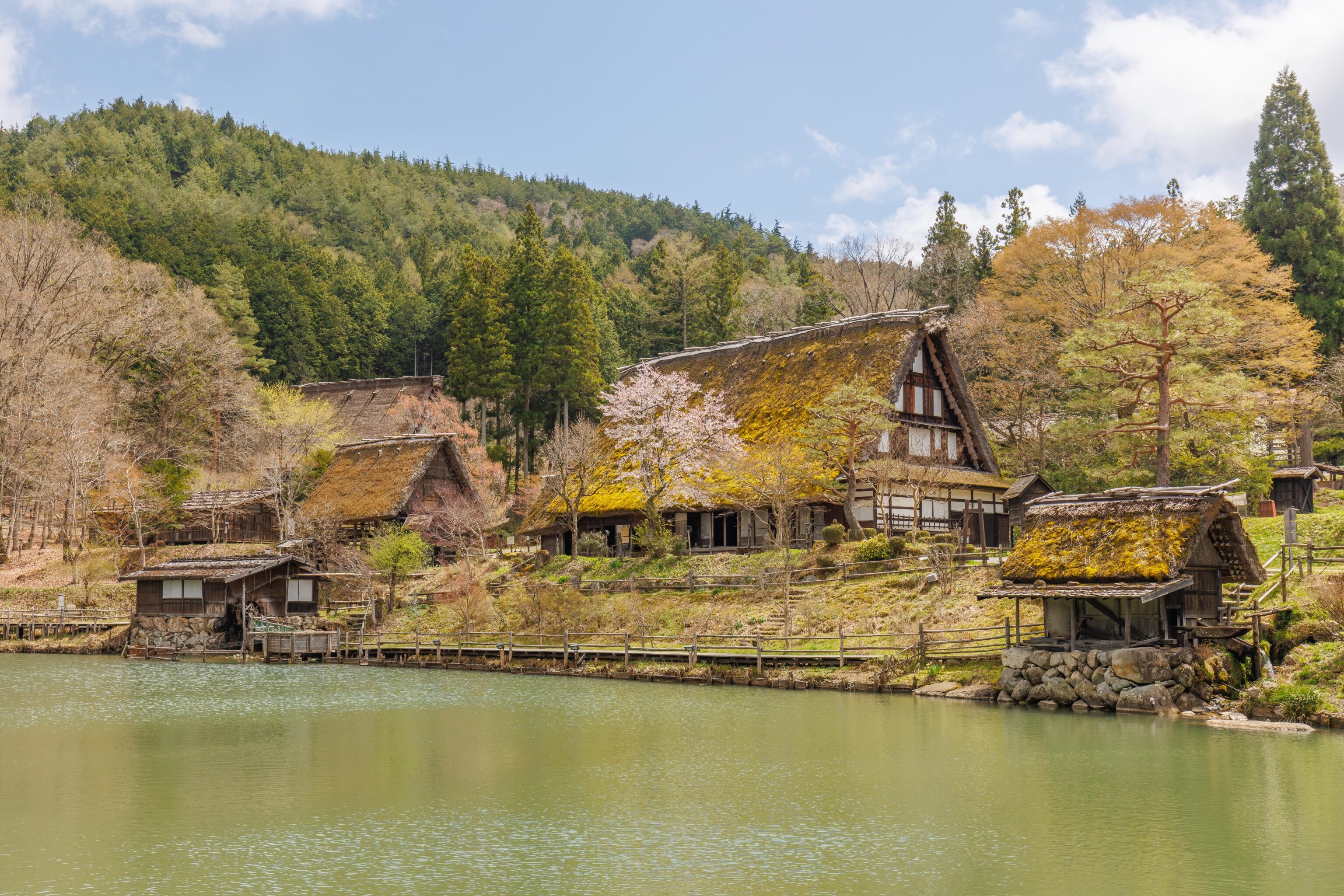
We stopped by the spot by the pond where we took some photos upon initially entering the village. The skies were cloudy and overcast then. But by the time we left, there was quite a bit of blue sky above us!
Takayama Sanmachi
After leaving Hida no Sato, we took the bus back to the JR station and started walking to the Sanmachi historic neighborhood.
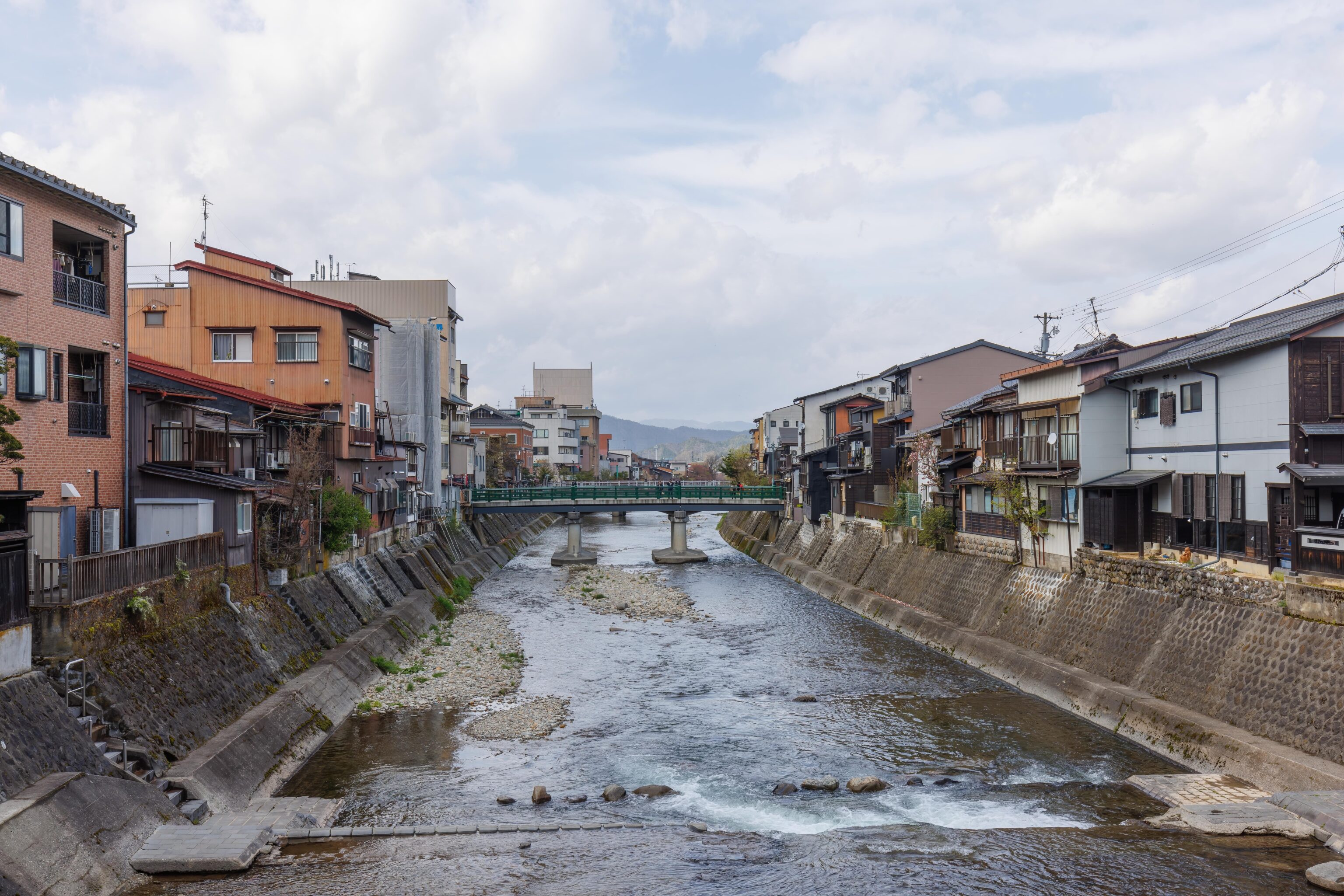
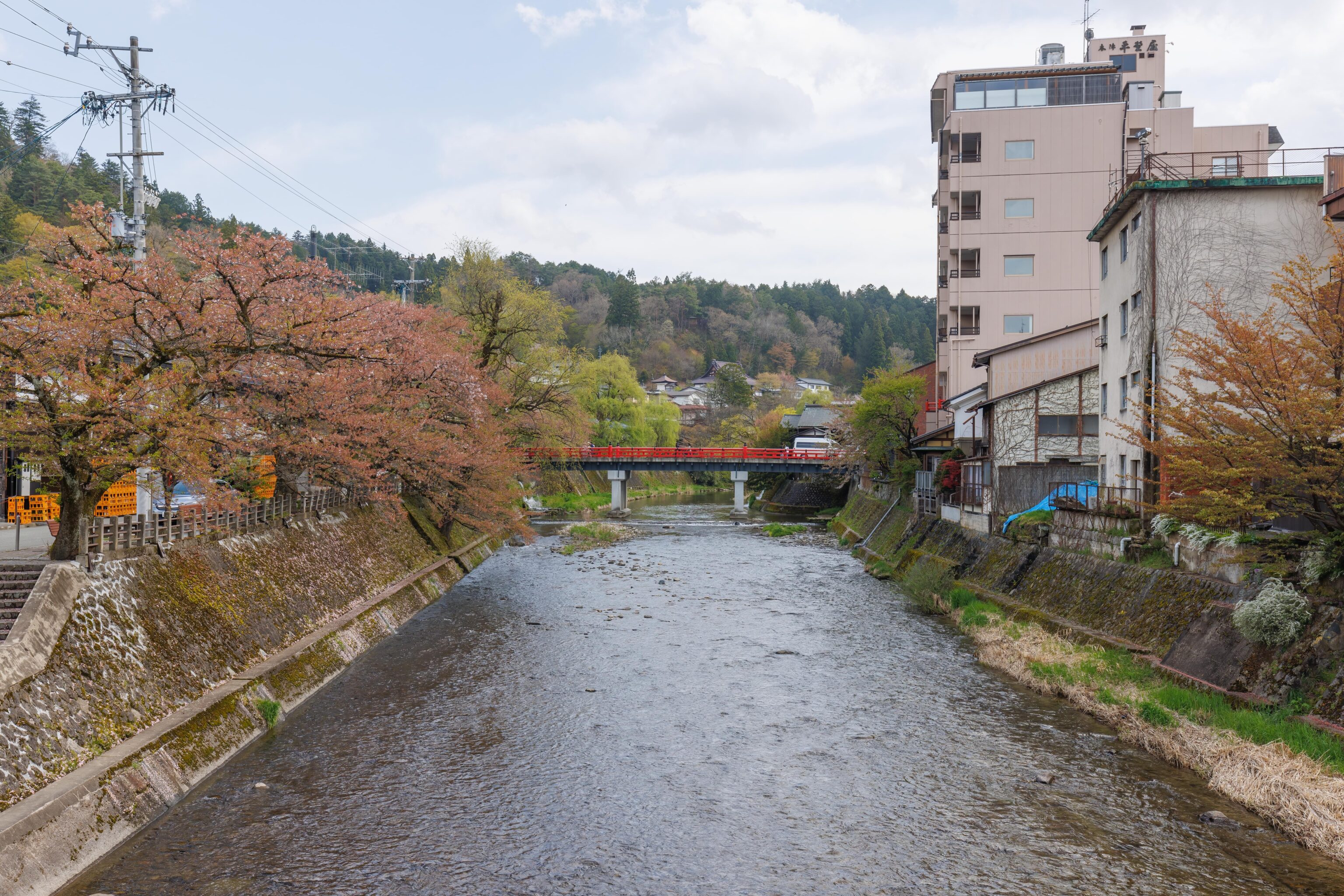
We crossed over the Miyagawa via the Ikada Bridge. There was a large cherry tree by the river that likely looked fantastic when it was at peak bloom. There were only a few petals remaining on the tree as we walked by.
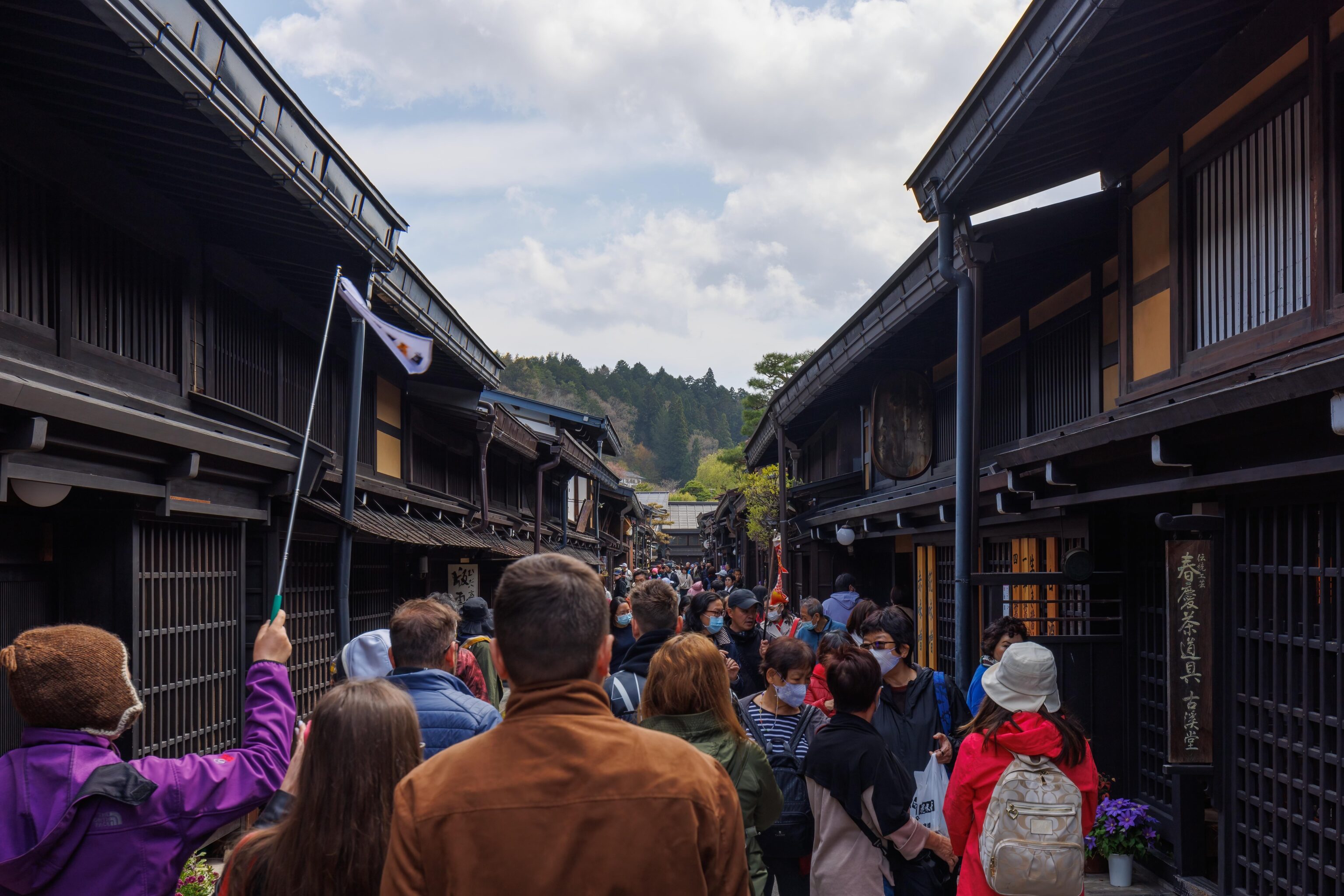
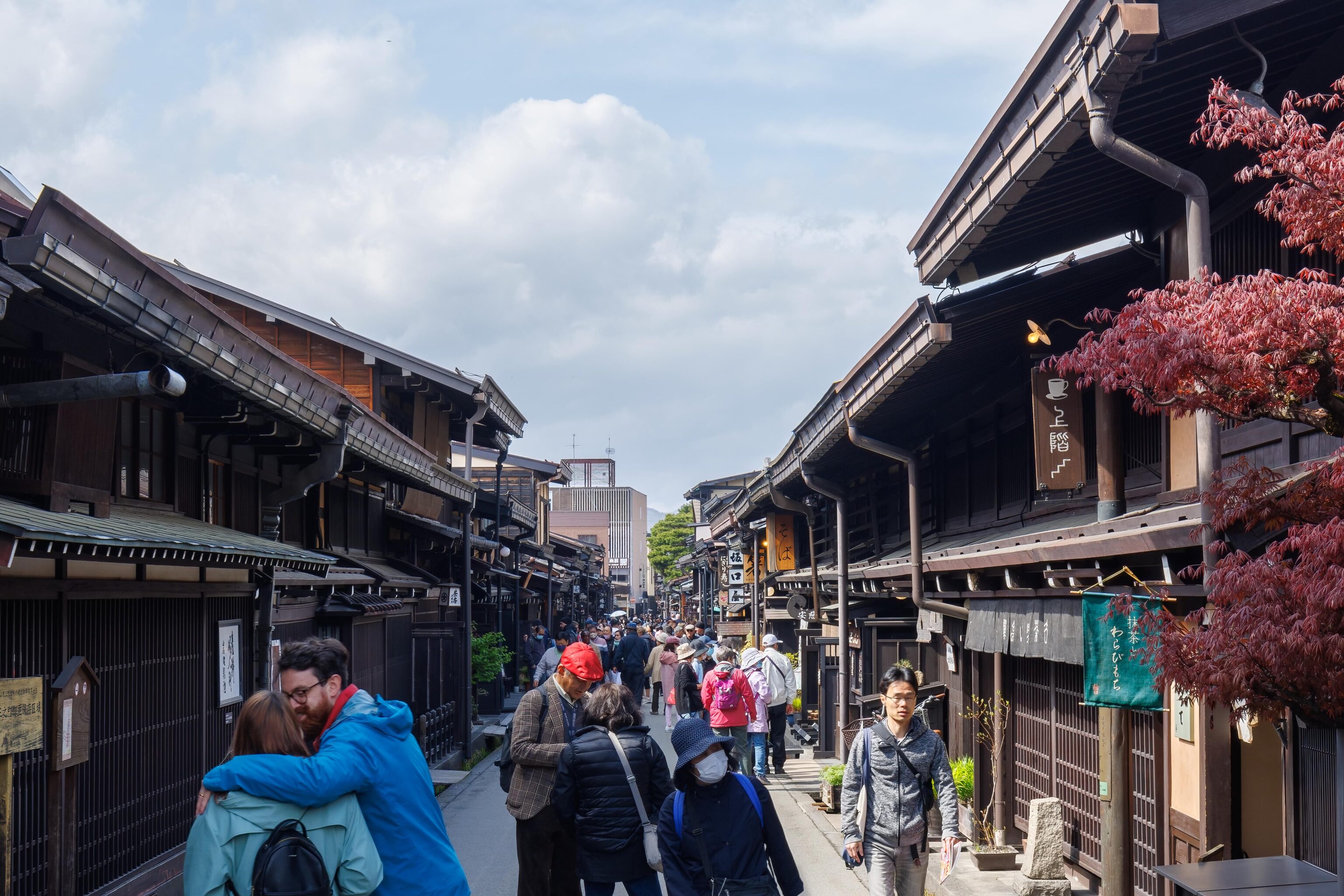
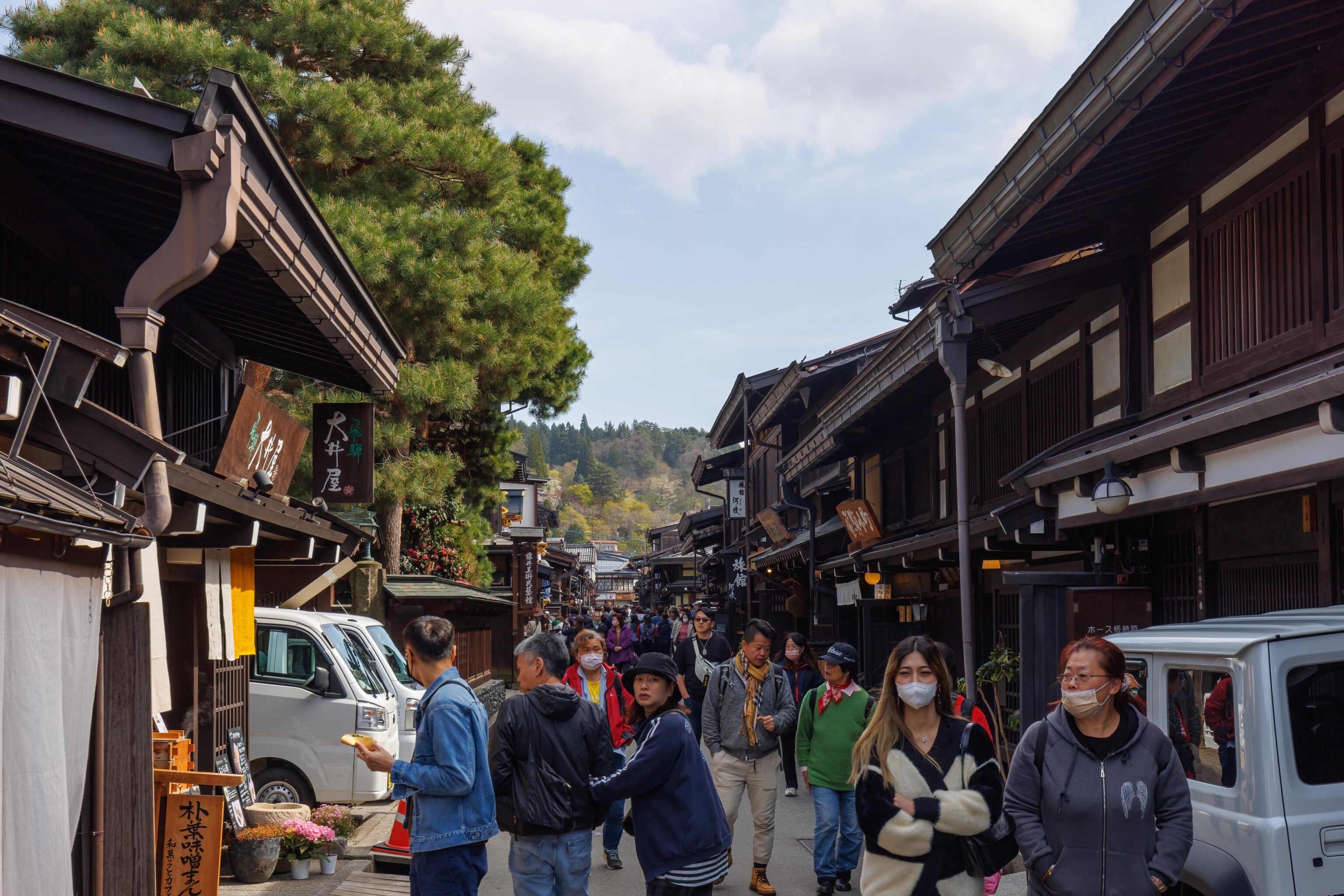
Other than at the JR station, we didn’t see too many people in Takayama. But once we entered the Sanmachi area, there were people everywhere, including tour groups. This area is lined with historic buildings that are in use today as shops, cafes, and restaurants.
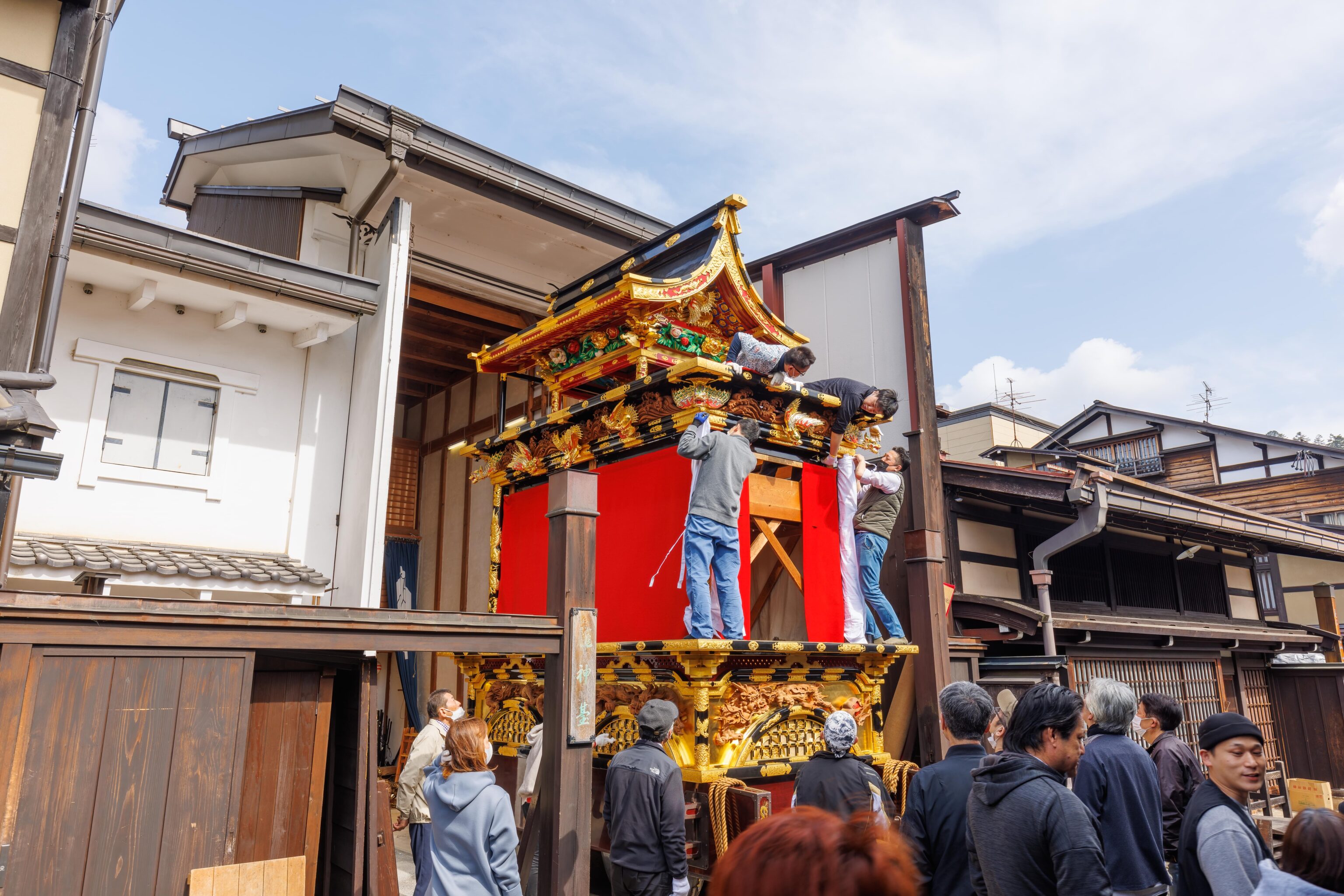
This portable shrine, perhaps described as a float in American English, was being prepared for a matsuri, or festival. We think it was for the Furakawa Matsuri in a town just to the north.
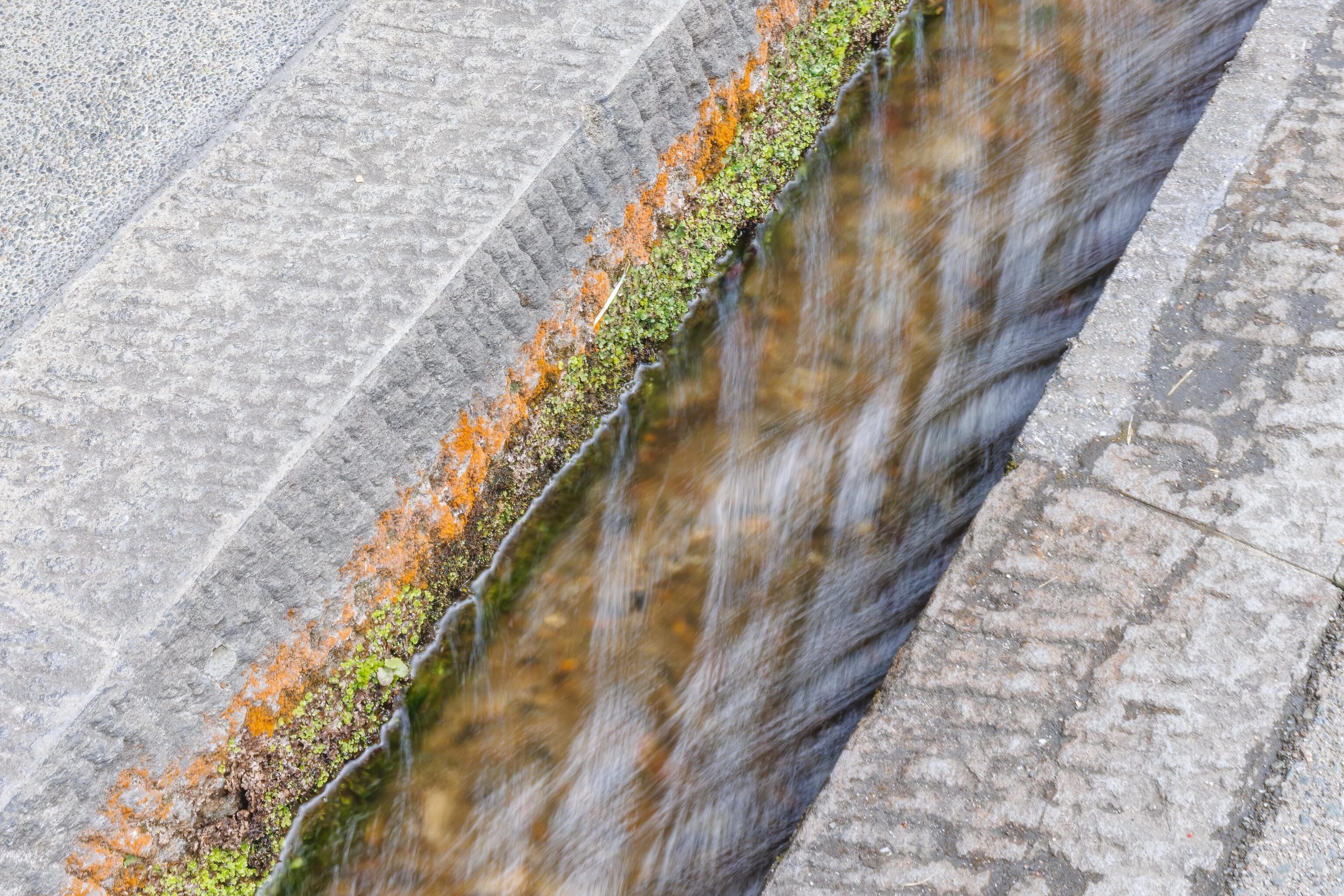
Water ran along both sides of the street in two small channels.
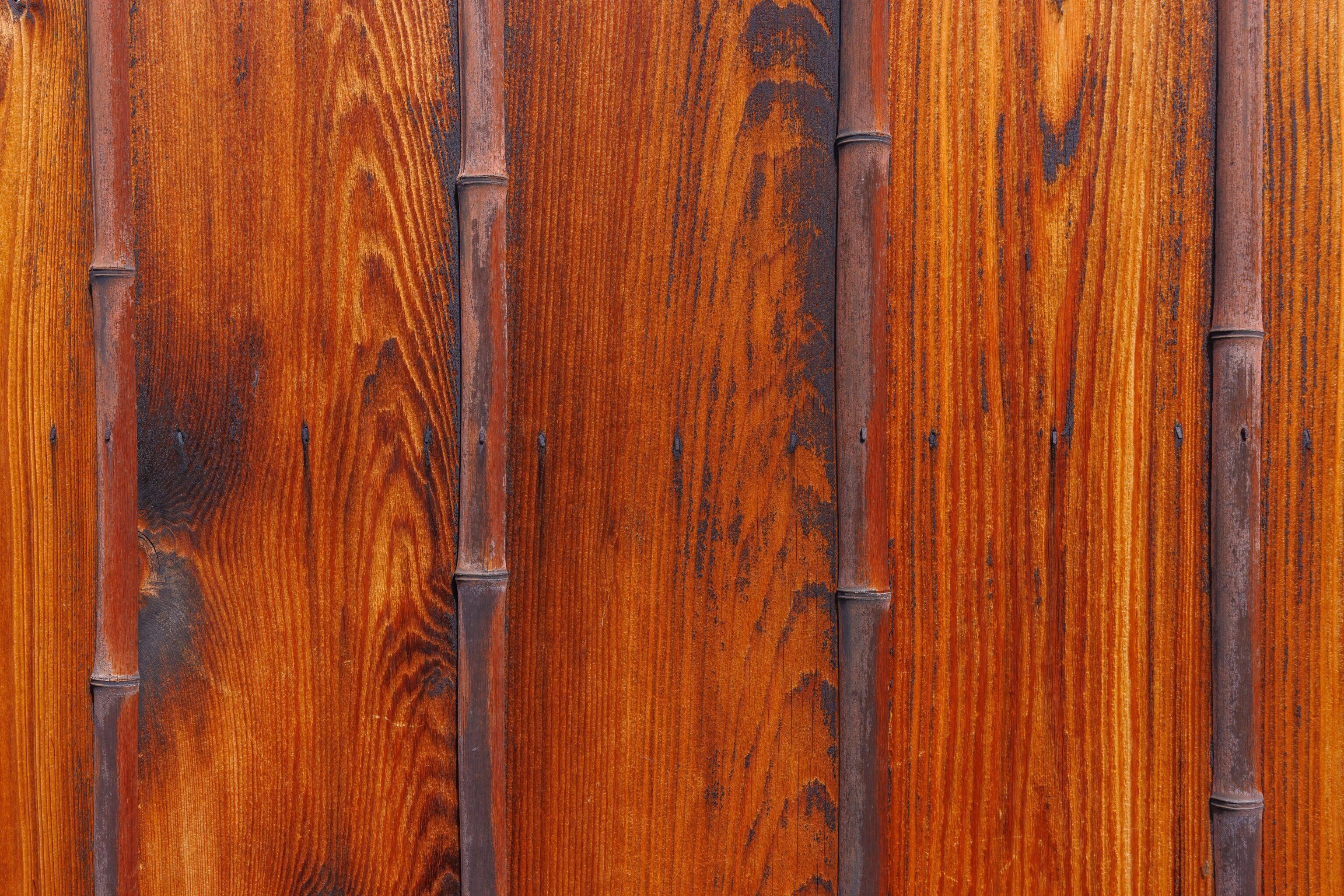
The wood and bamboo wall of one of the historic buildings.
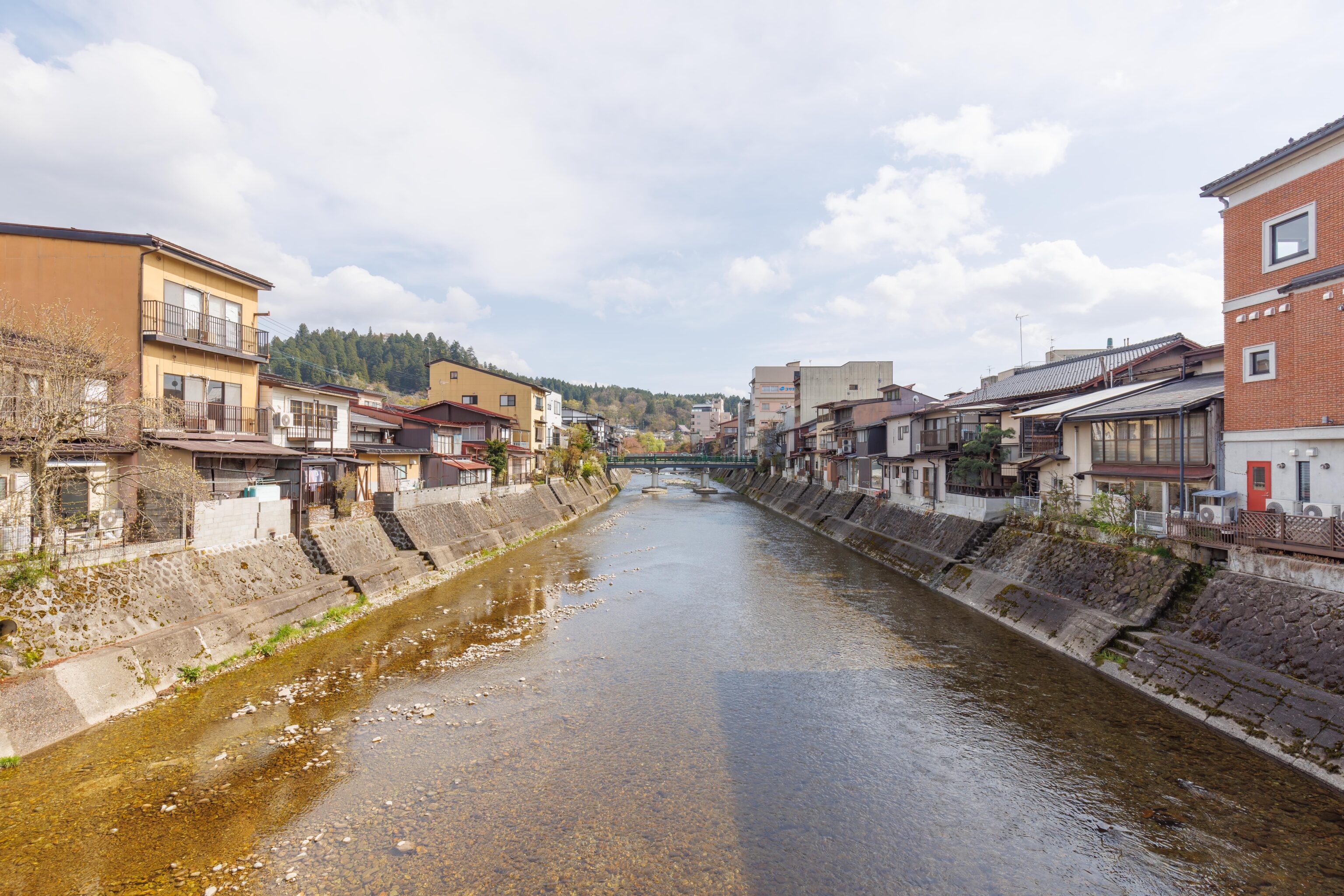
We went to the middle of the Kaji Bridge to check out the view. No trees here.
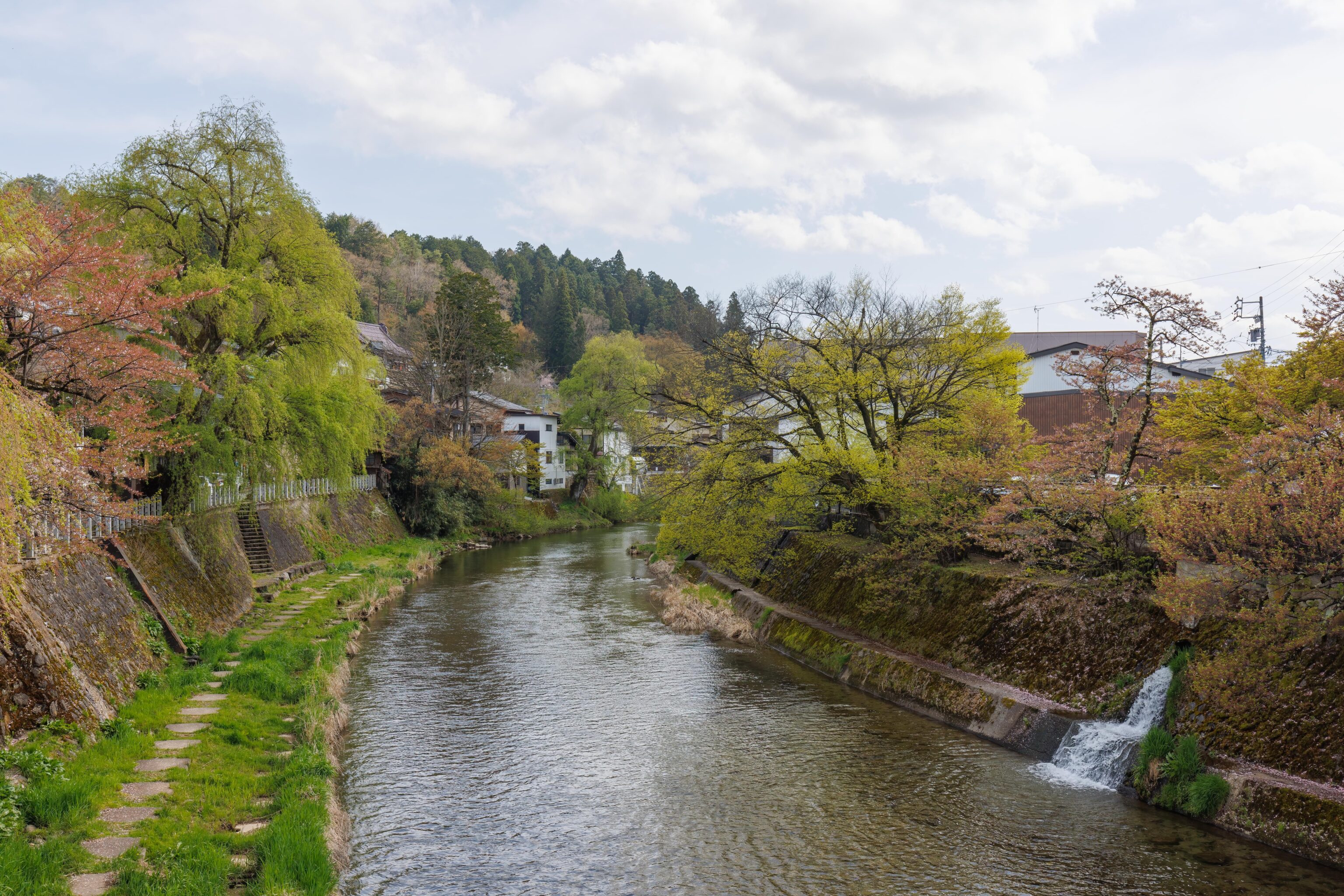
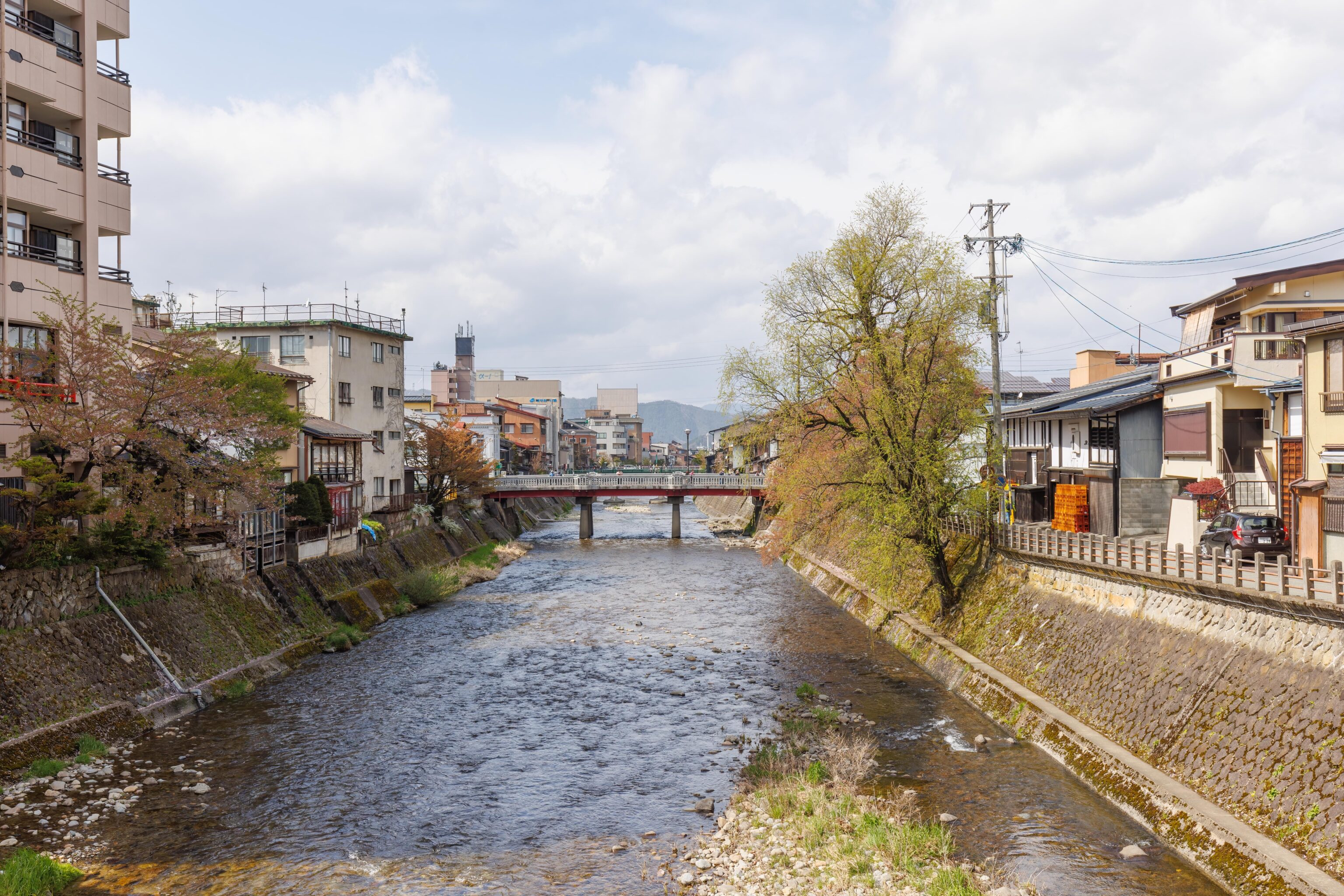
We ultimately crossed the river over the Nakabasi, the red bridge that we saw when arriving in Sanmachi. There are many trees on the southern side!
We then headed back to the JR station to catch the JR Hida back to Toyama to end our day.


